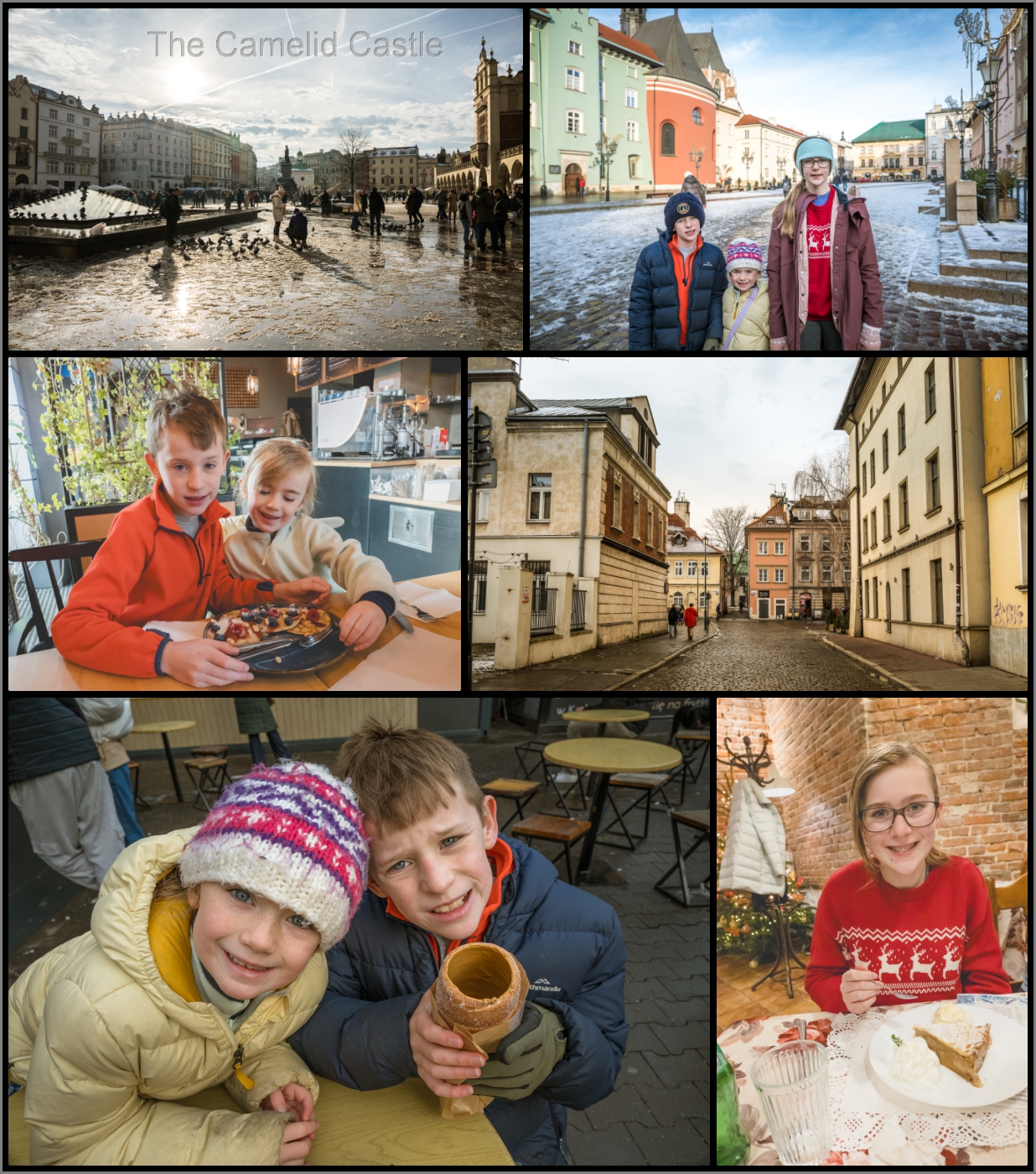It was the 5th of January, and we’d arrived into Krakow on the 3rd of January and we were yet to see any of Krakow during the day having arrived in darkness the first night. We then had a very long (and sub-zero) day trip to Zakopane in the Polish Alps the day before so today we were keen to see some of Krakow in the light!
Despite a long day and late night, everyone woke up not long after 7am and we were treated to a beautiful sunrise out our Krakow apartment window. There were plenty of snow capped roofs and snowy train lines.
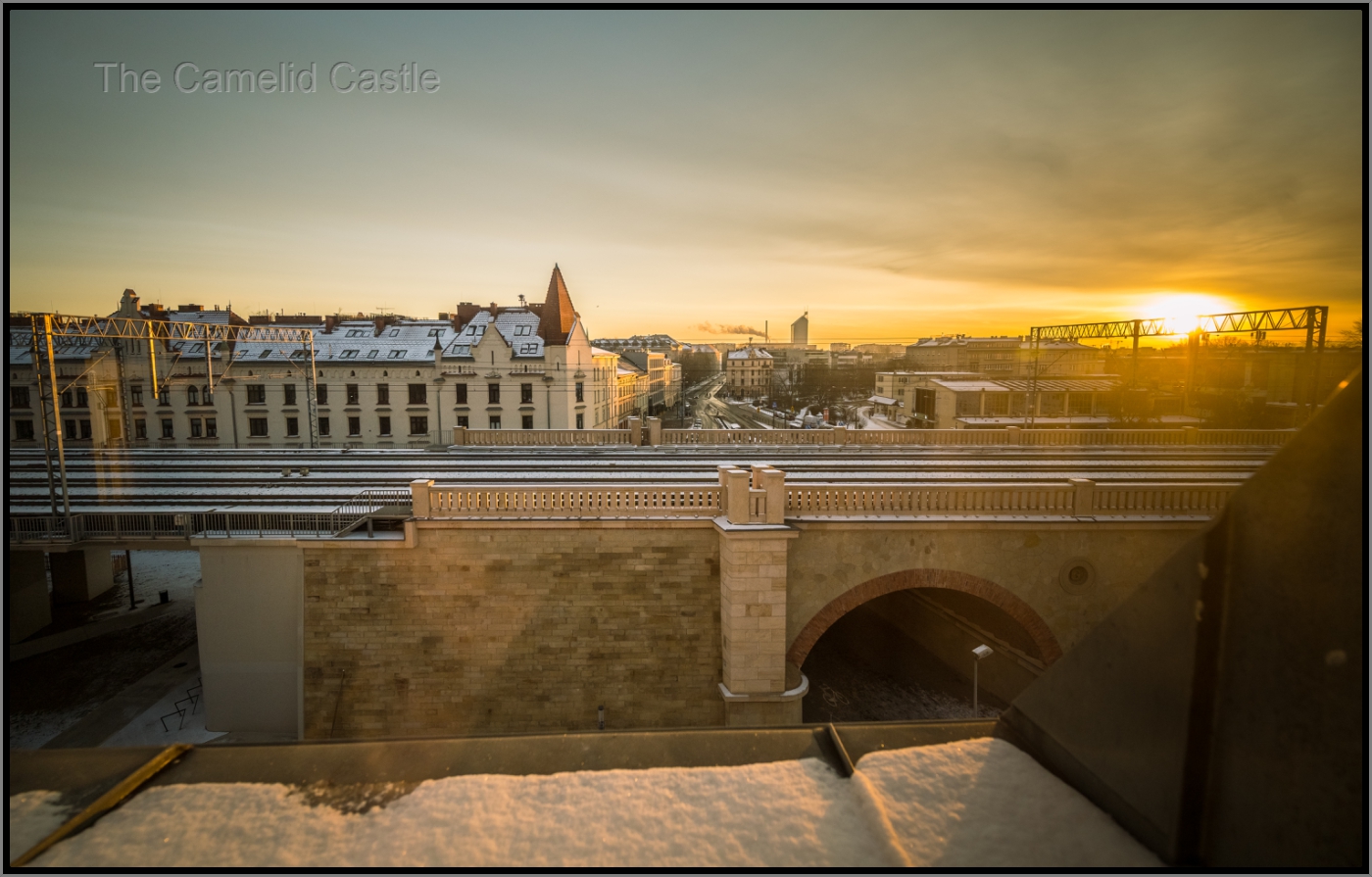
It was another cold day at minus 6 (feels like minus 8), but it was clear and sunny so a good day for exploring. Our apartment is on the edge of the Old Town, so the plan was to hit most of the main tourist sites and see how far we got.
Snowy Planty Park
There was still plenty of snow on the ground, and a fair bit of ice, so snow boots were required. The Old Town is very pretty and I took the most photos in a single day of the whole 7 week trip. Krakow in the snow was just beautiful!
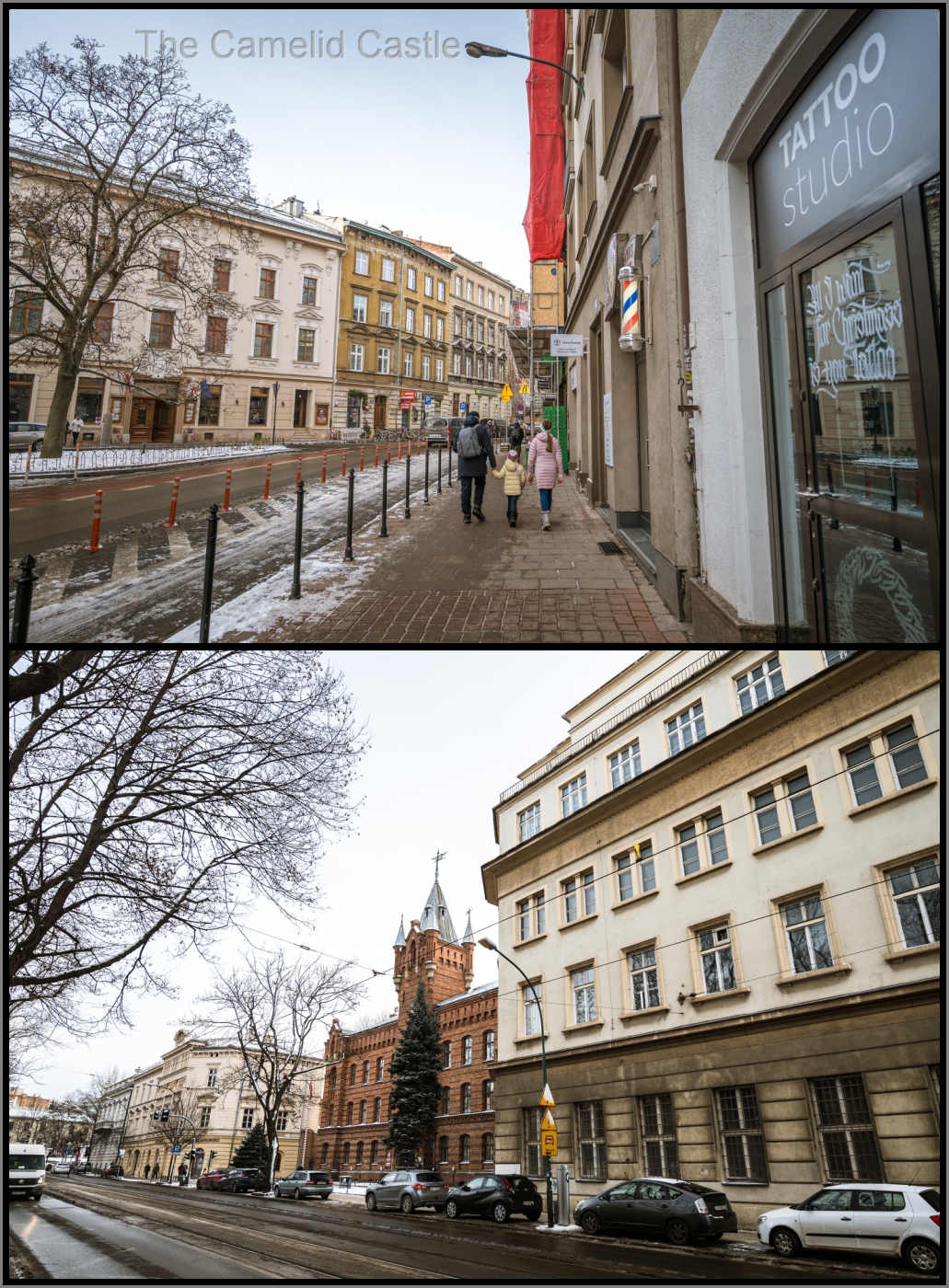
We head out just after 9.30am and it was still minus 6, but clear and no wind, so with all our winter gear on and some hand warmers it wasn’t too cold. We first checked out our immediate neighbourhood and quickly found Planty Park, one of the largest city parks in Krakow. It encircles the Old Town, where the Medieval city walls used to stand until the early 19th century.

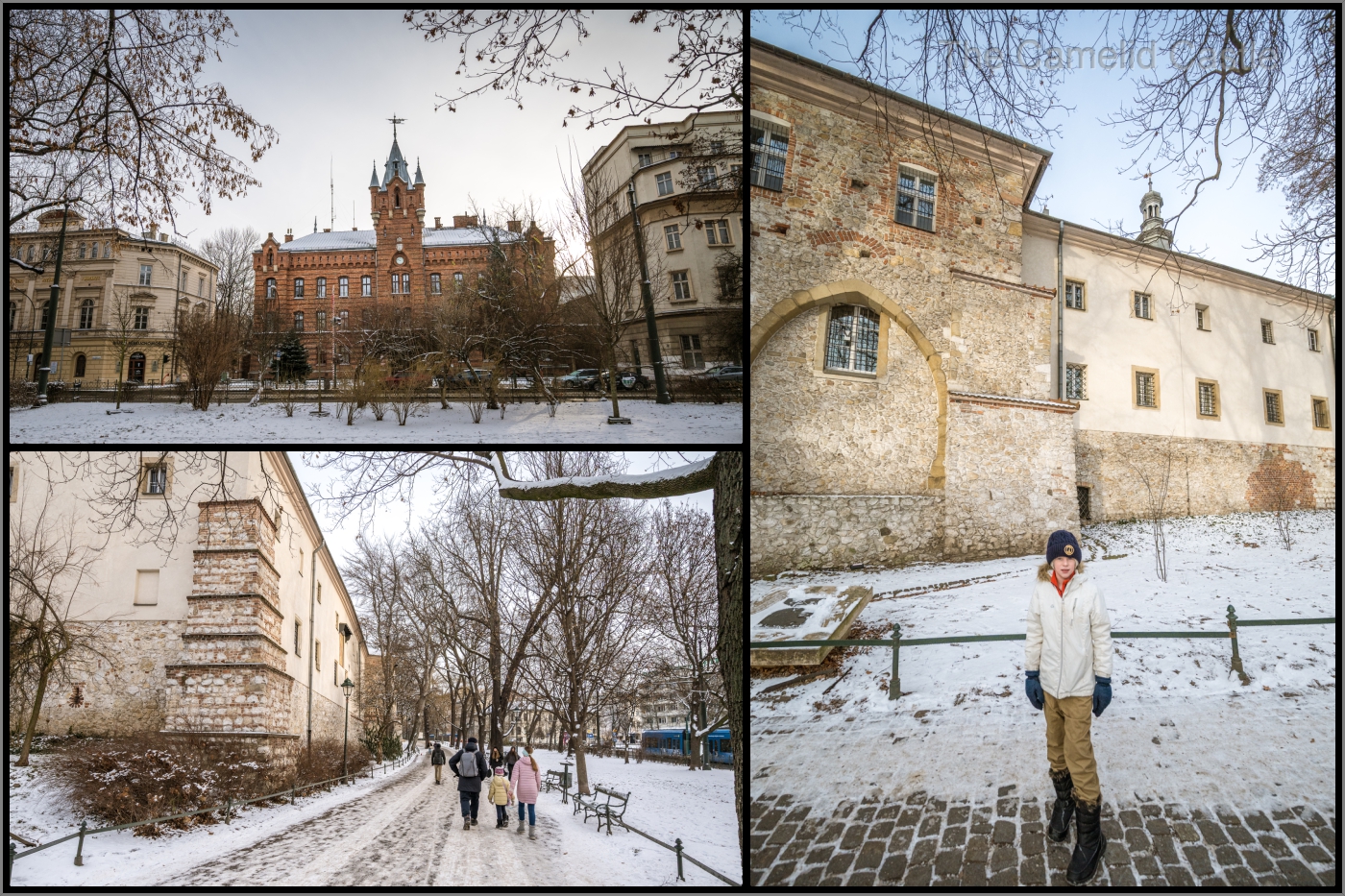
The park has an area of 21 hecatres and is 4km long. It consists of a chain of 30 smaller gardens designed in various styles and containing many monuments and fountains. At the moment it was very much under snow but was rather beautiful to walk through.
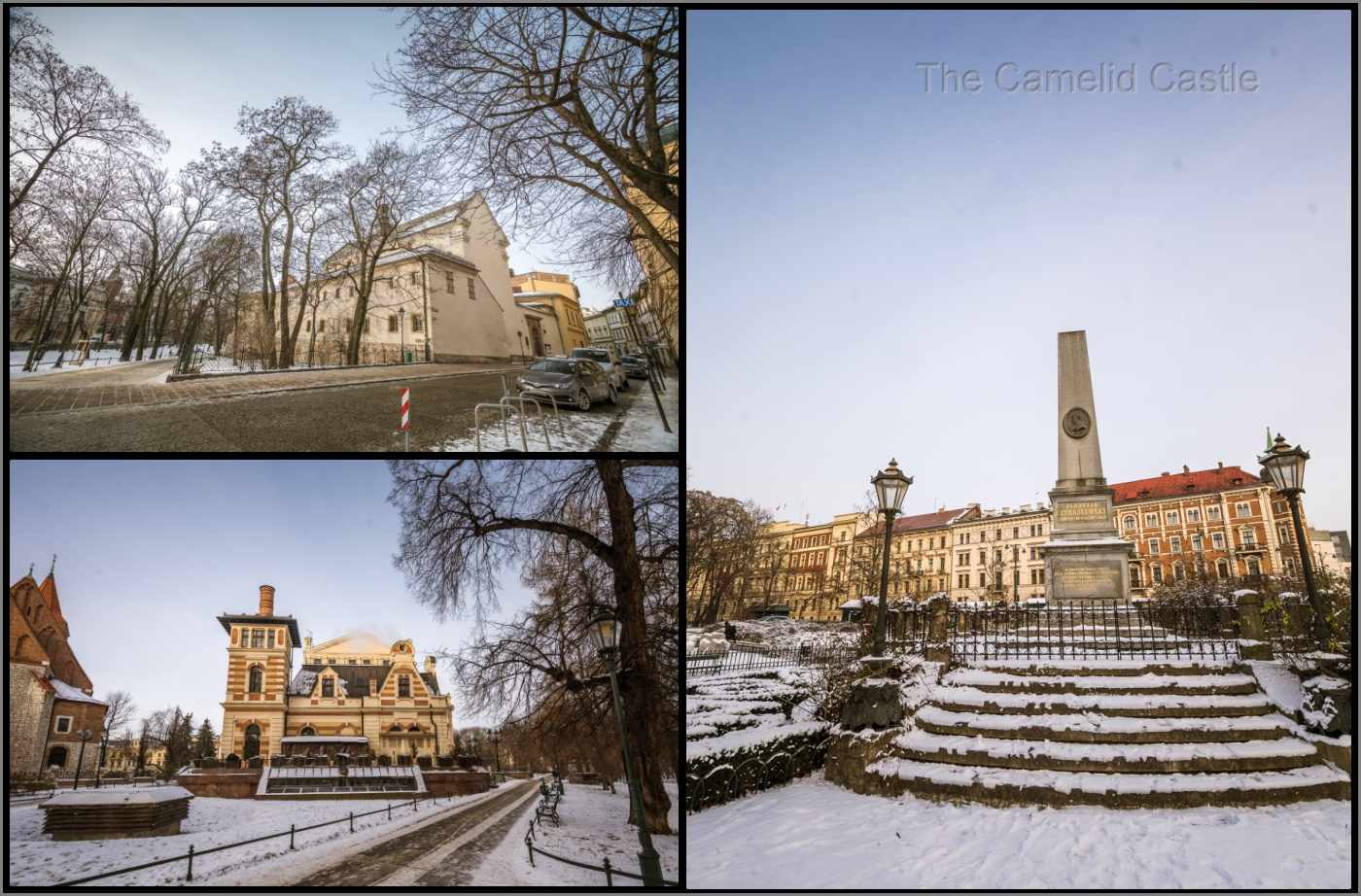
It was a Sunday and pretty much every Sunday of our trip it had been very crowded out, no matter which European city. Apparently Krakow in minus 6 in the depths of Winter is less busy as we didn’t have to fight many crowds, only the odd small tour group. We enjoyed walking through the park pretty much on our own.
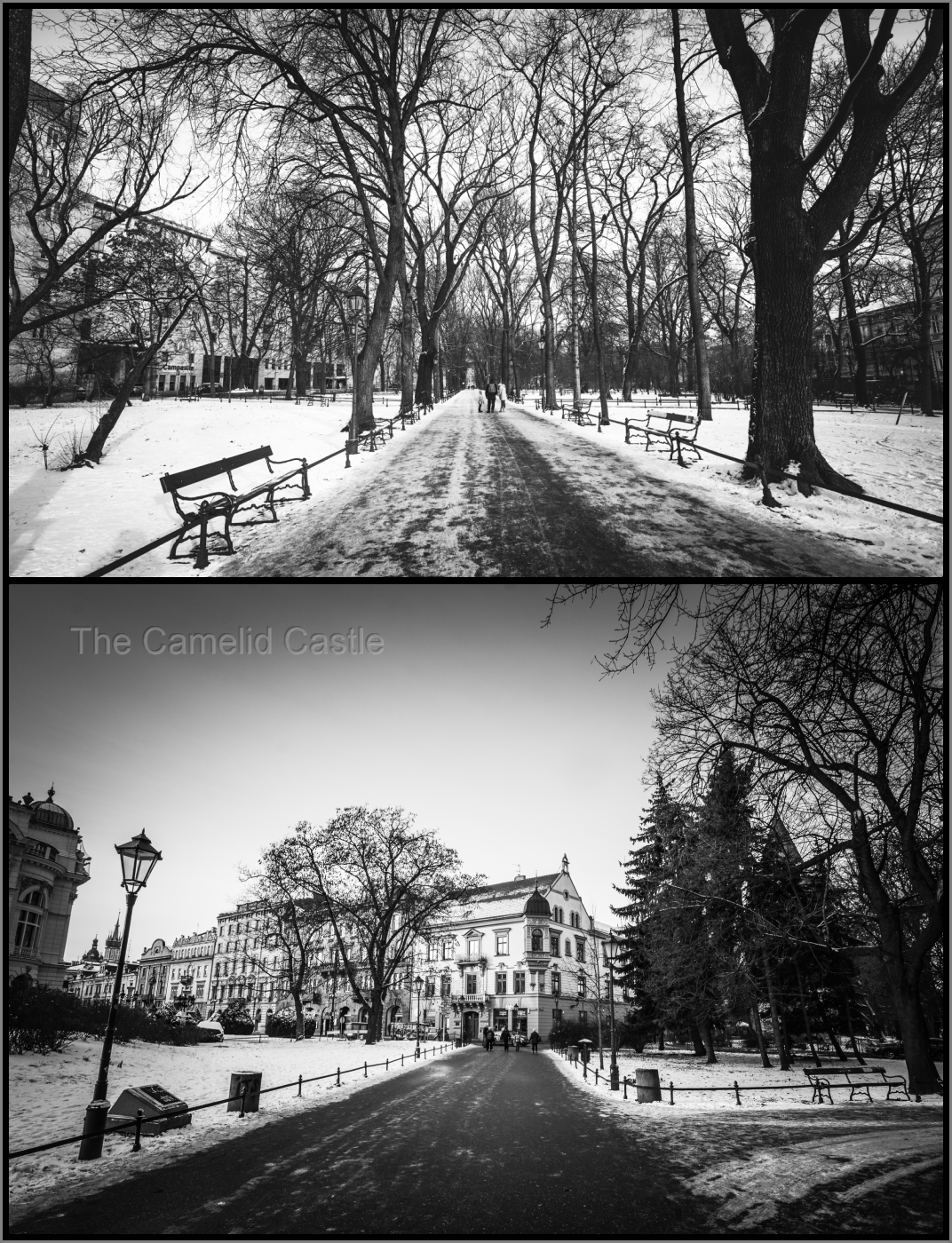
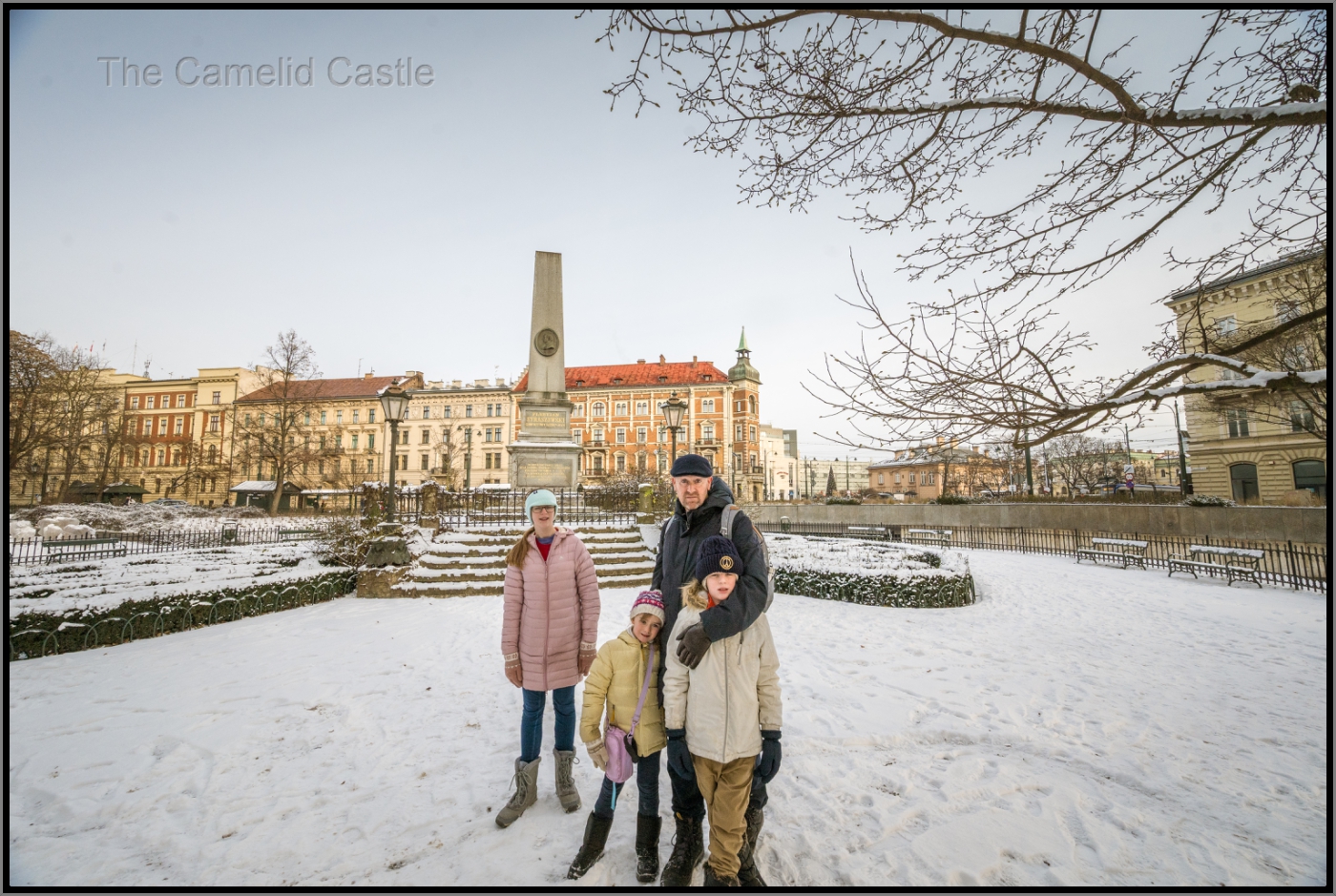
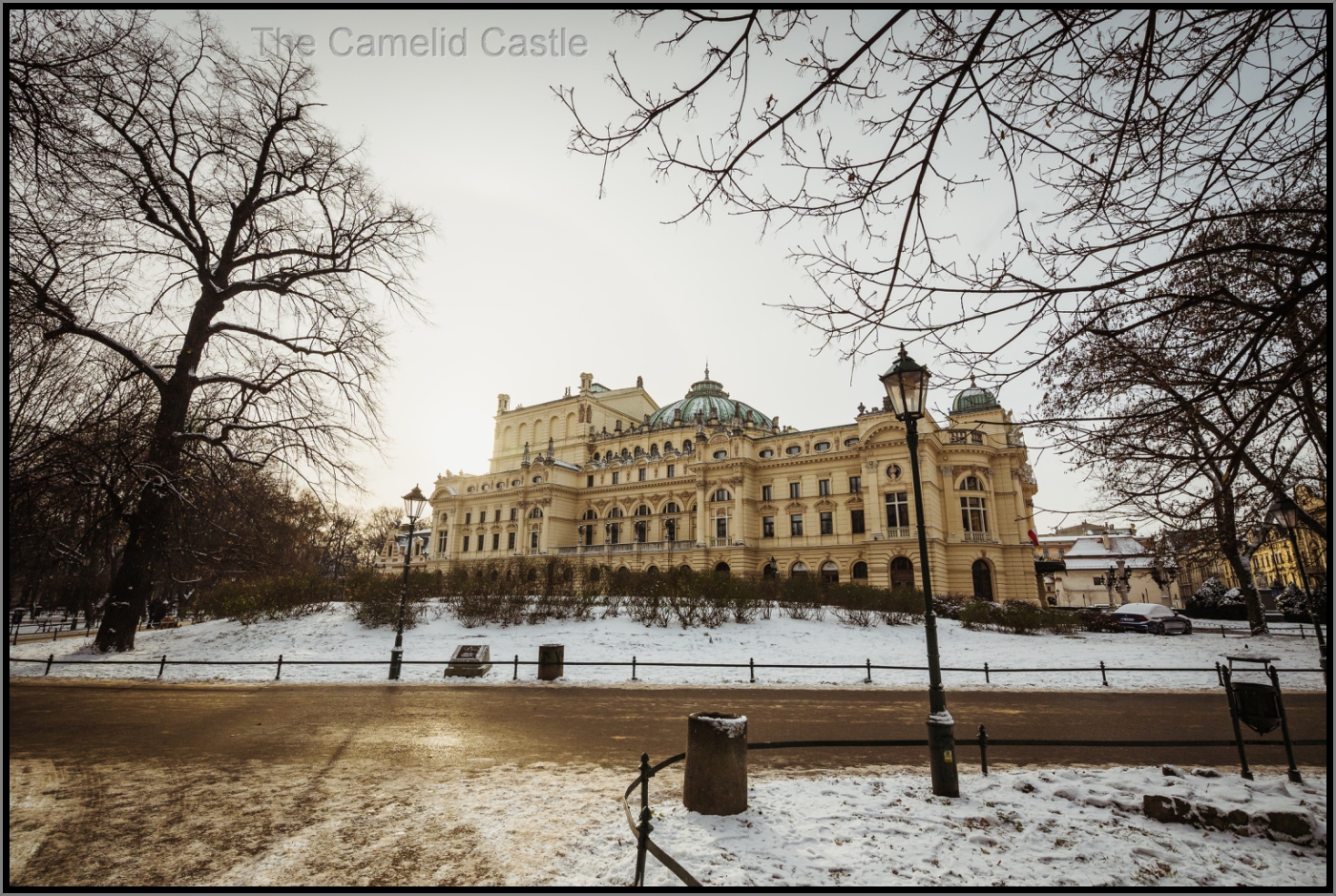
The City Walls
Pretty soon we reached the Old City Walls. The walls were originally built in the 13th century and were 3.2km long and 3 metres thick, with 8 gates and 39 towers and surrounded by a moat. In the 19th century they were destroyed except a 200m section of the walls, and Florian’s gate.
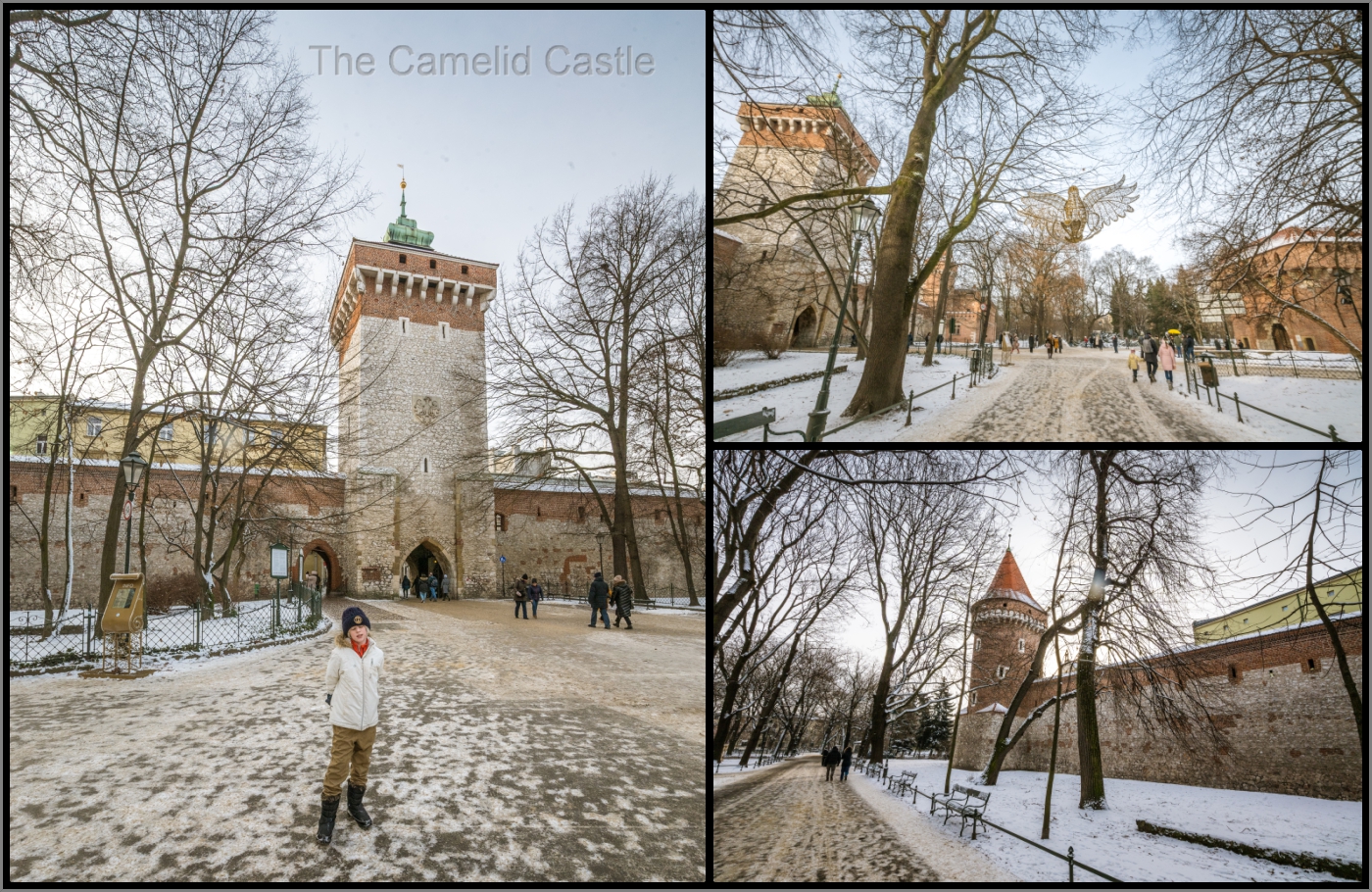
This 35m high tower of Florian’s Gate leads onto Floriniska Street and into the heart of the Old Town. The Barbican (a fortified outpost connected to the city walls) was built at the end of the 15th century and is one of the best preserved examples of a Barbican in Europe.

It was rather spectacular looking in the snow and crisp winter light.
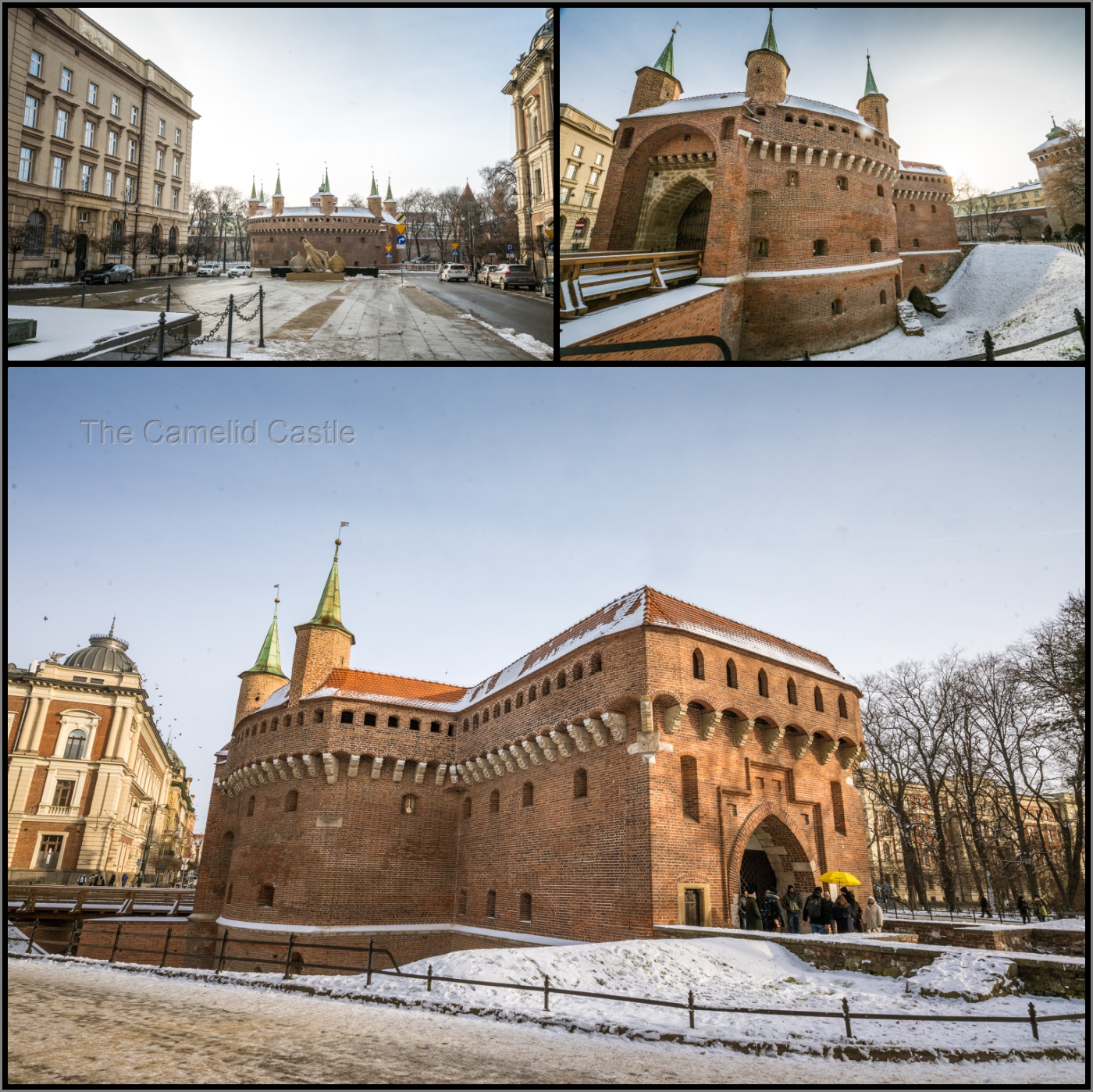
We loved so many of the statues. We all thought the Grunwald Monument (which is an equestrian statue of King of Poland Wladyslaw II Jagiello was particularly dramatic and reminded us of Astrid’s dramatic tantrums. She did not particularly agree with us!
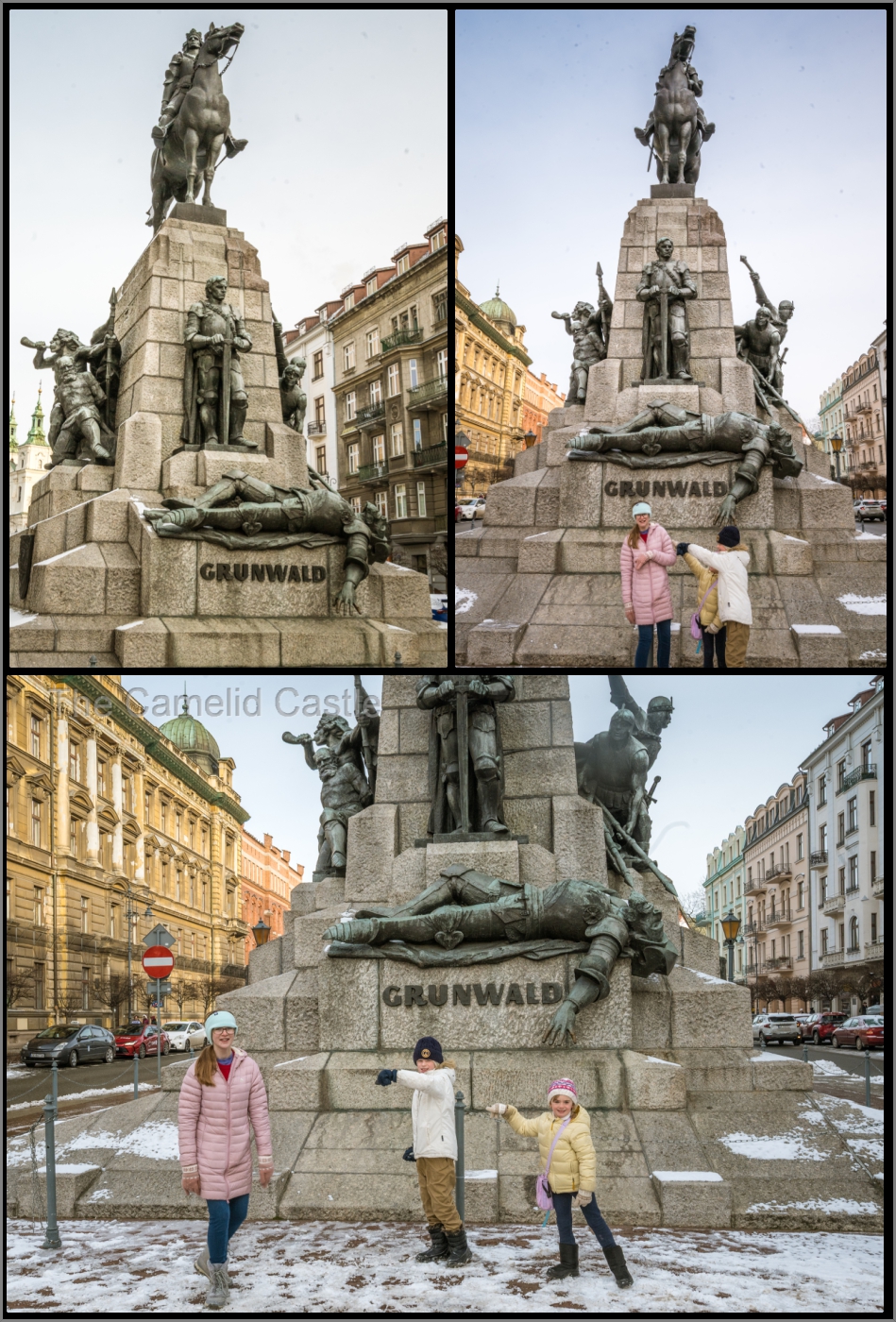
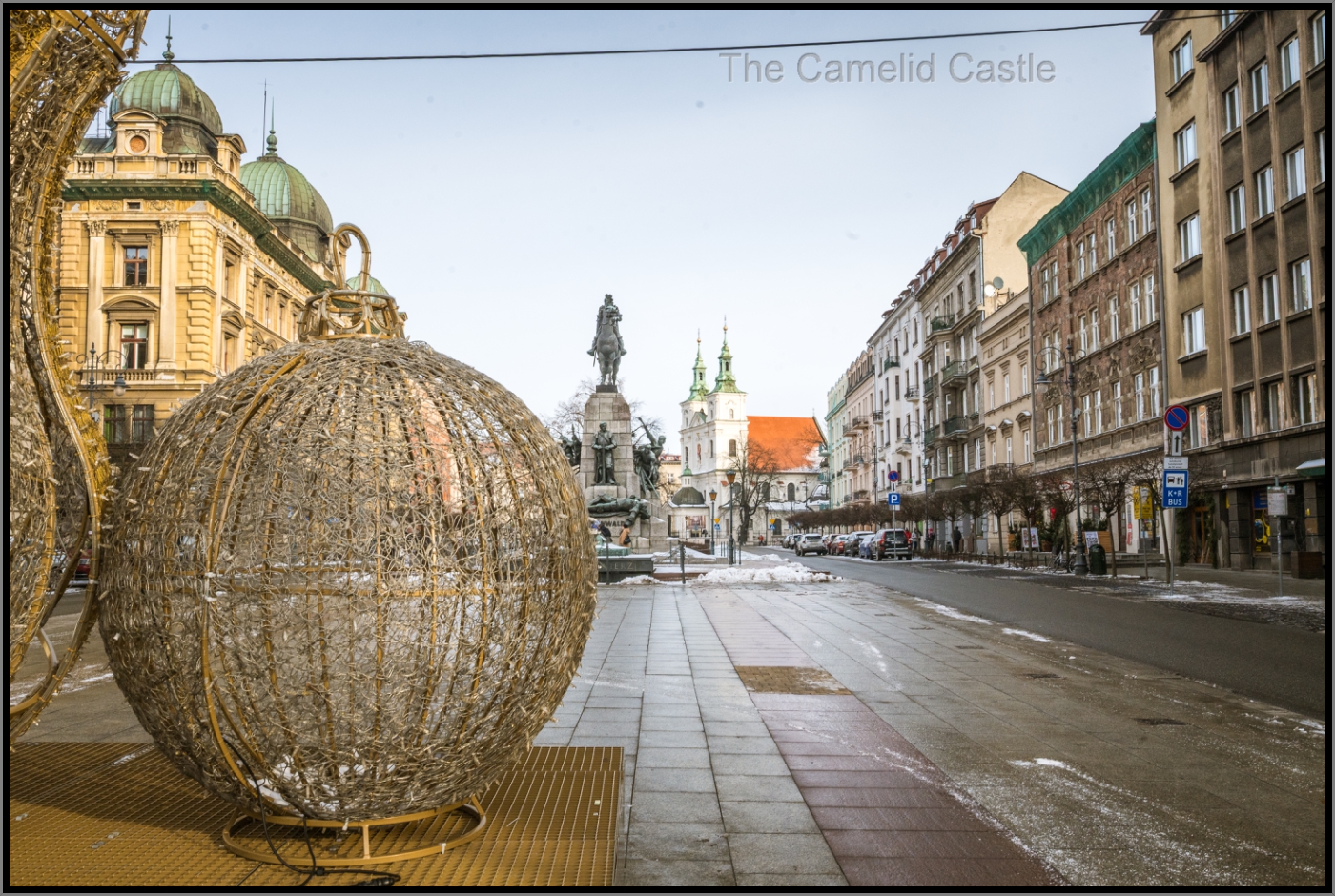
Everywhere you looked there were beautiful buildings and plenty of interesting statues and street art. They also still had Christmas lights and decorations up.
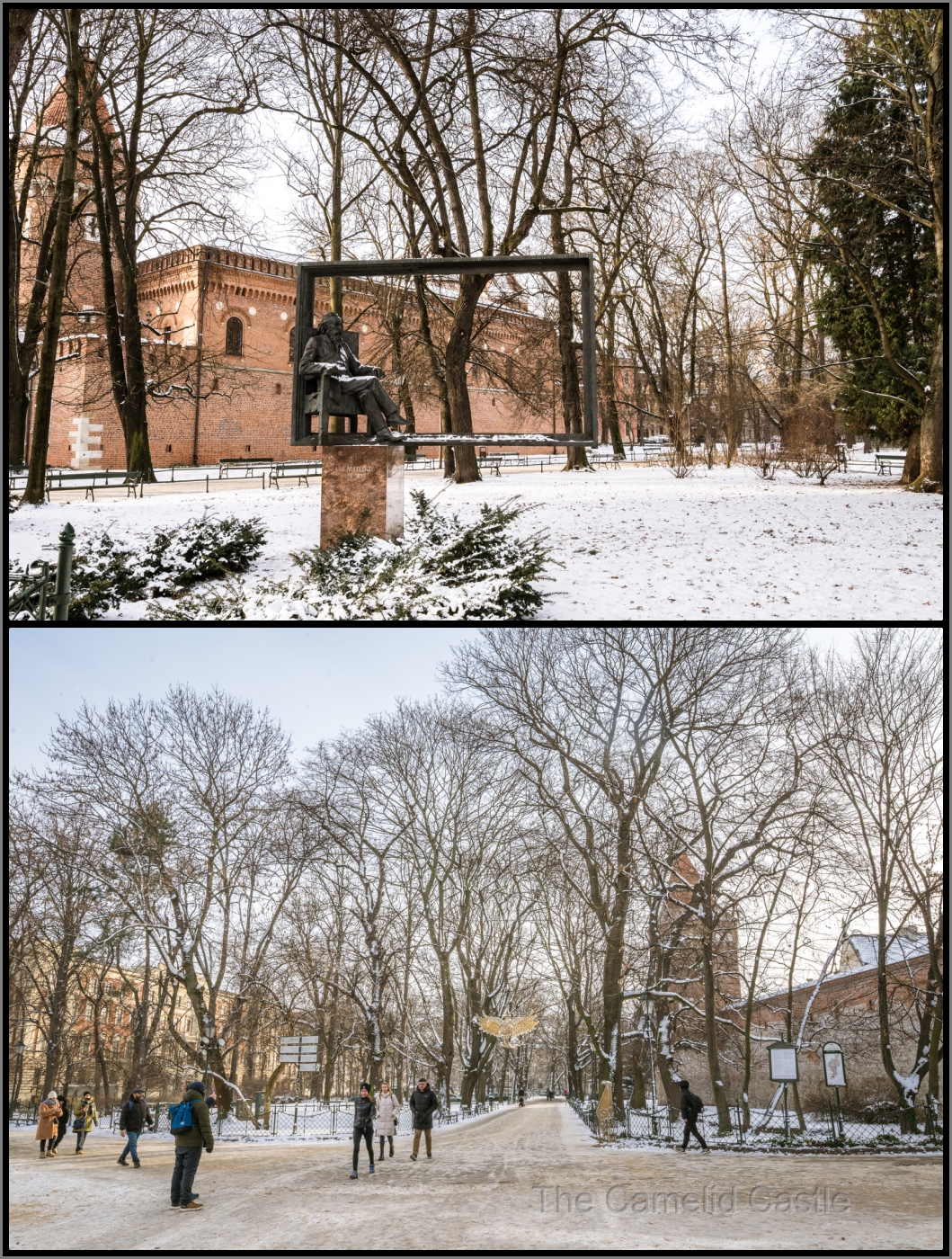
After checking out Florian’s Gate and the artists setting up for the day, it was a walk down the famous Floriniska street.

The Old Town
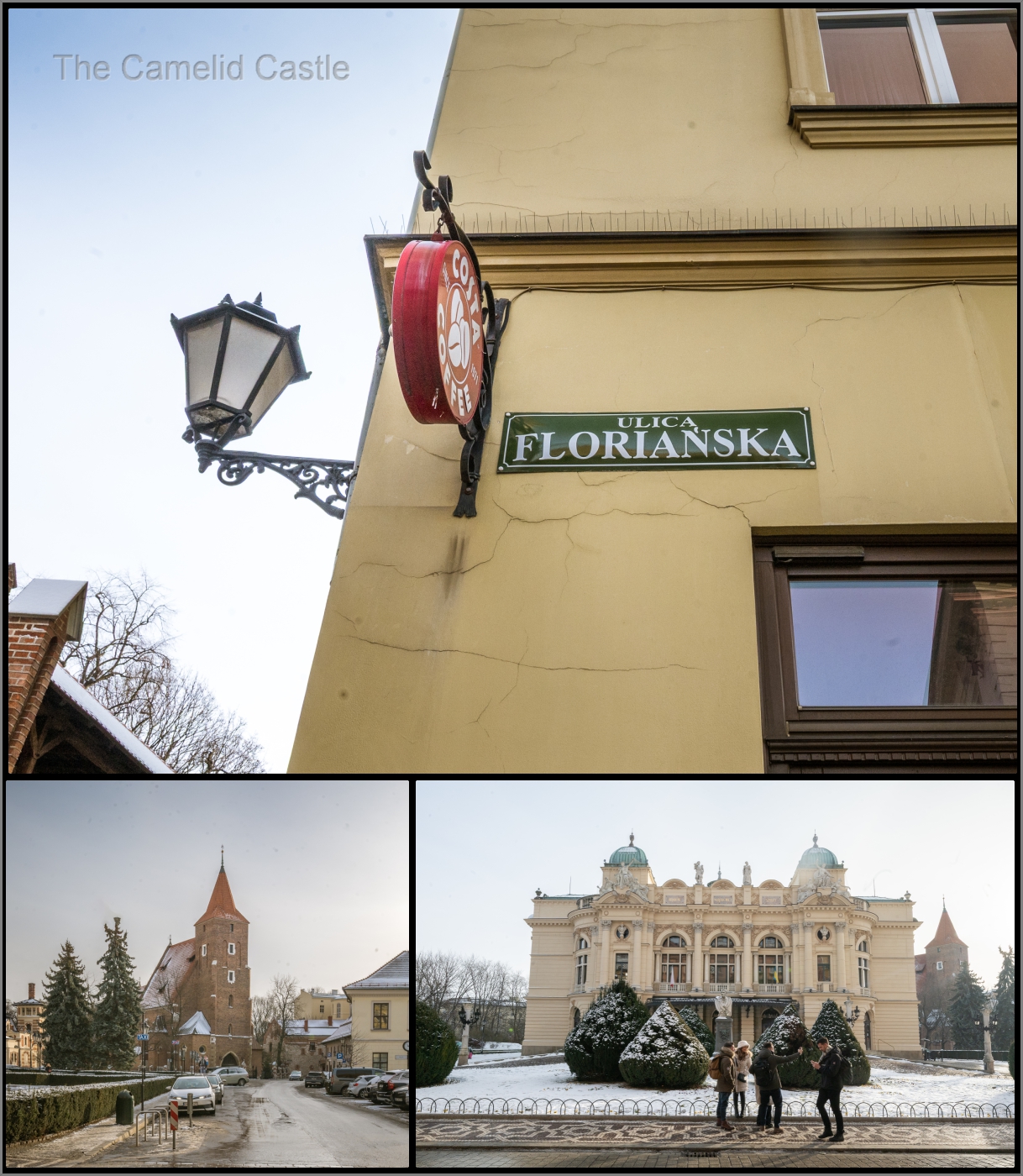
We checked out the beautiful Juliusz Slowacki Theatre, which was modelled after Palais Garnier in Paris. It is a lot smaller than Palais Garnier but you can see the resemblence. It also had an interesting art piece outside with clocks showing the current time in a range of cities.
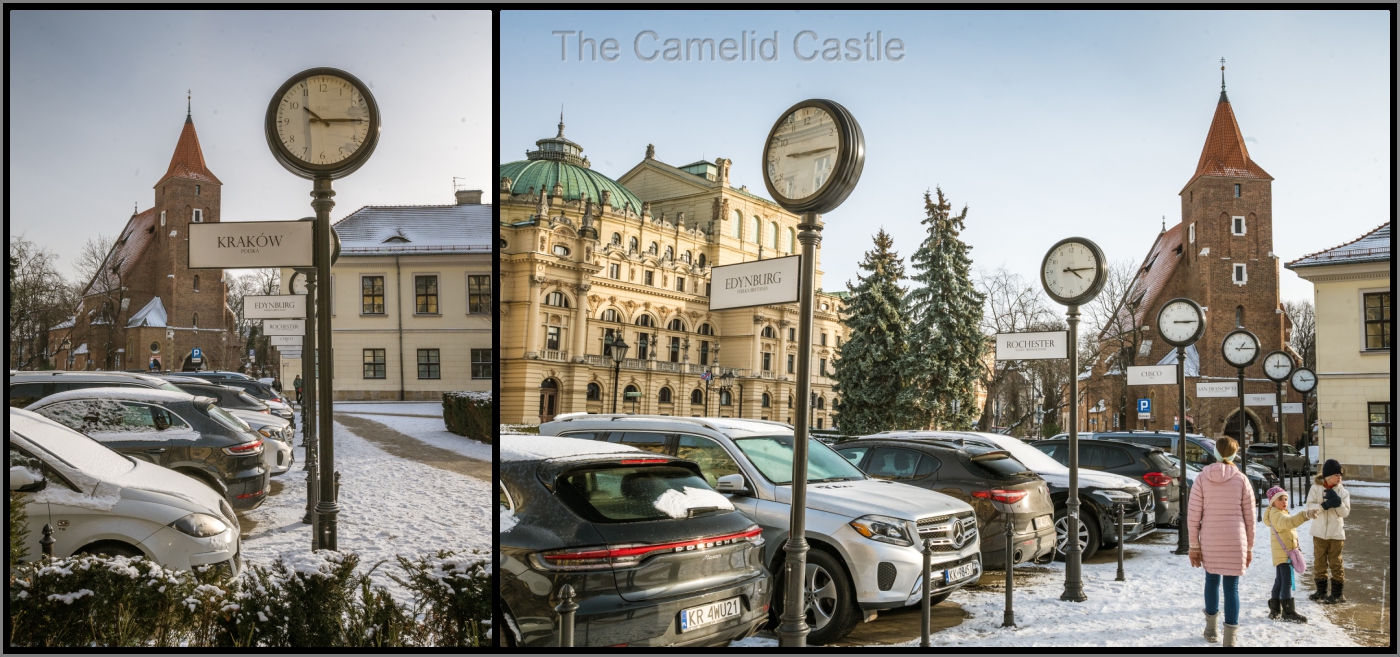

It continued to be surprisingly quiet around town, without the big Sunday crowds and we all commented on how quiet it was. It was still very cold at minus 5 so that might have had something to do with it! We loved that even the locals who were riding bikes had attached hand warmers on their handle bars.
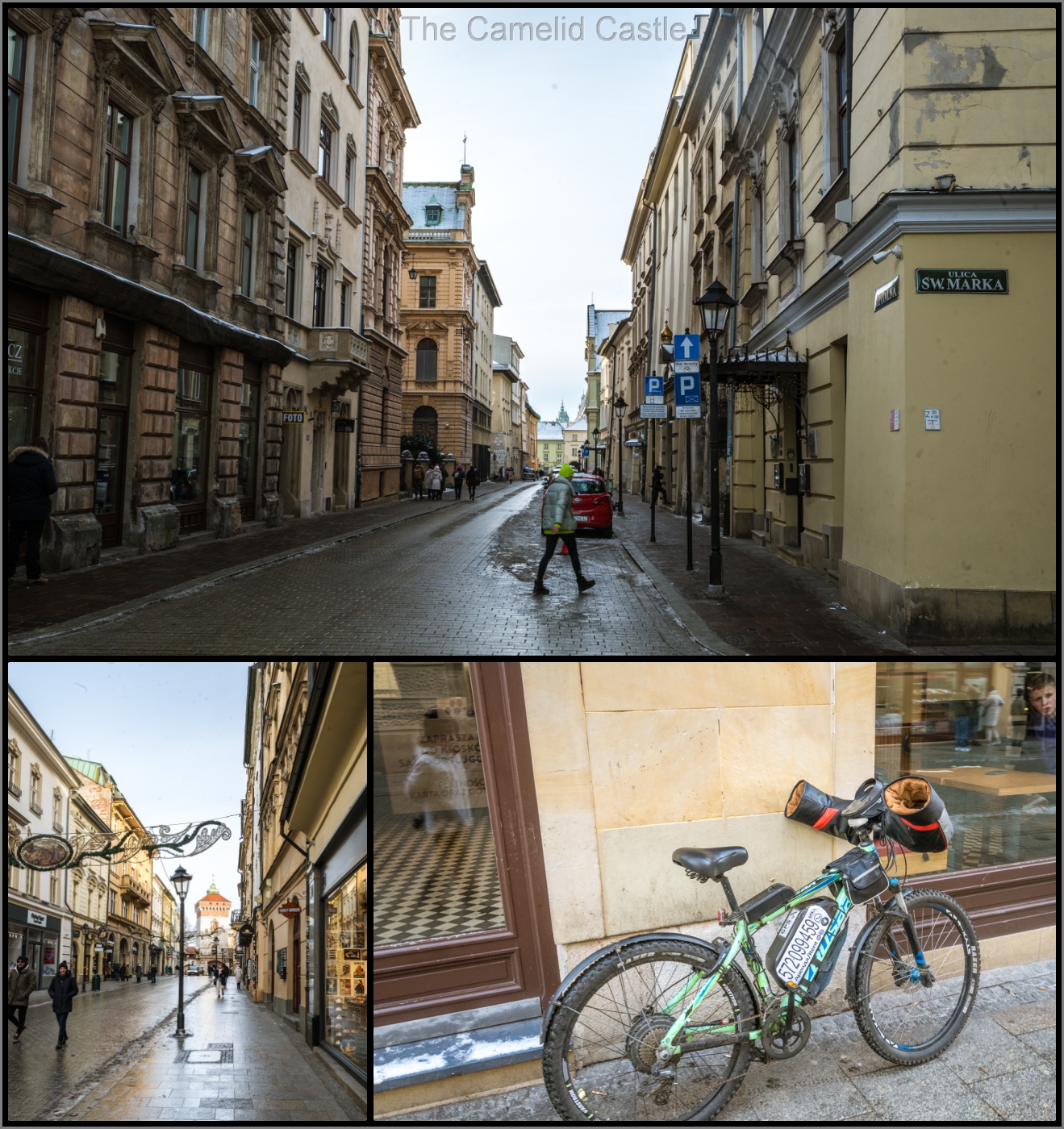
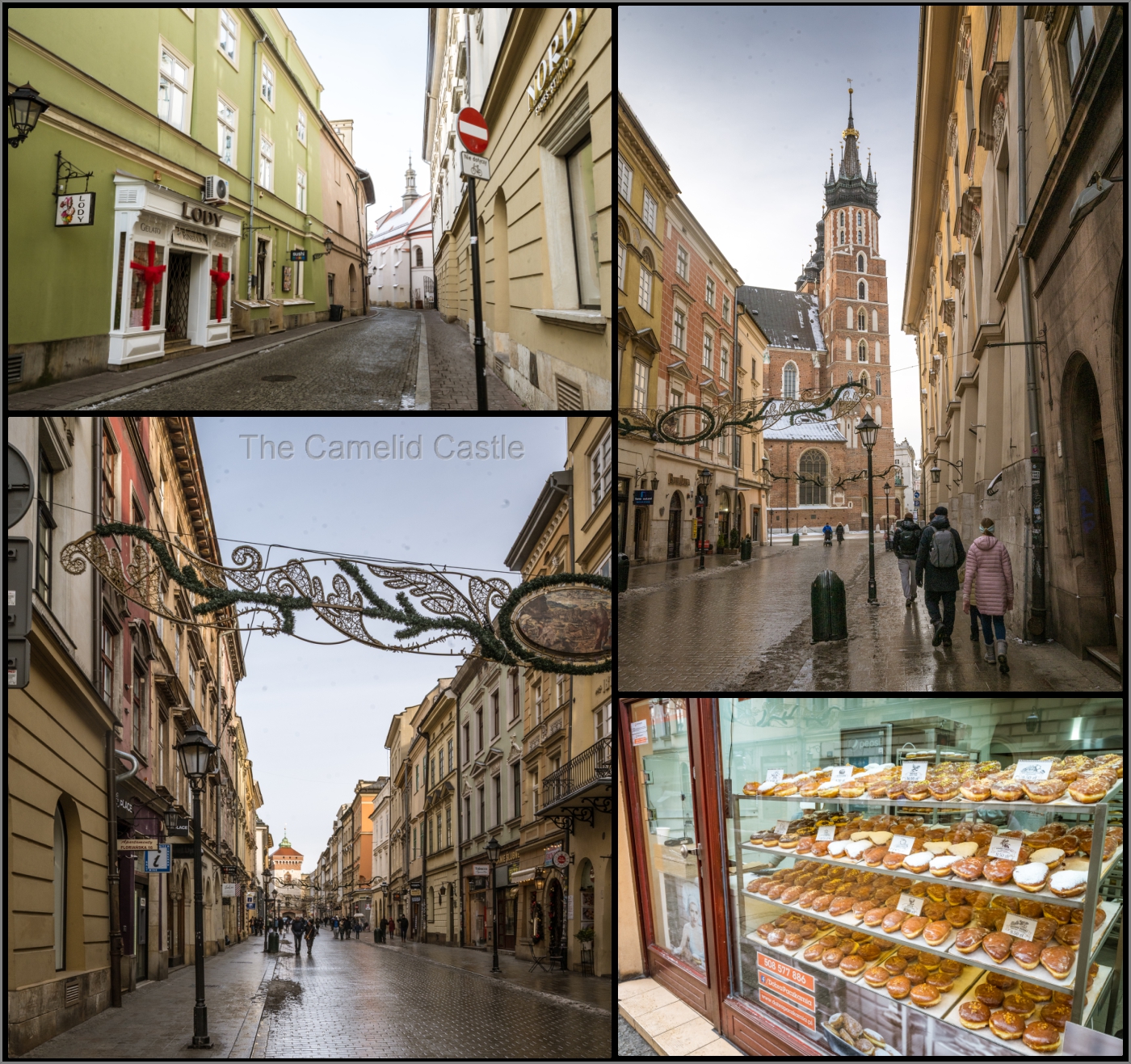
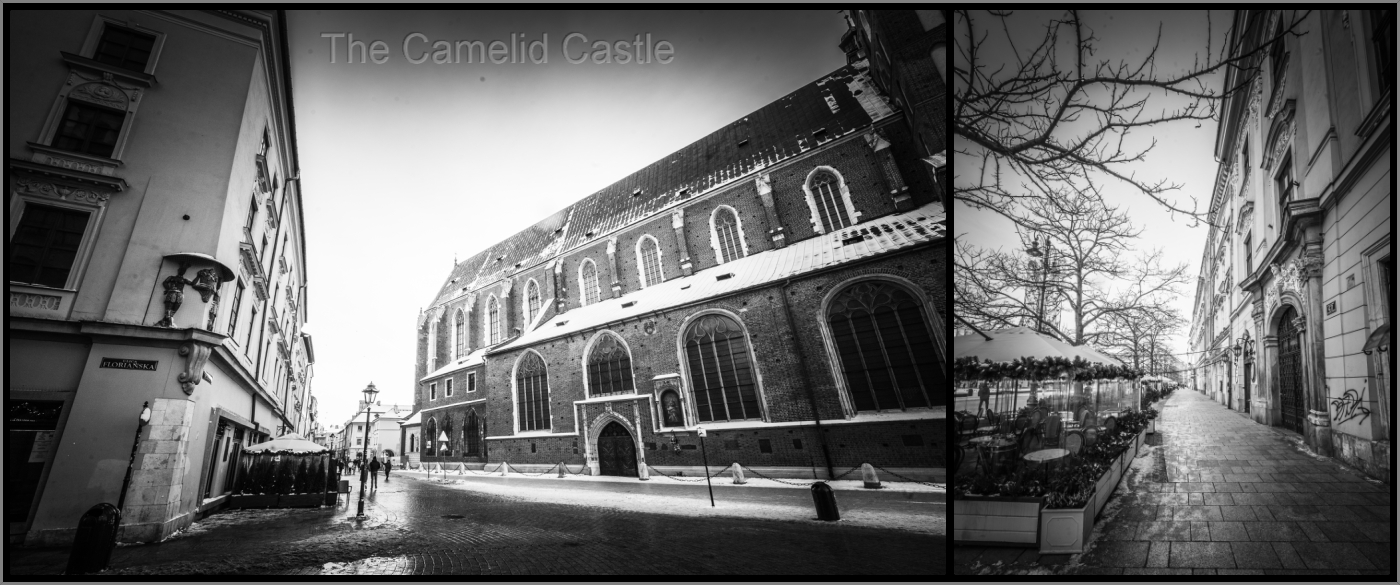
Rynek Główny
Soon we made it to the main Market Square or Rynek Główny. This square dates back to the 13th century and is covers an area of almost 3.8 hectares making it the second biggest medieval town square in Europe (Charles Square in Prague is double the size).
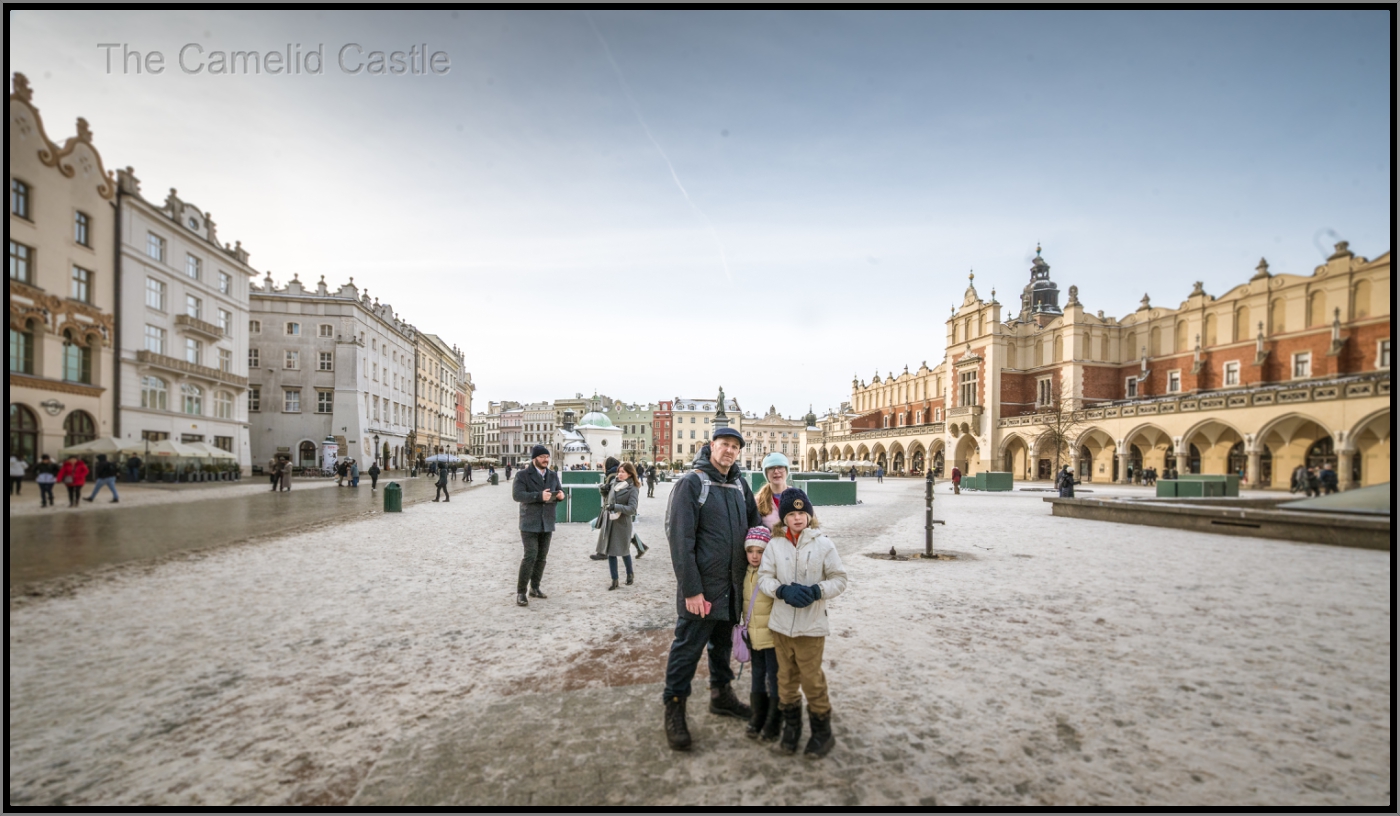
Rynek Główny is surrounded by historic houses and churches but the centre of the square is dominated by the renaissance styled Cloth Hall, a UNESCO World Heritage Site.
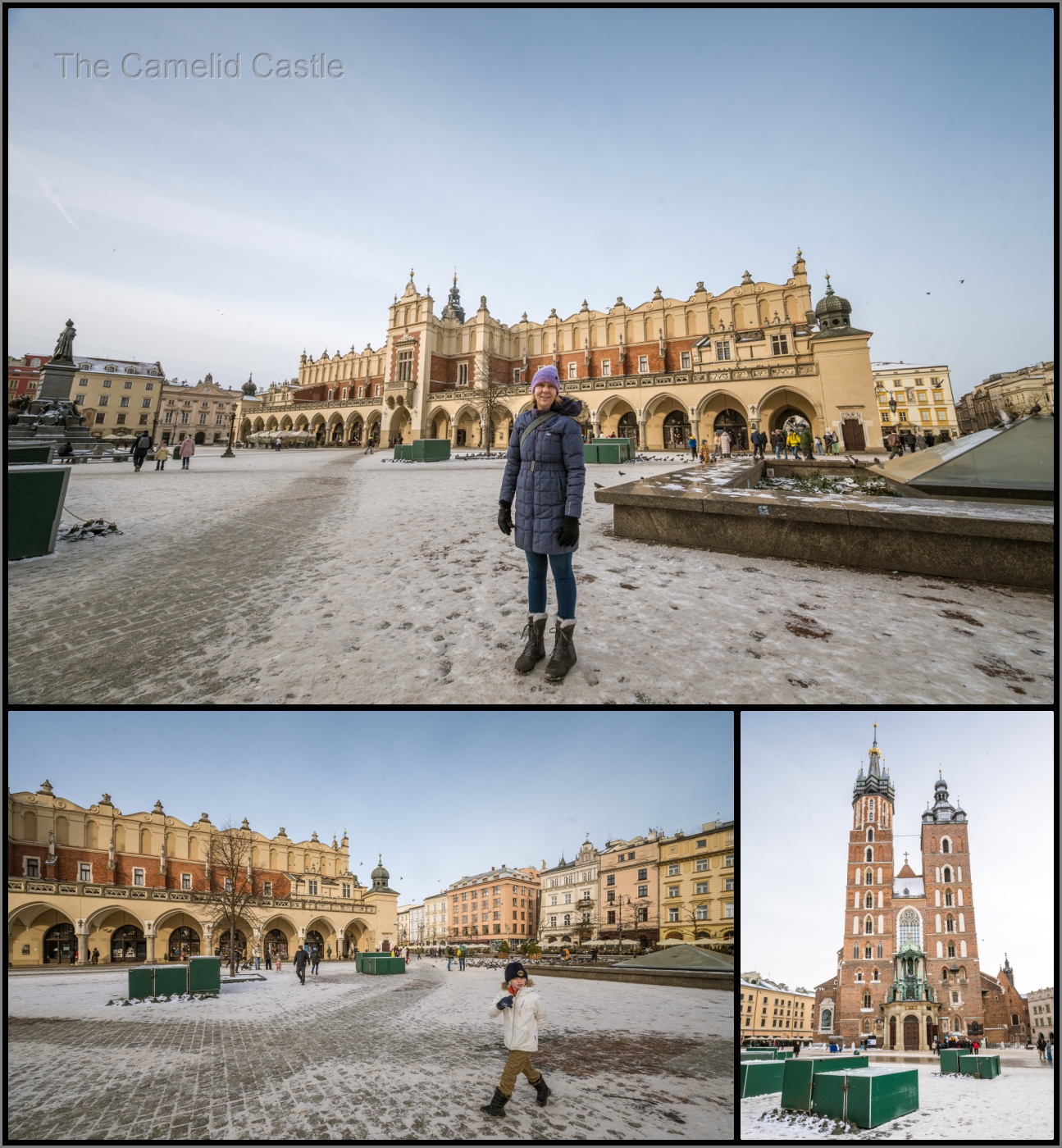
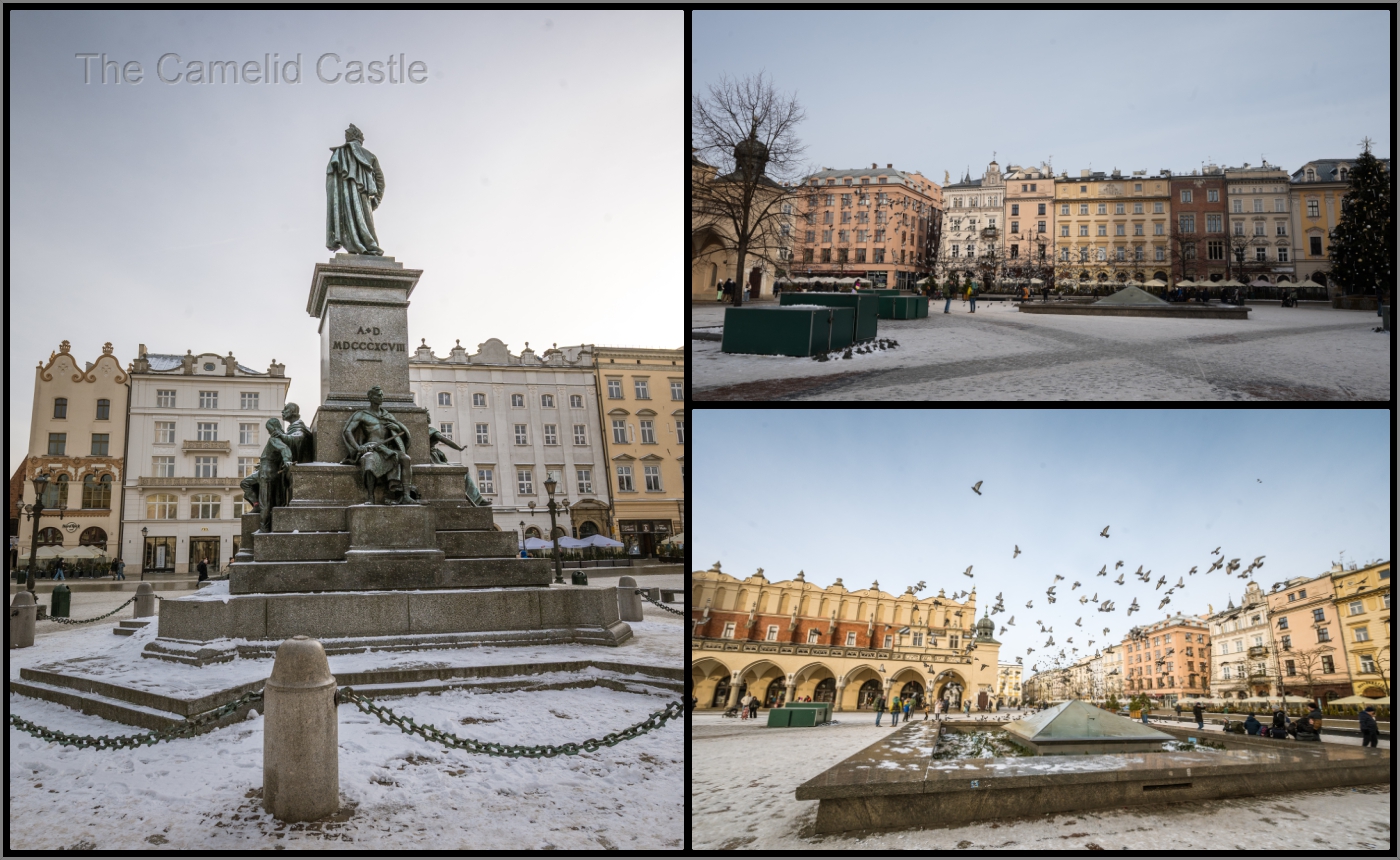
We enjoyed checking out the various monuments and churches within the square and the kids, being kids, spent some time chasing the many pigeons that inhabit the square. Our kids were not the only ones enjoying playing with the pigeons!
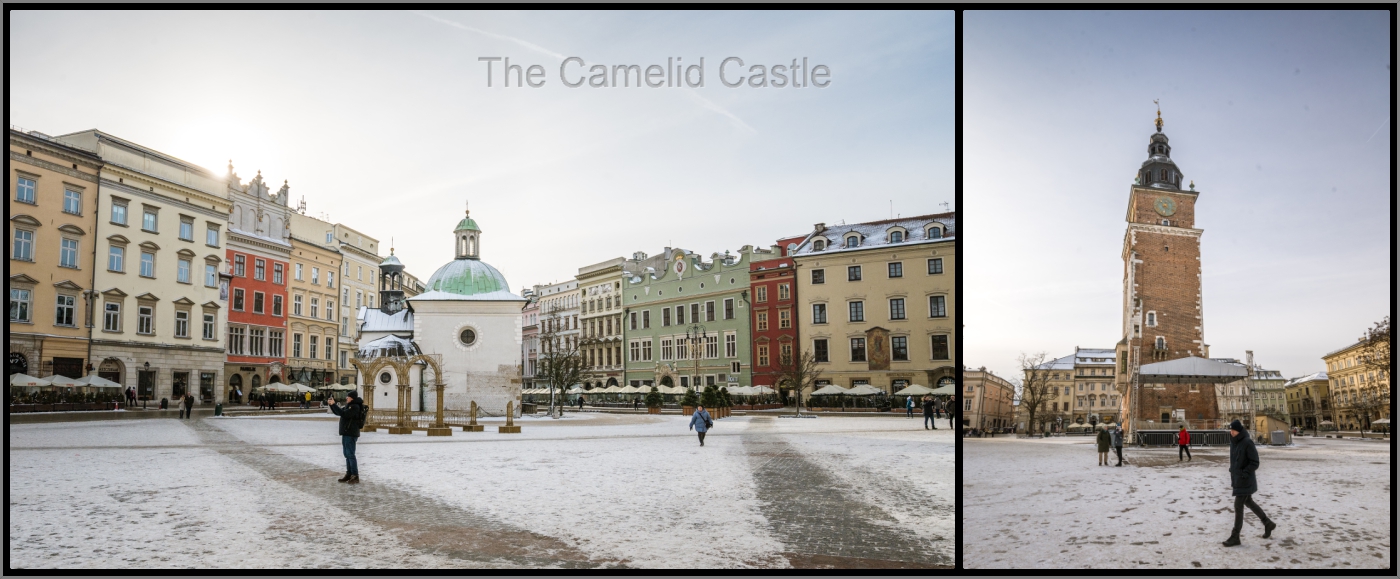
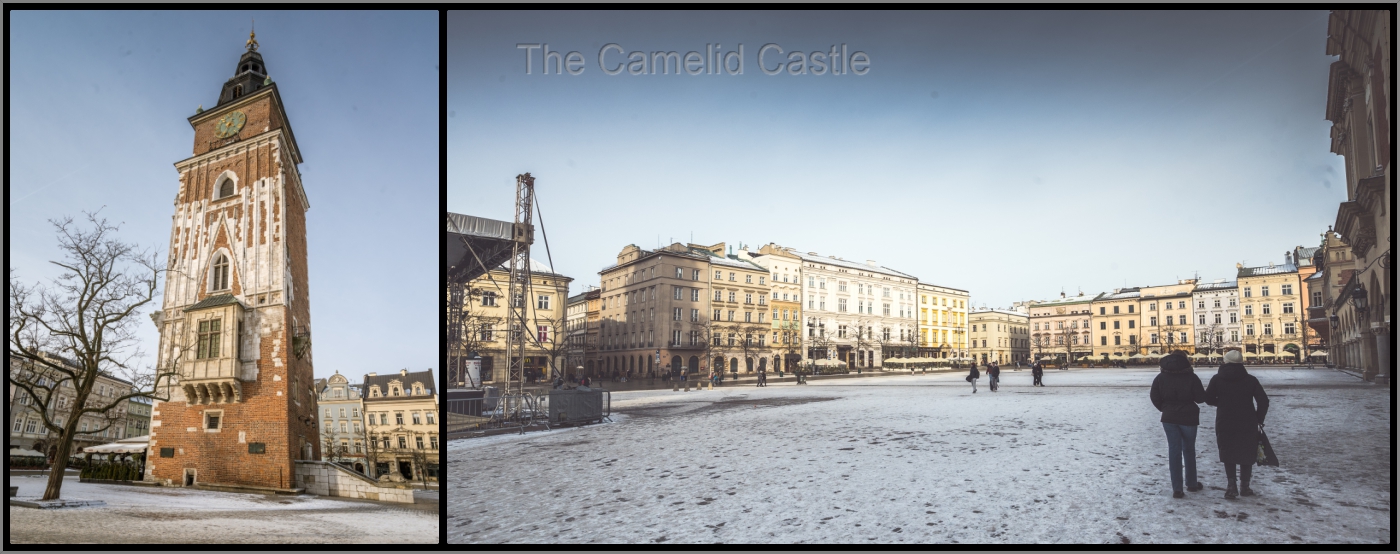
We paid the inside of the Cloth Hall a visit, which was once a major centre of international trade. Selling imported spices, silk, leather and wax as well as local textiles, lead and salt from the Wieliczka Salt Mine. These days the upper floor is a museum with 19th century Polish paintings and scultpures. The ground floor is a market which is souvenir heaven. The kids spent time here checking out what they’d like to purchase while we all tried not to fall over on the icy stone floors.
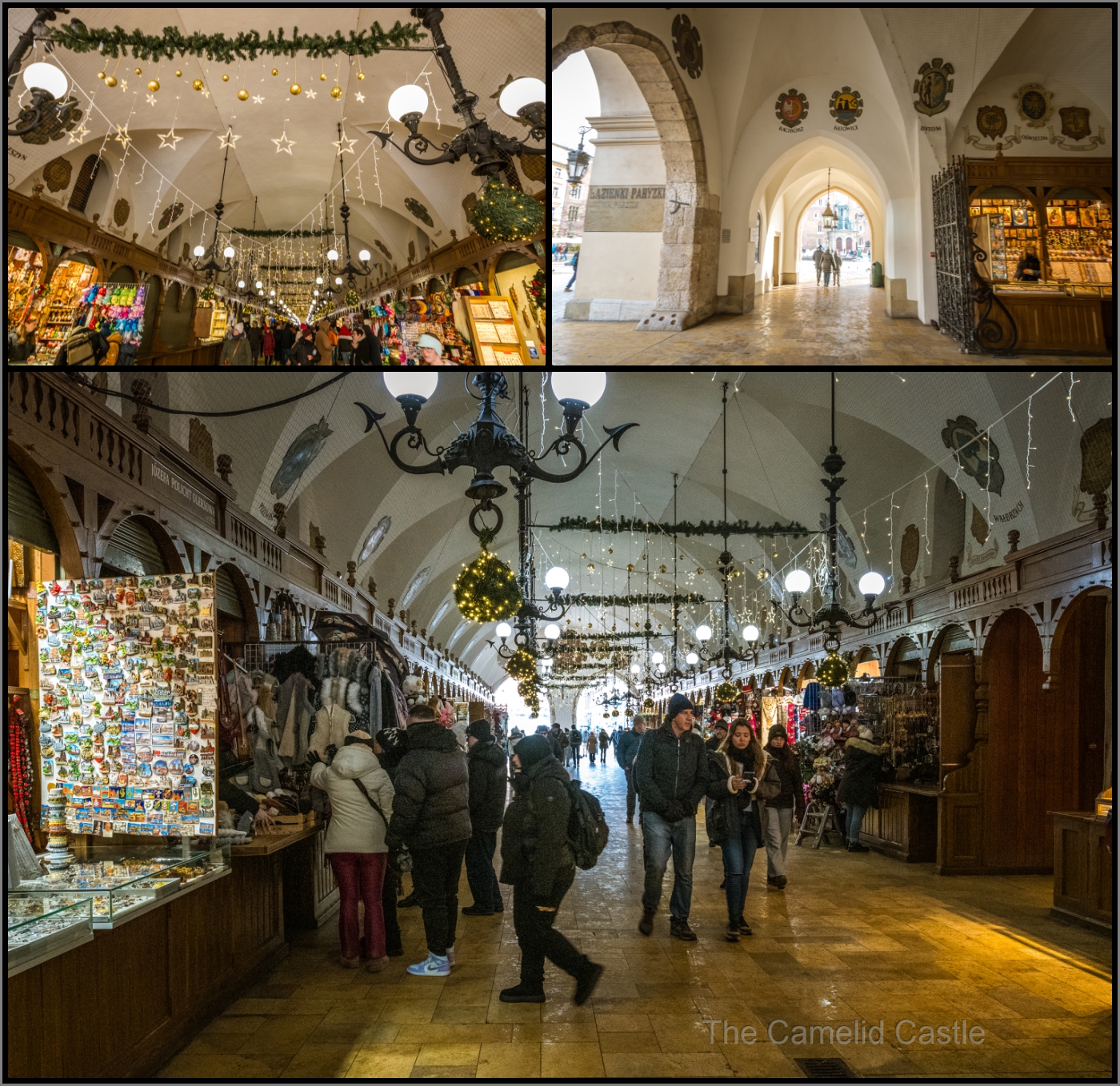
There were plenty of donuts for sale everywhere in Krakow so we had a morning tea snack of fresh donut while wandering around the Rynek Główny and scoping out potential lunch restaurants. It wasn’t yet 11am so everywhere was still serving breakfast!
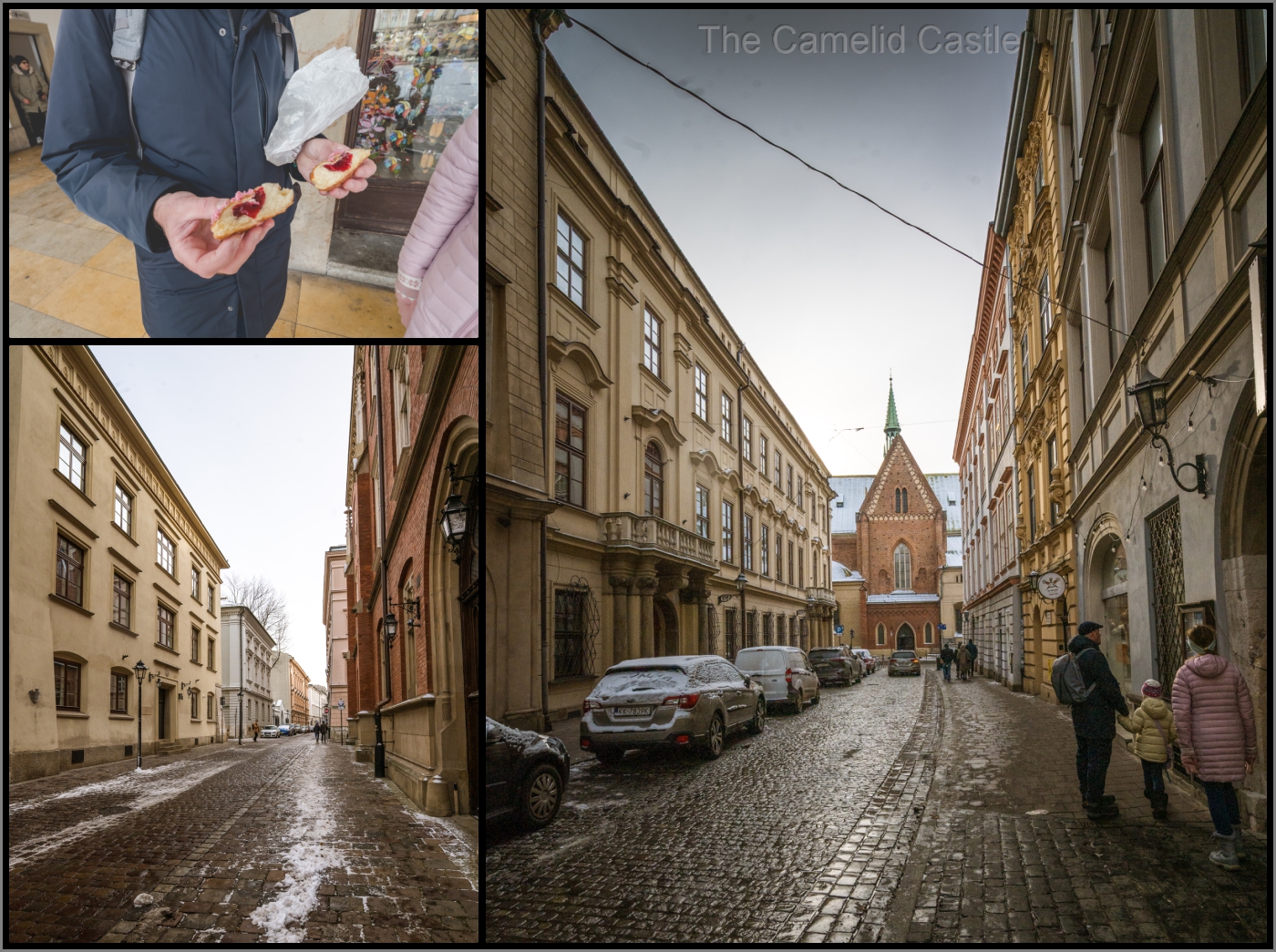
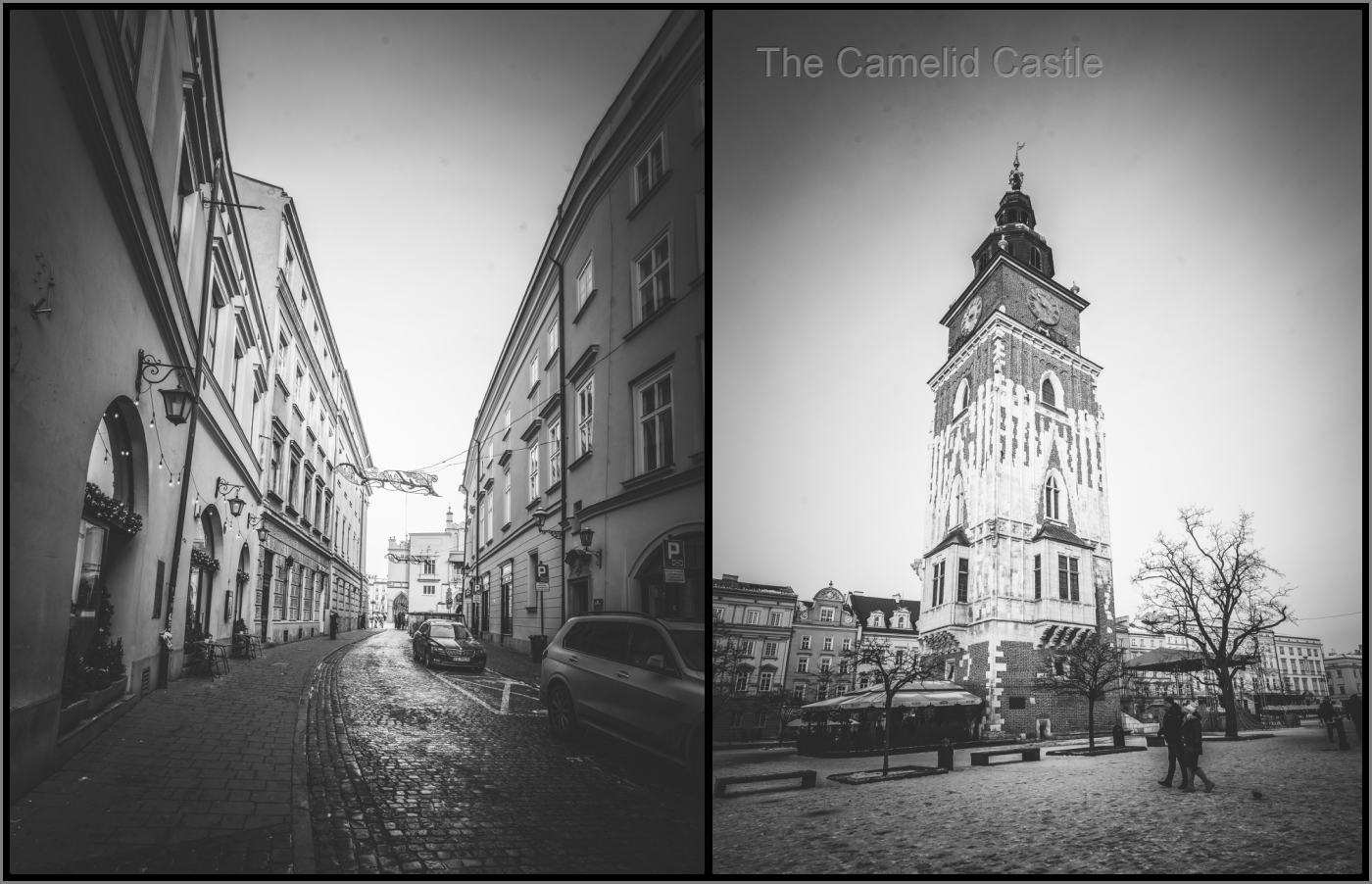
We then checked out the beautiful buildings of the Collegium Maius (Great College) of the Jagellonian University.
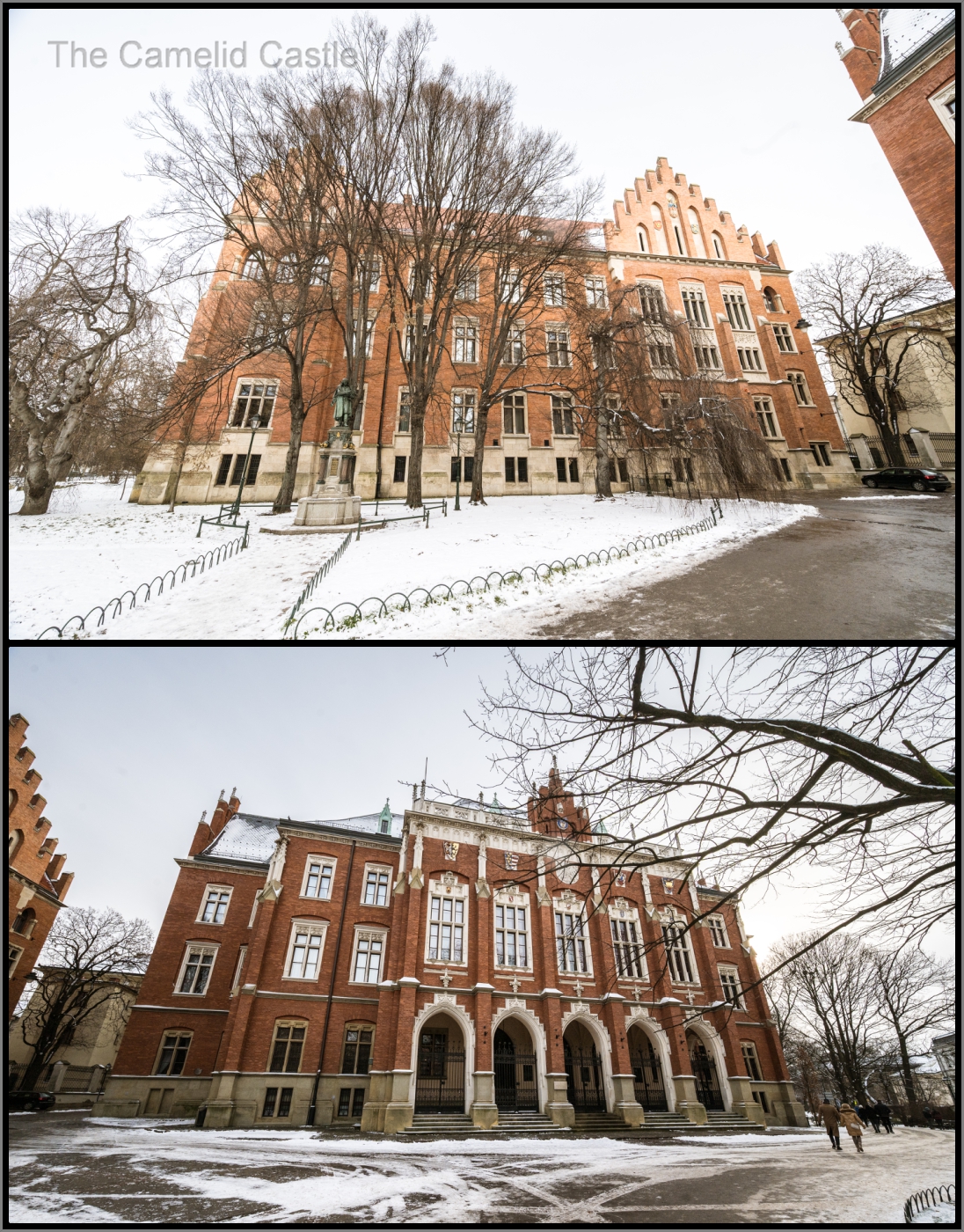
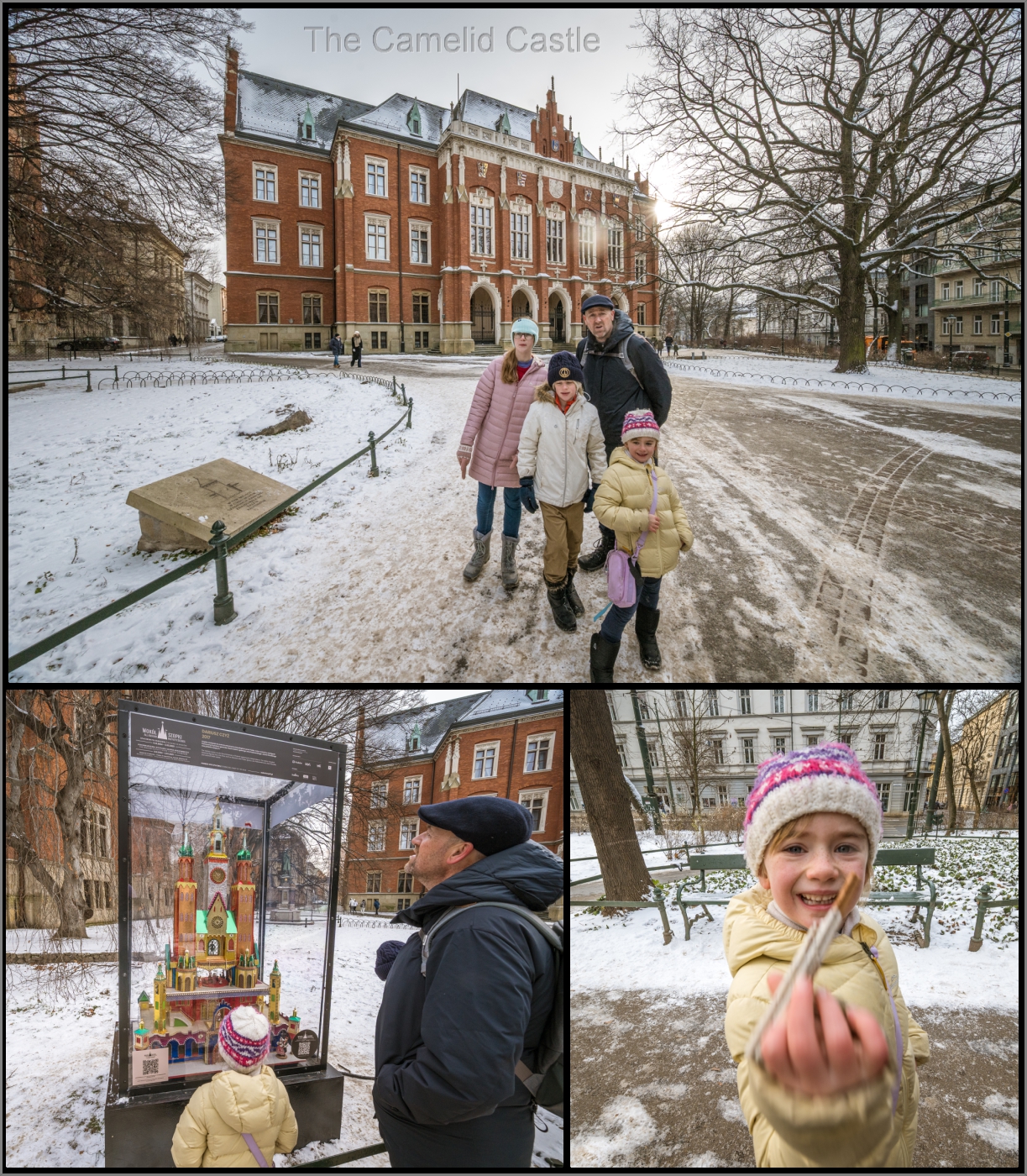
We liked all the Christmas themed art pieces that were still on display throughout Planty Park. As we were walking around we saw many of interesting pieces that had been handmade. Meanwhile it was still absolutely freezing. The kids snacks of pocky sticks had frozen solid in our bags while we had been walking around!
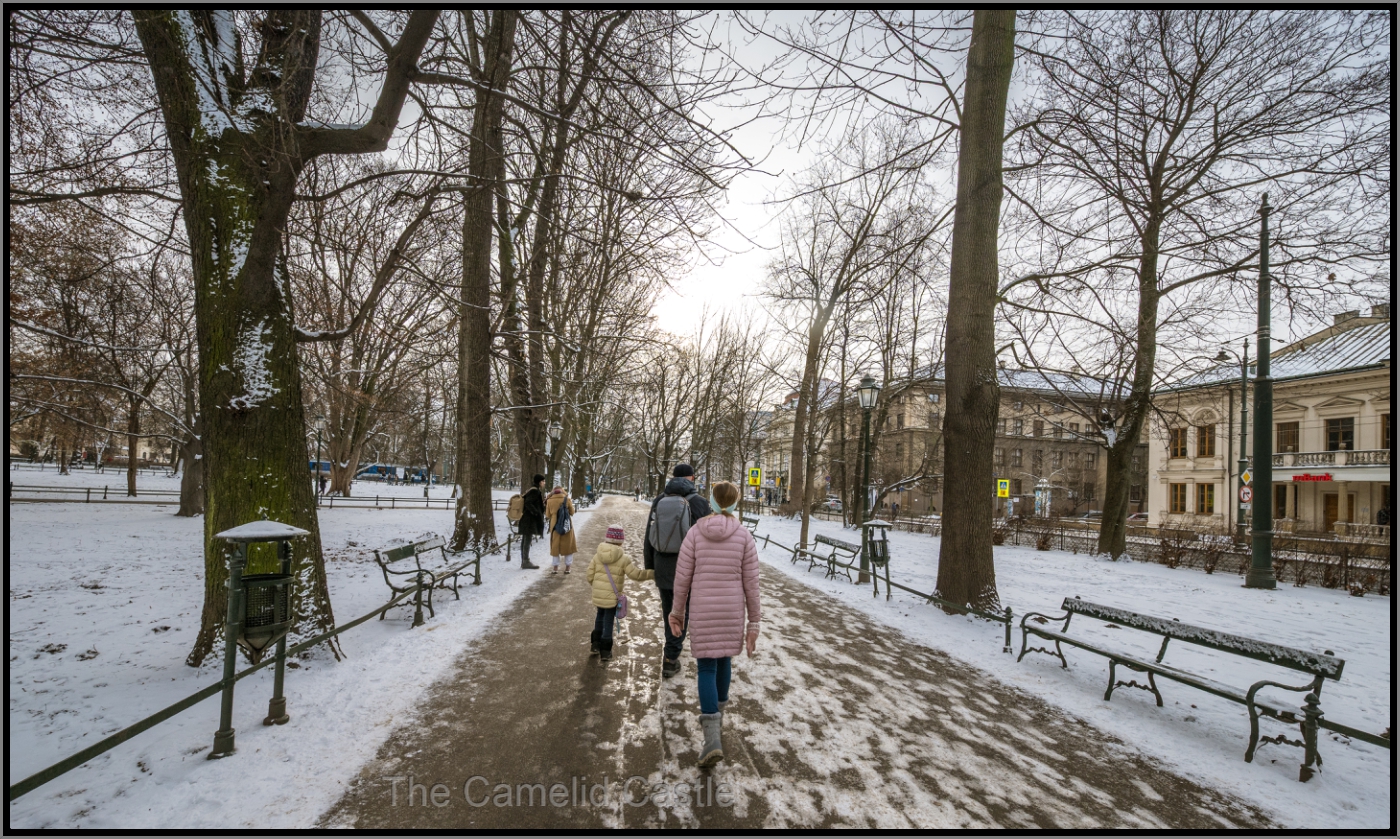
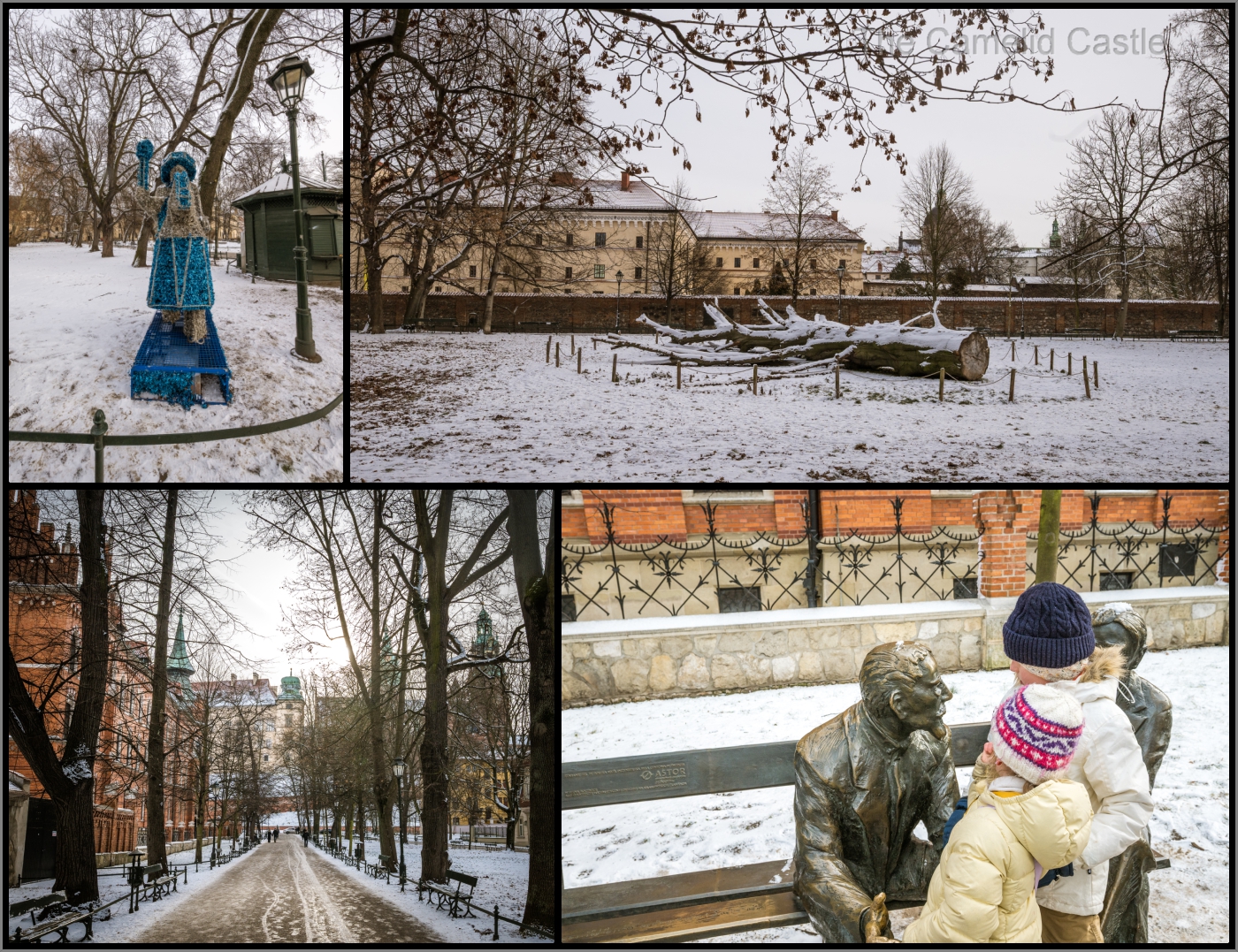
Wawel Castle
It was still a bit early for lunch and the kids had harvested plenty of snacks, so we thought we’d continue with our morning of sight seeing and were off to the Wawel Royal Castle, which sits on the Vistula river at one edge of Planty Park.
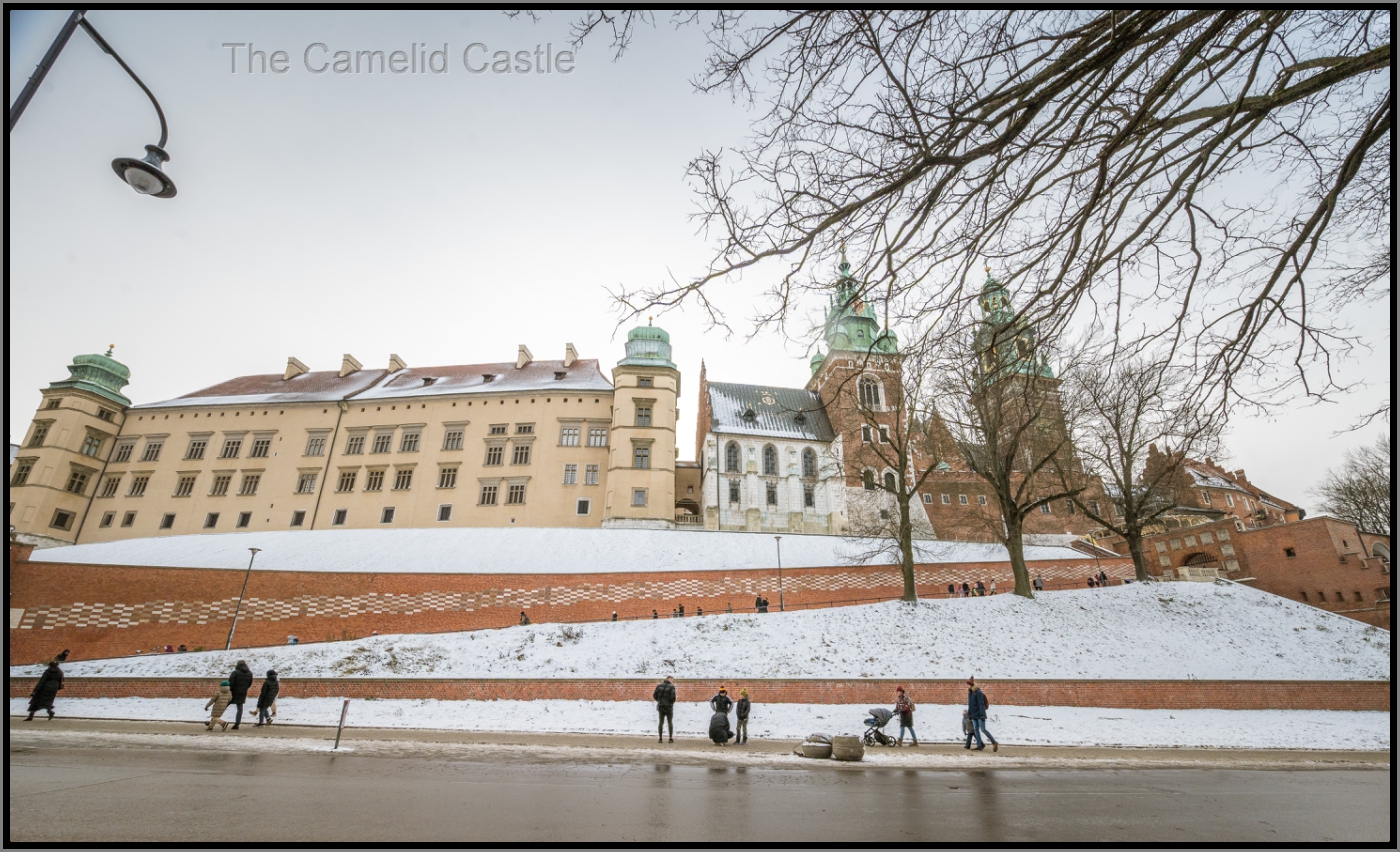
The castle sits at 228m altitude on a rocky outcrop and can be seen from quite a distance away. We could see it lit up as we came in and out of Krakow in the dark over the past couple of days.
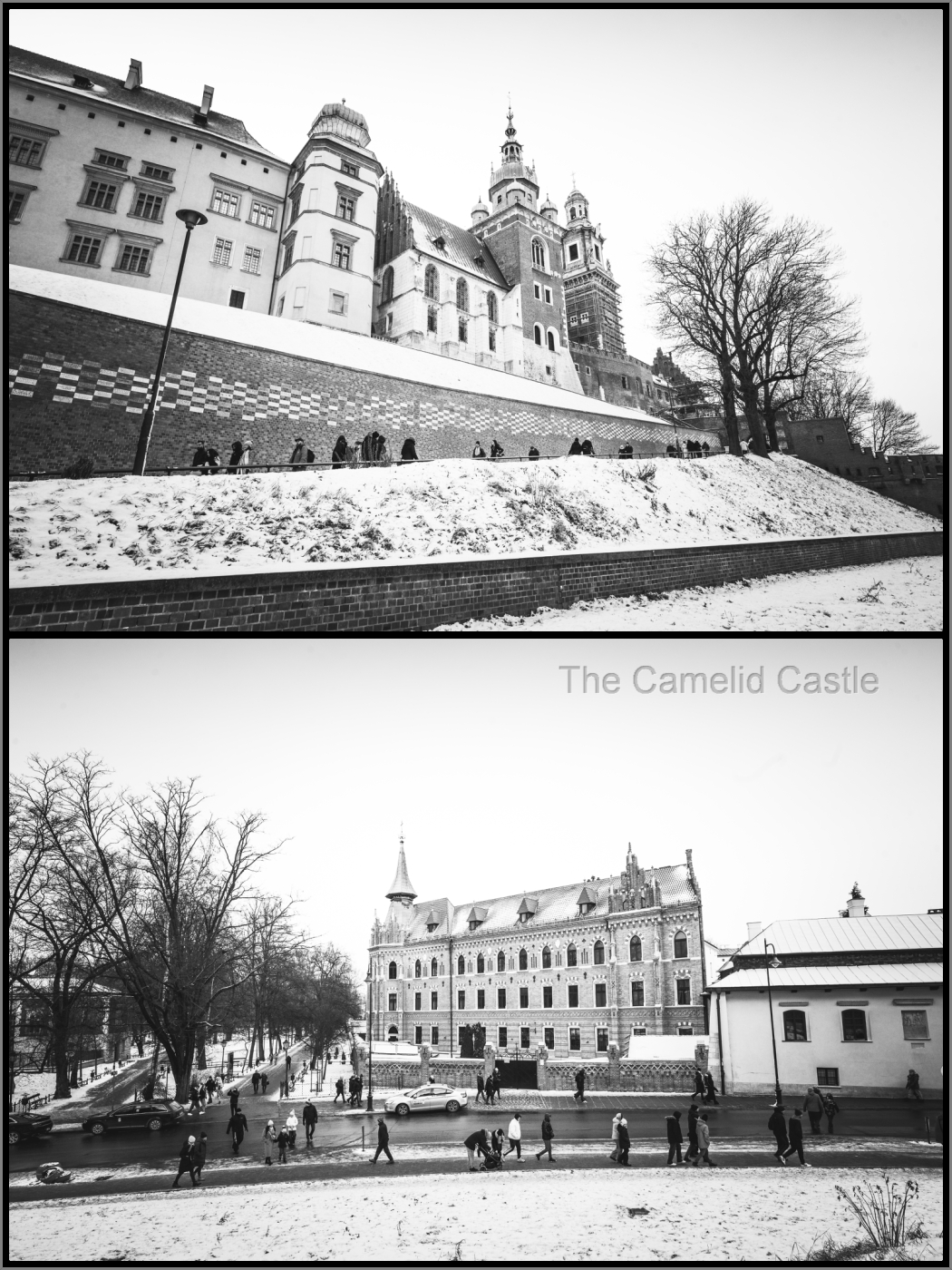

Another day another castle, but this was a particularly spectacular one. The castle covers an area of over 7,000 square metres and was built in the 13th and 14th century around a large Renaissance styled courtyard.
We started by walking up to the ramparts for views over the Vistula river. The river was starting to freeze and the swans were playing on the ice.
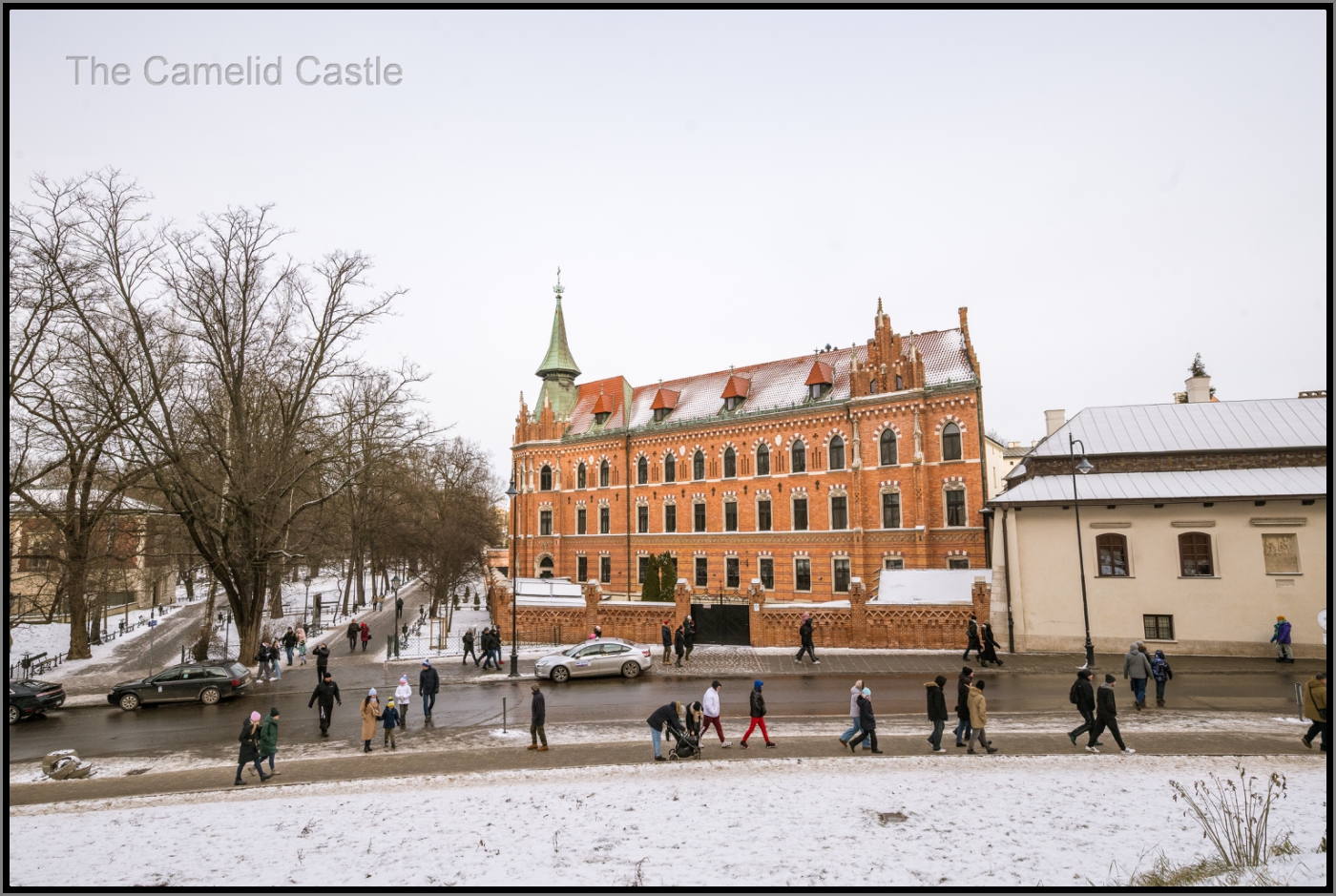

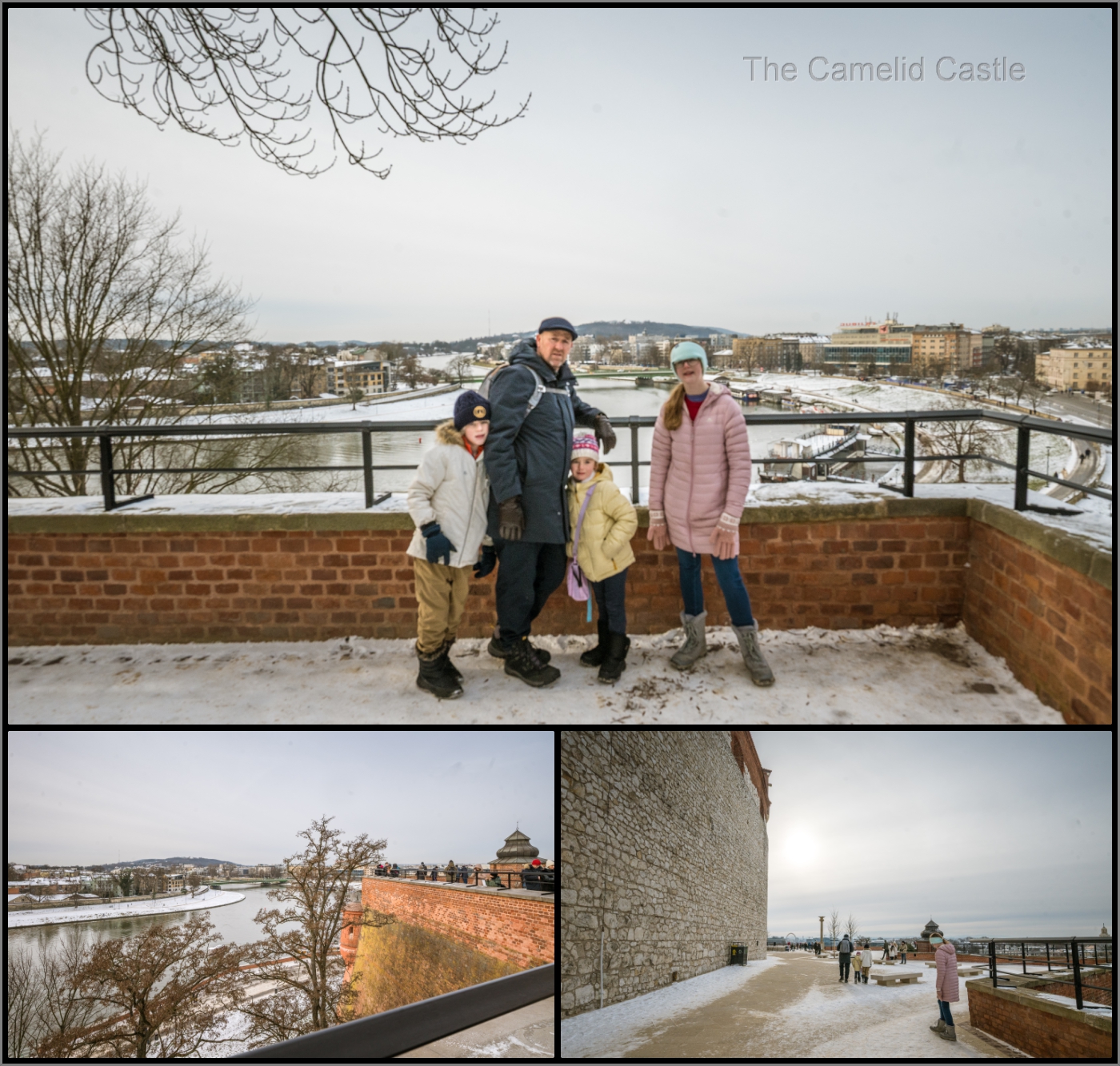
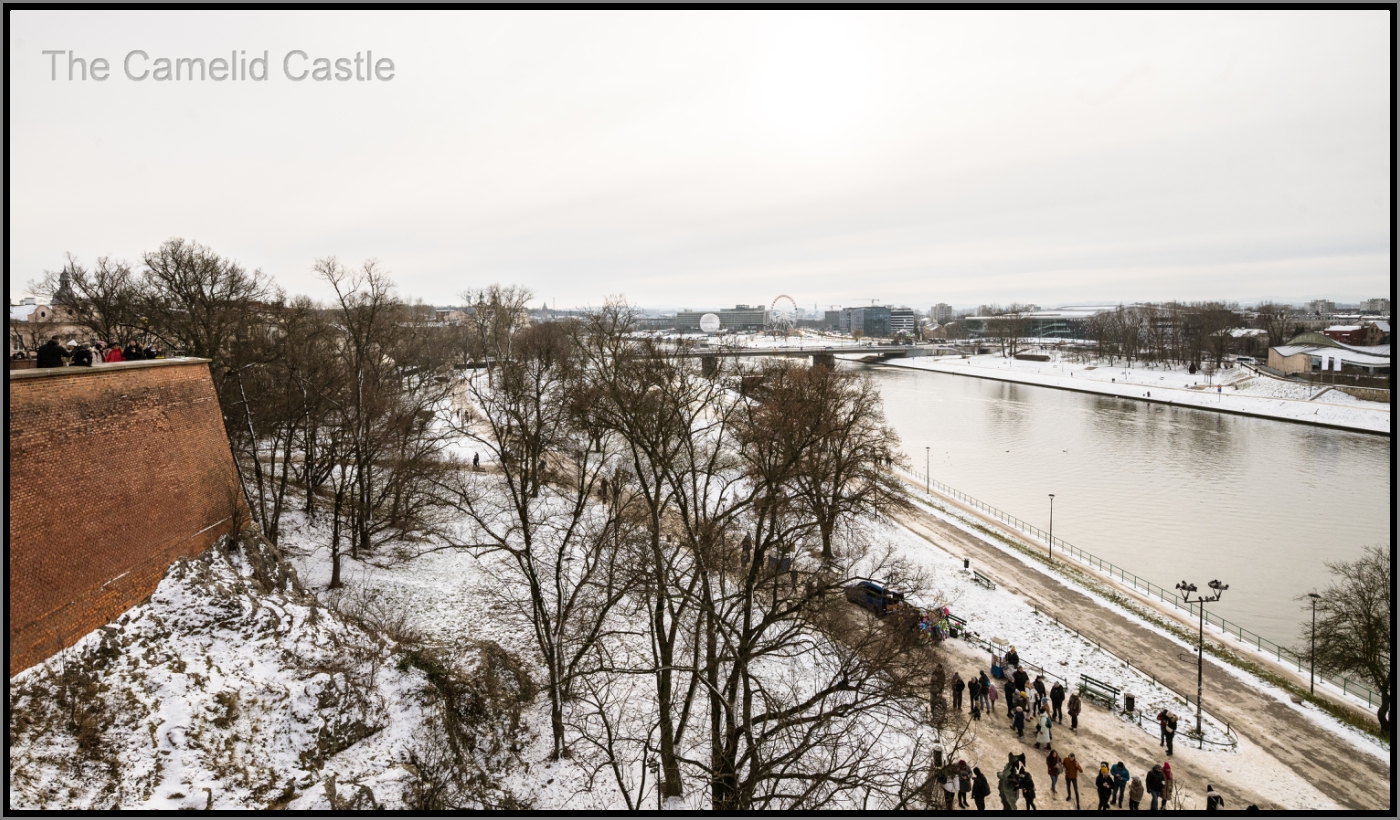
It might have been very quiet in the Old Town but there were a fair few people out and about checking out the castle. The castle contains a range of permanent and temporary exhibitions as well as a treasury, armoury and a castle artillery tower. You could buy tickets to most areas or wander the grounds for free.
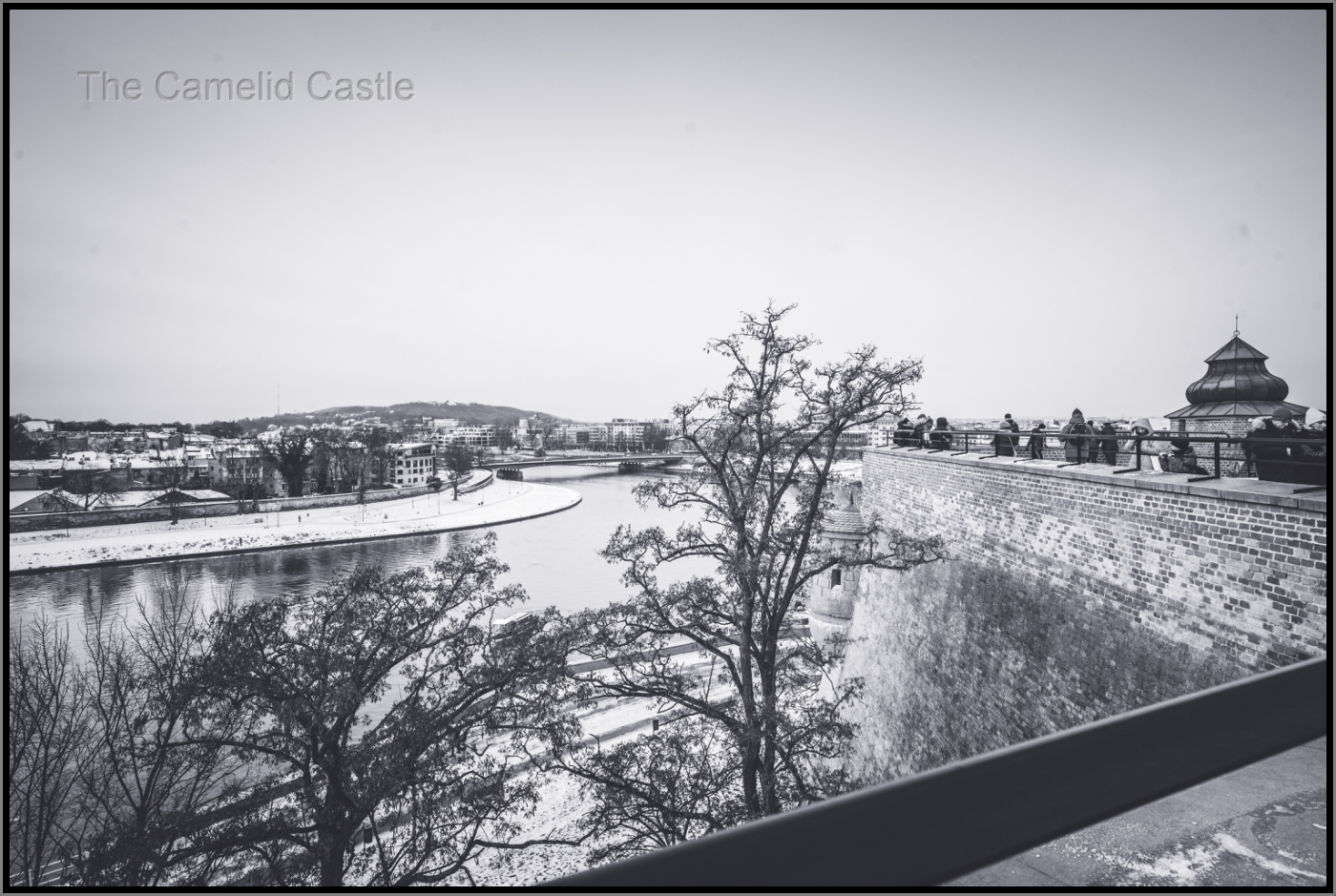
We were happy to wander around the courtyards and check out the various buildings. The castle complex includes buildings of nearly all European architectural styles including the Medieval, Renaissance and the Baroque periods. There was definitely an interesting mix of styles and it was quite different to many castles we’ve visited.
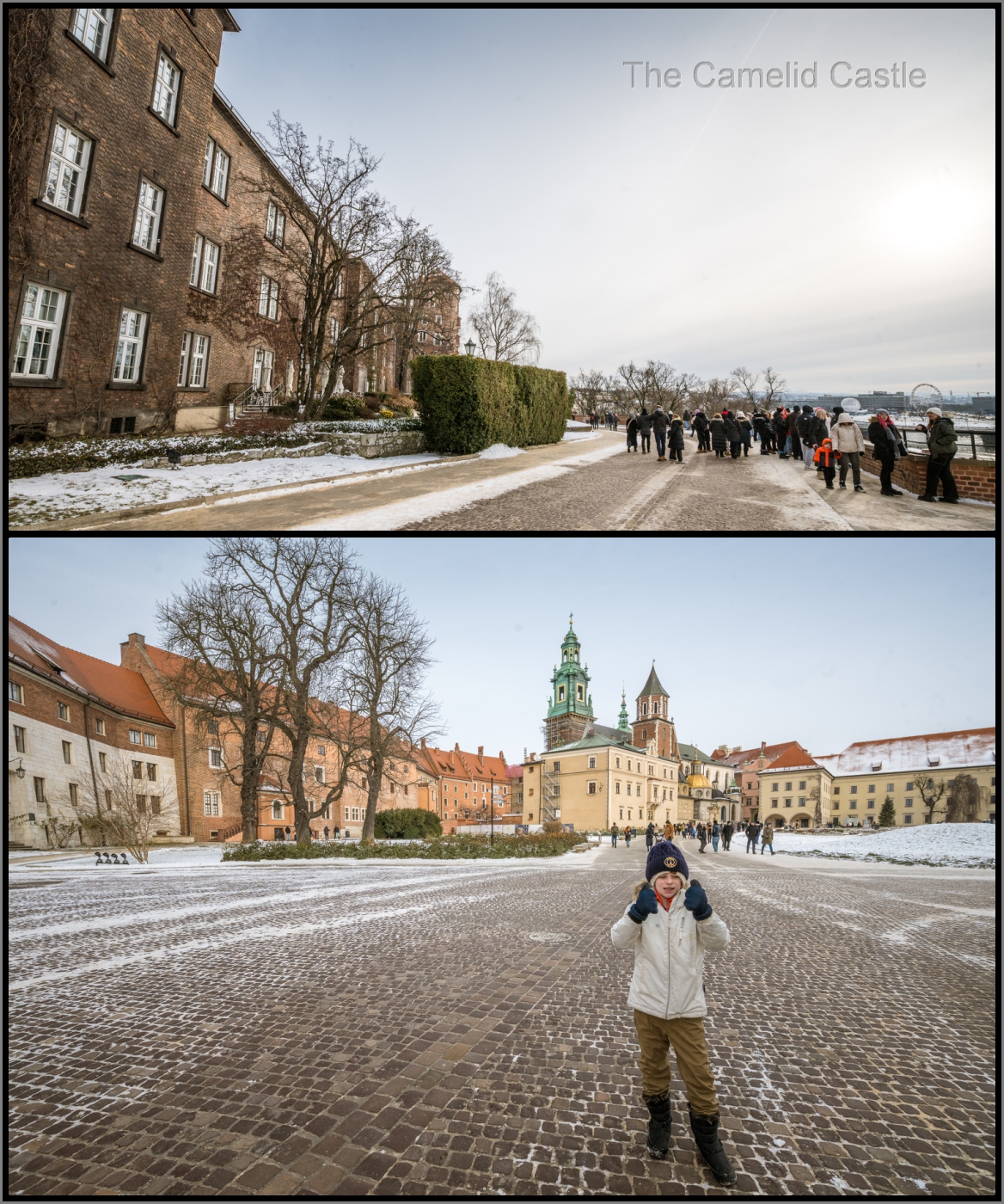
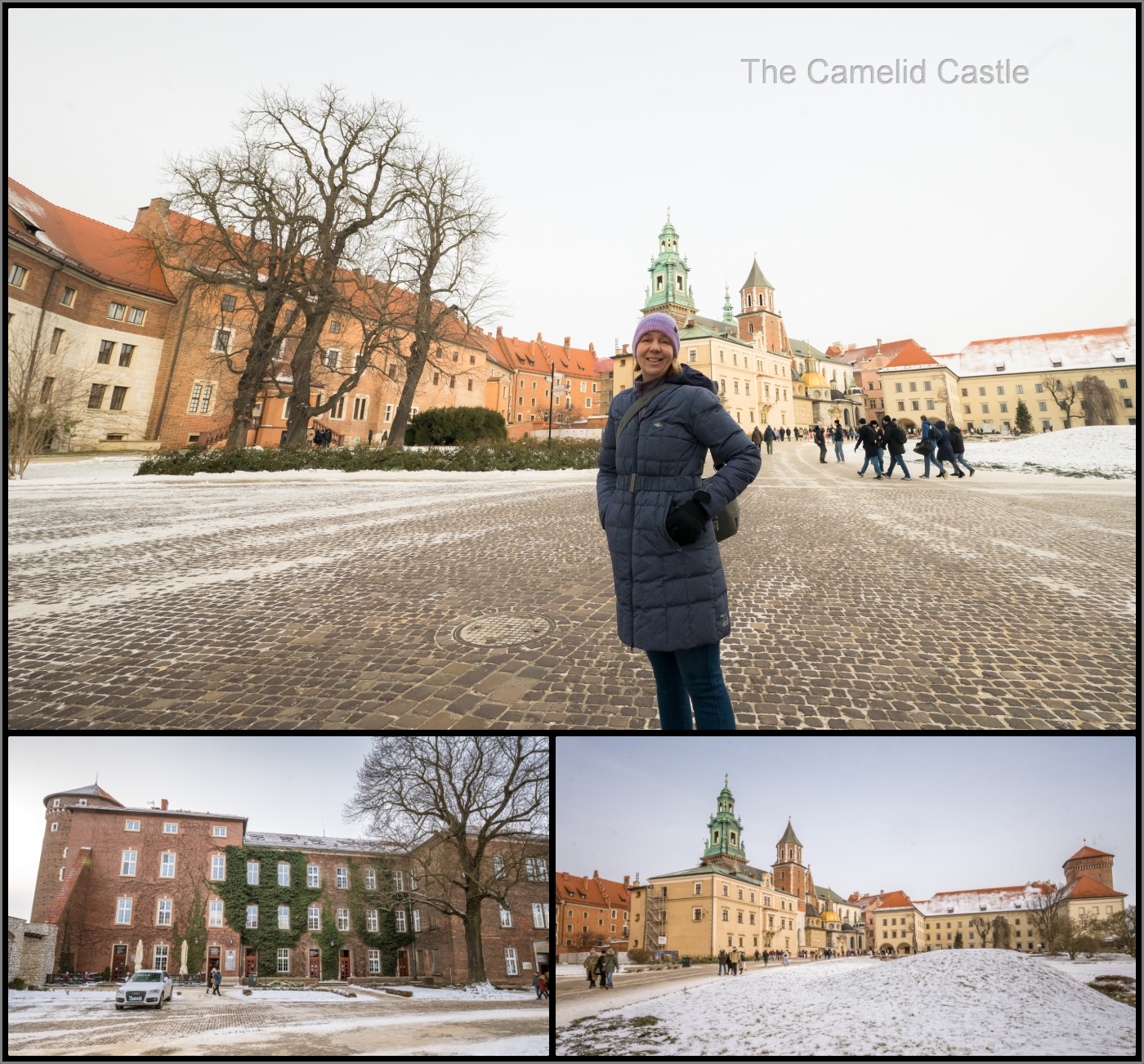
We found the model of the castle and Wawel Hill, also coated in thick snow. Soren immediately declared this better than the ‘Klein Basel’ model of the same type we spent ages walking through the rain to find on our day in Basel a couple of weeks earlier.
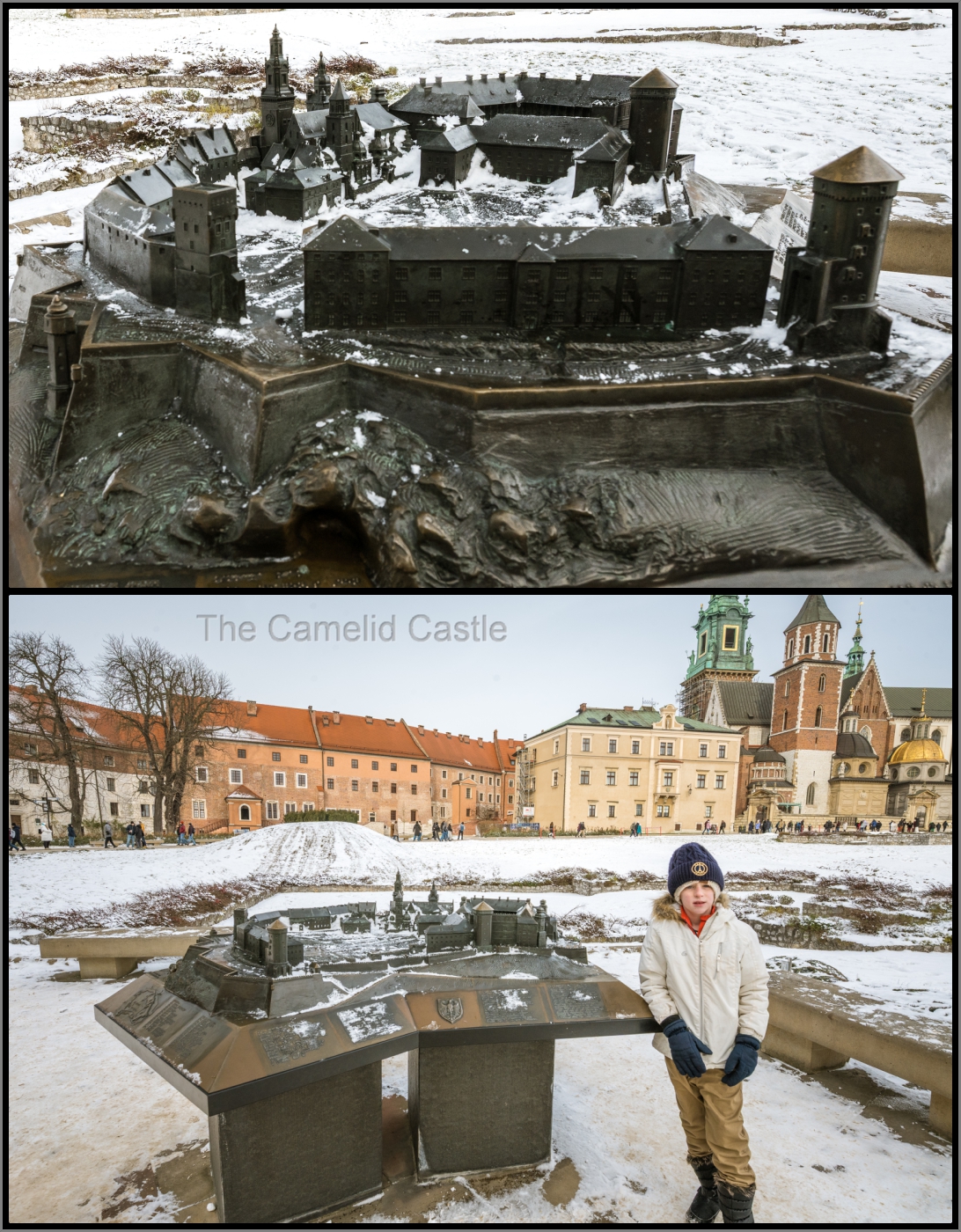
You could definitely see the mix of architectural styles within the main courtyard. Just the different materials used and roof styles in a small space was amazing.
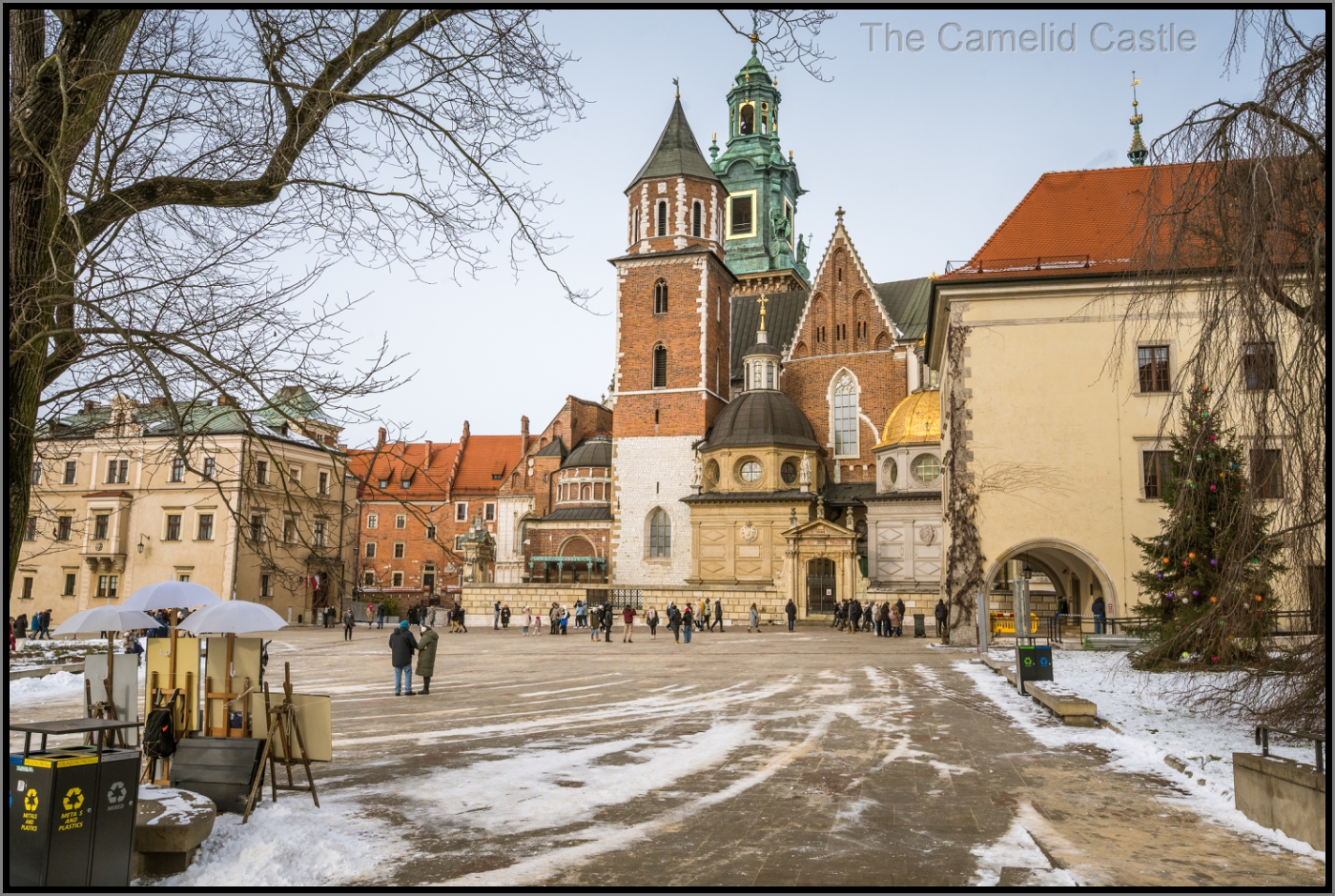
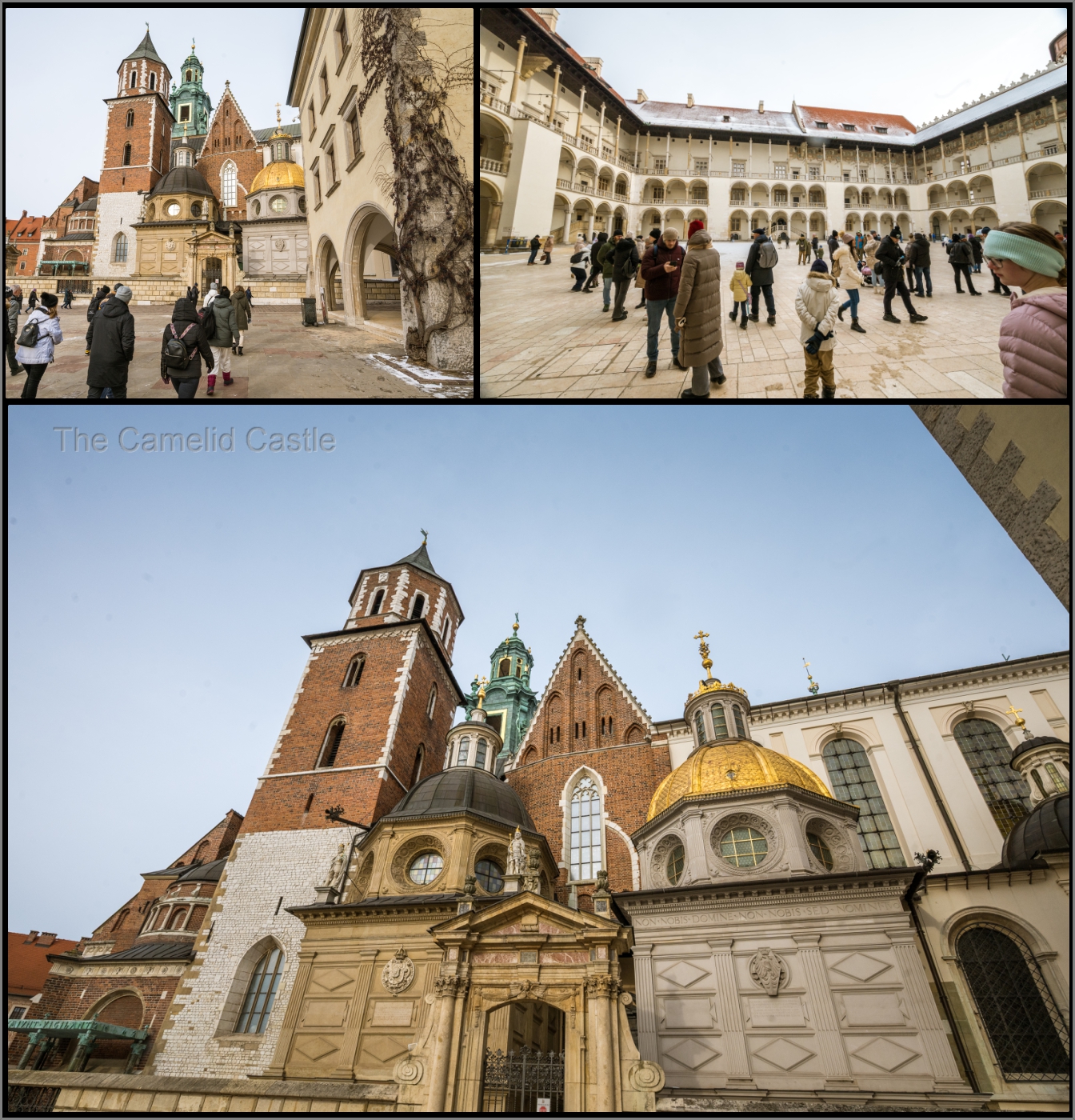
The main courtyard area was also very cold, and Soren was trying to talk us into visiting the armoury, because being an 11 year old boy that sounded like fun to him. Sadly none of his sibling were keen and we weren’t keen on buying tickets to several exhibits just for a short period so we instead went to find Smok the dragon. A dragon was something all the kids were keen to check out.
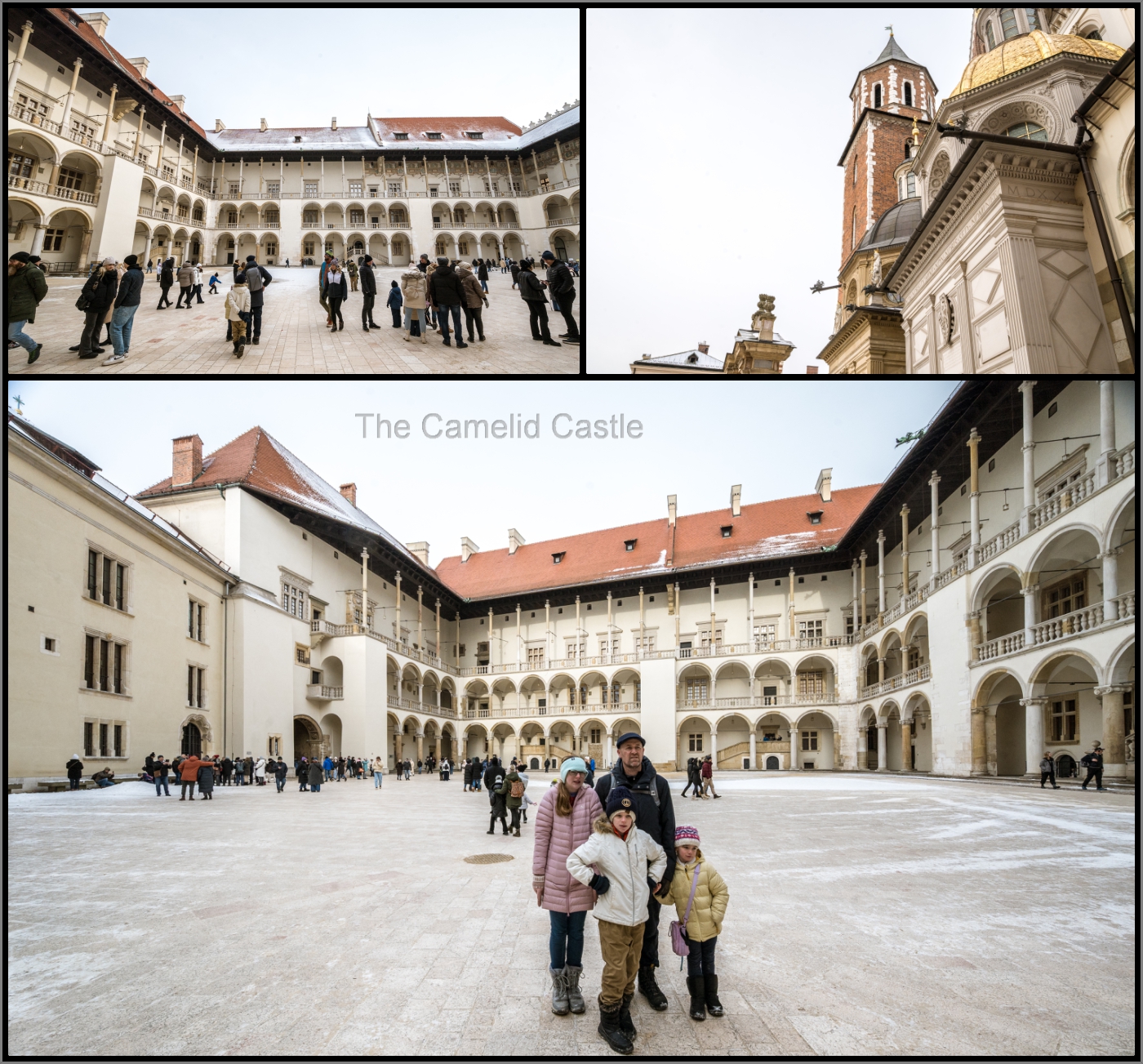
The Wawel Dragon is a famous dragon in Polish legend. The dragon’s cave is supposedly below Wawel castle. A metal sculpture of the dragon was placed in front of the castle in 1972. There was also a green screen version of the dragon inside the castle where we all got to stand in the dragon’s den while not being eaten or scorched to death!
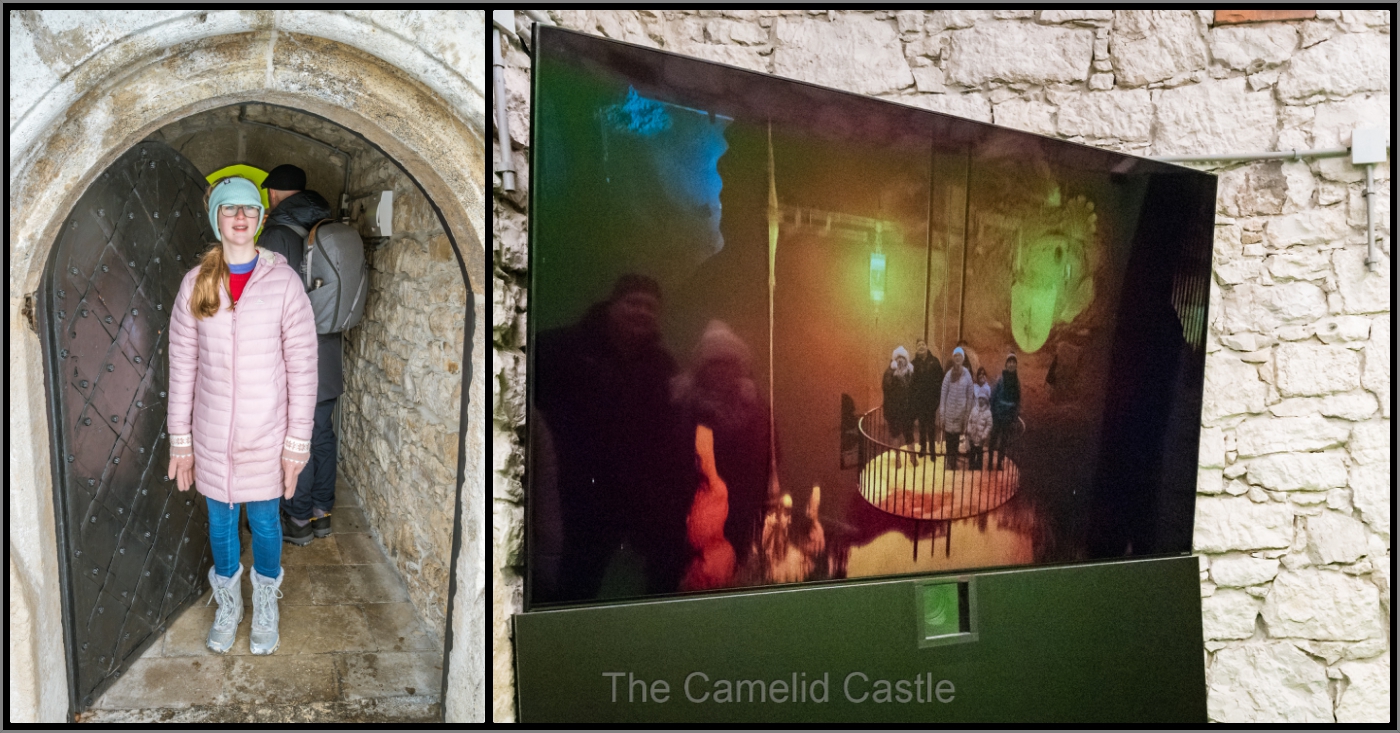
Smok the sculpture dragon breathes fire approximately once every 5 minutes. We had checked out this from up on the ramparts and then made our way down to see Smok up close.
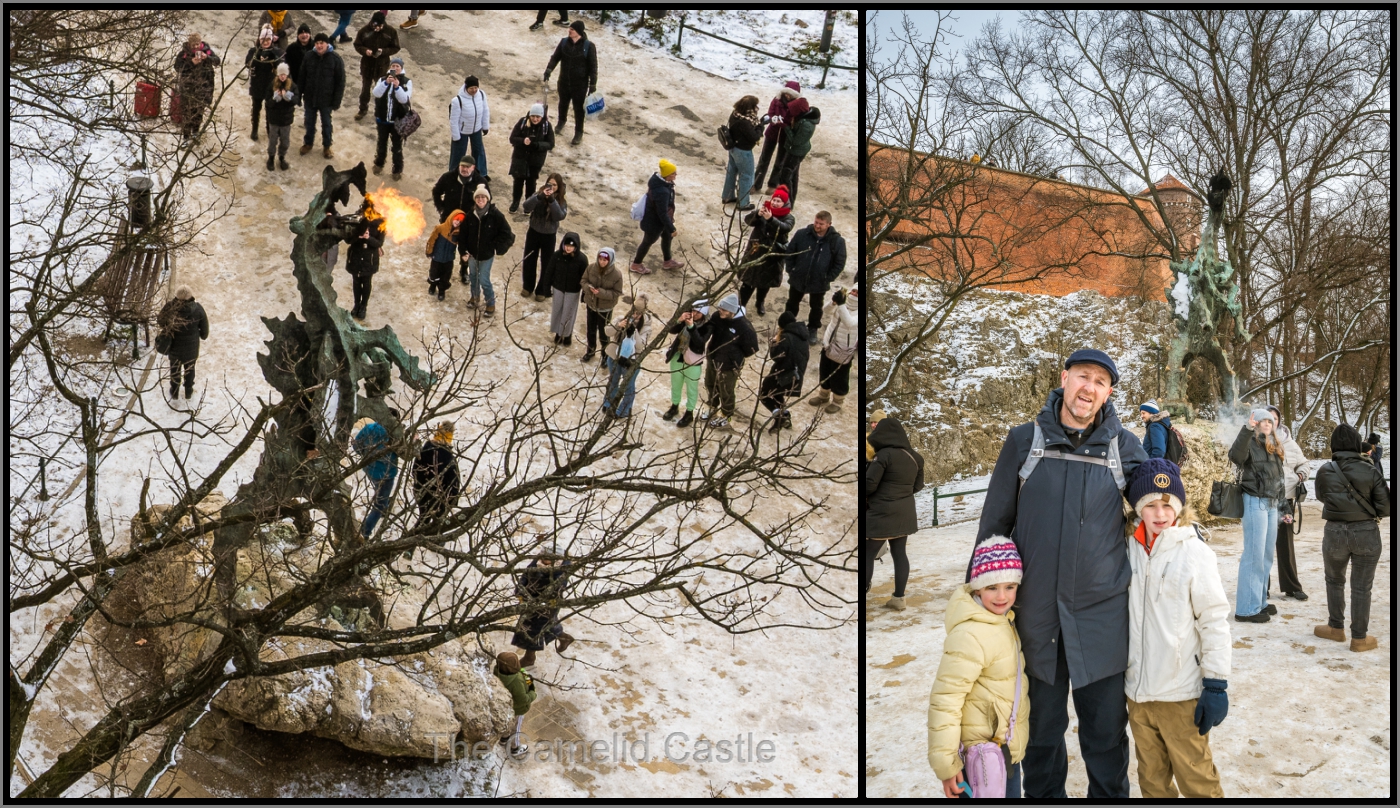
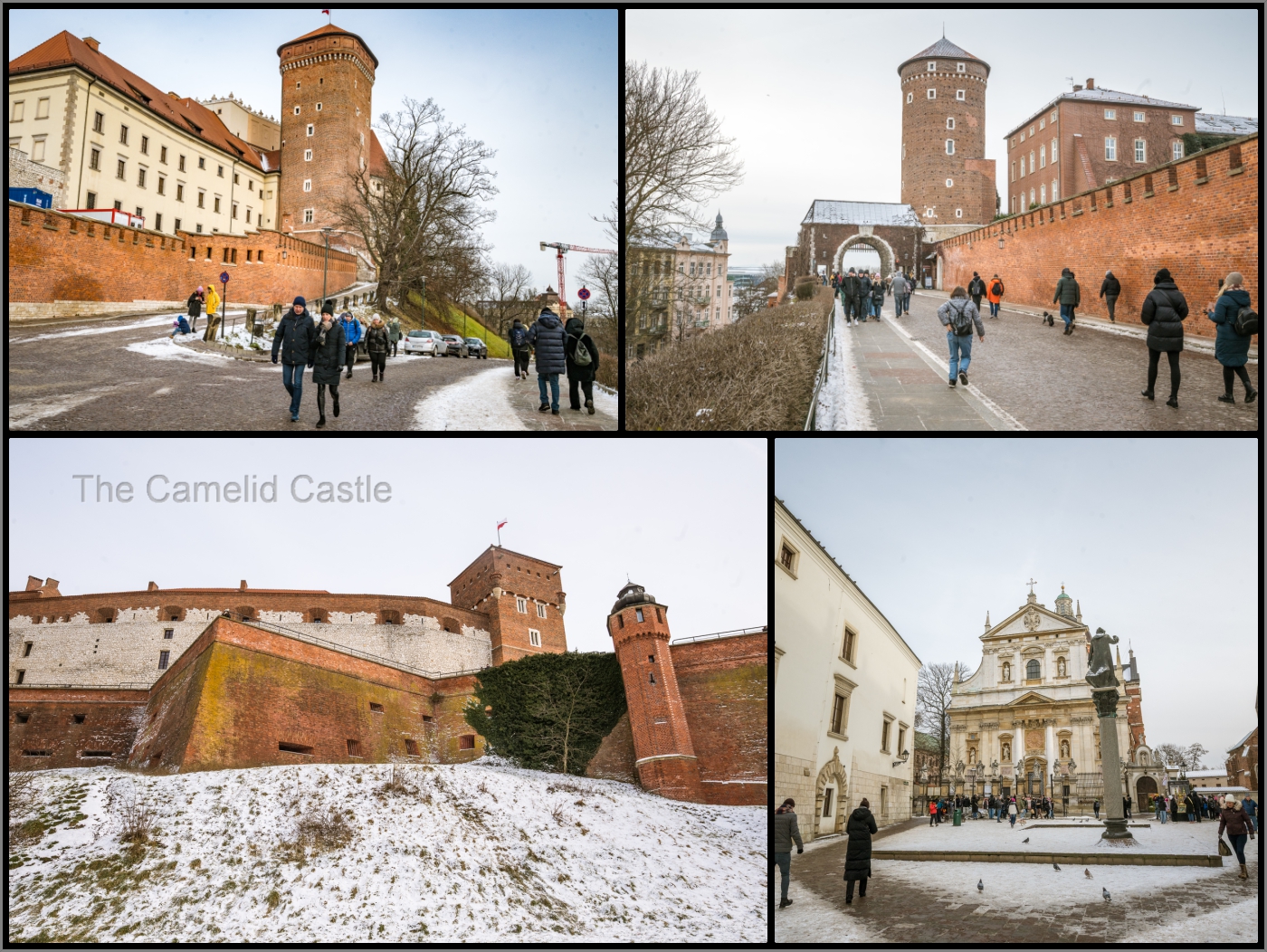
The dragon actually has 7 heads (each of the ‘legs’ is actually a head). Luckily once we were at ground level we didn’t have to wait long for the next lot of fire-breathing. Given how cold it was, being near to Smok wasn’t a bad thing.
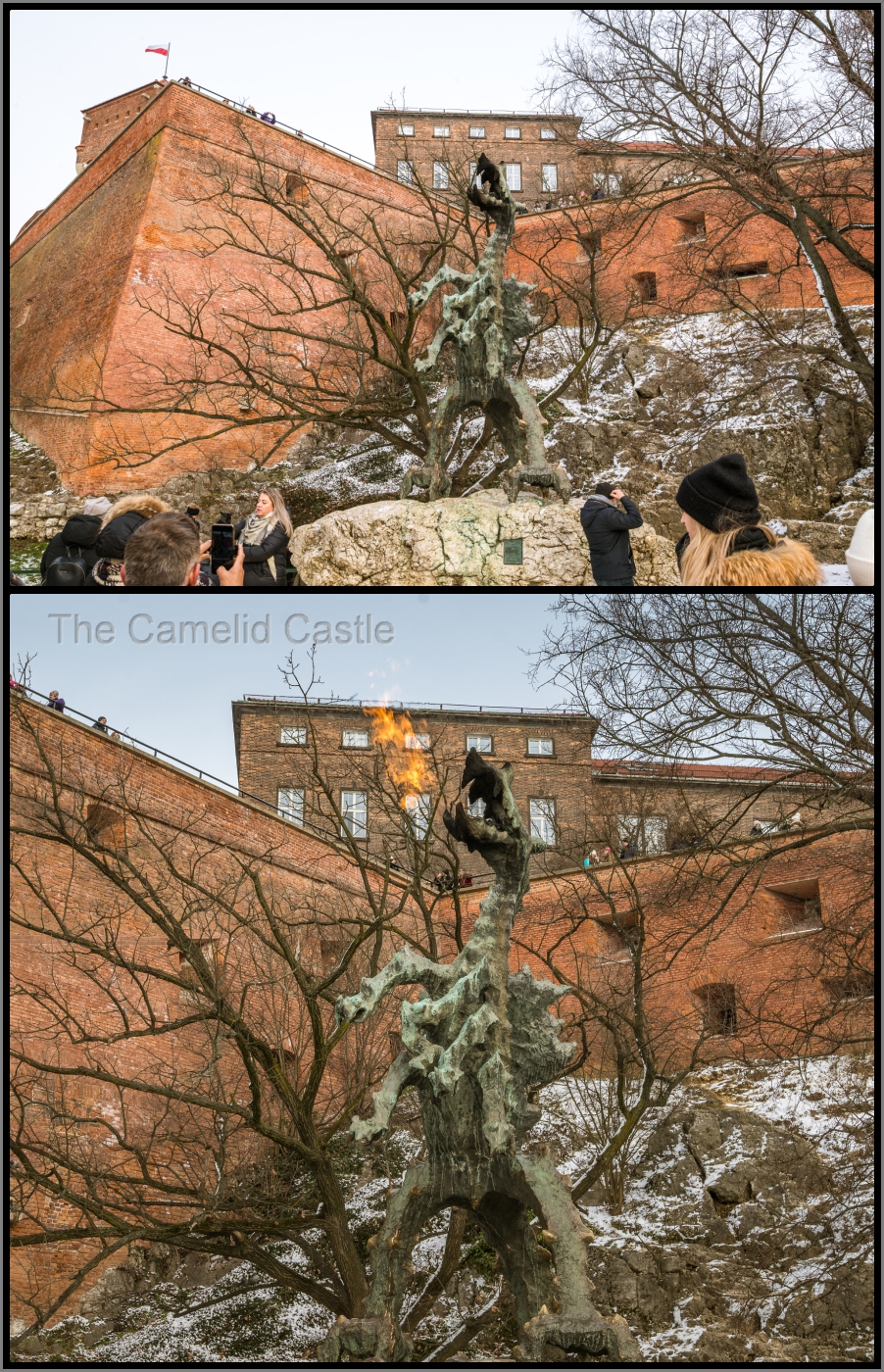
Everyone was starting to get quite hungry so we wandered along the icy river, checking out the swans and back towards the Old Town for some lunch. The swans seemed particularly un-fussed by the amount of ice floating around them as they happily played in the freezing water.
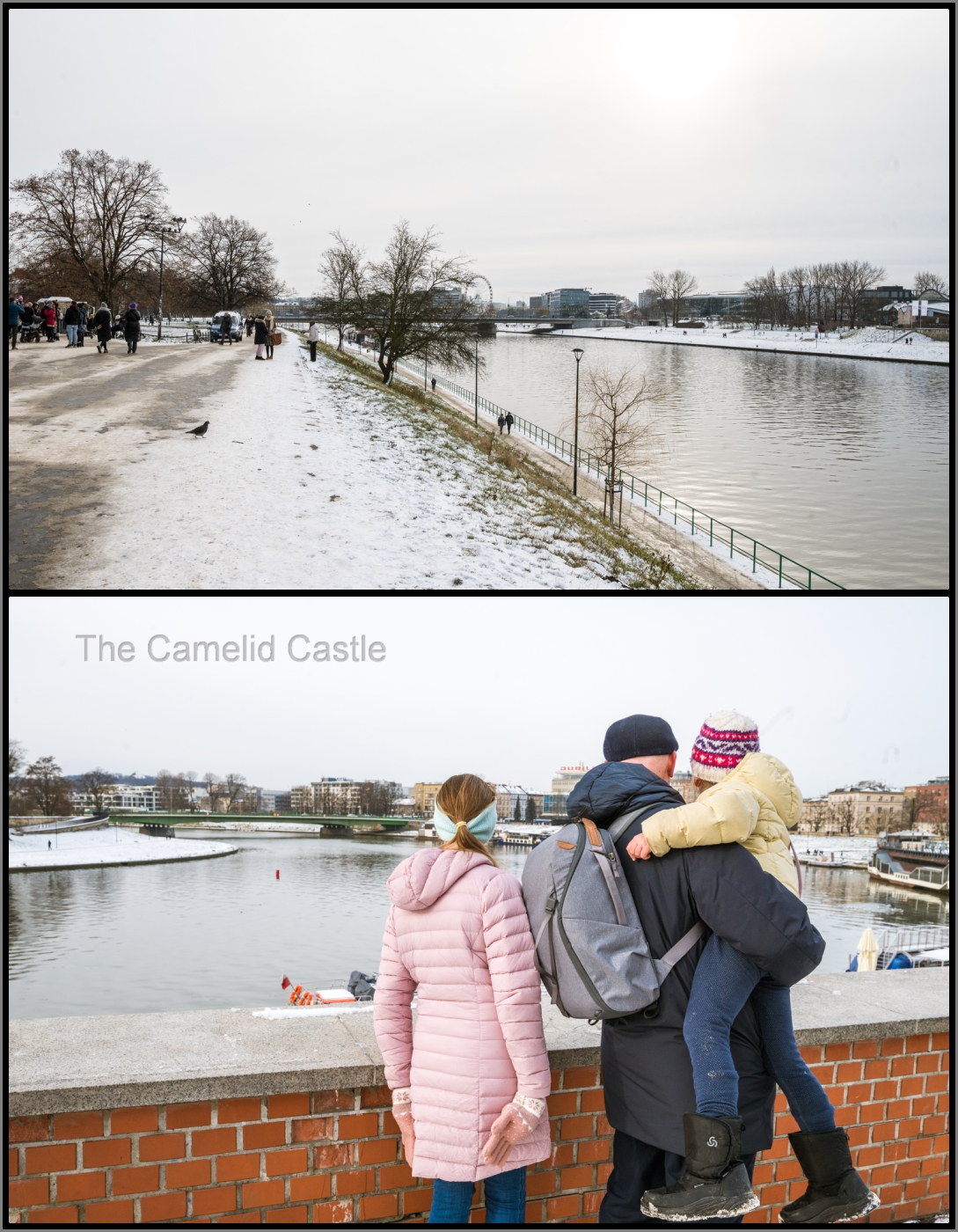
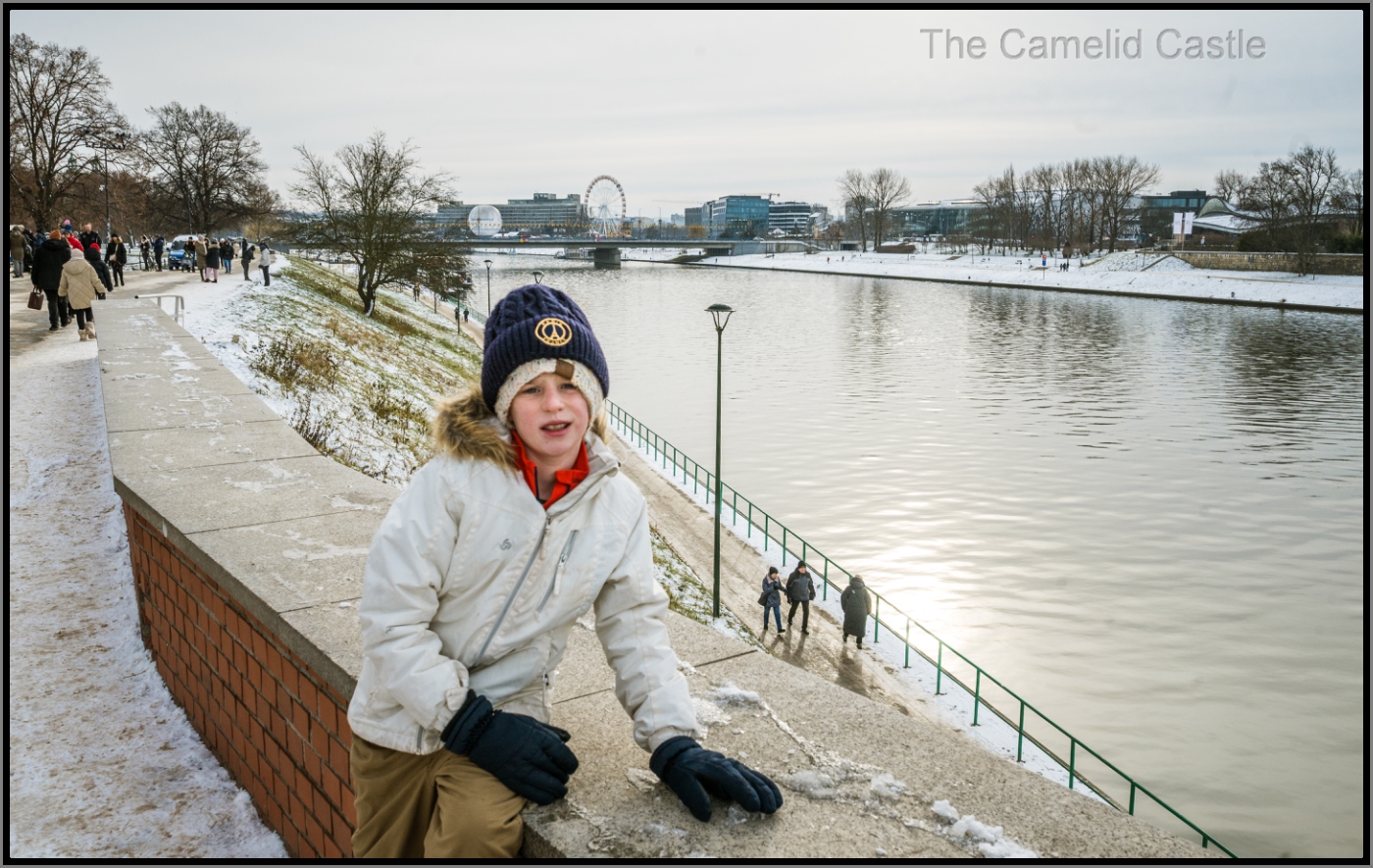
A tasty Polish lunch
After a full lap of icy courtyards, and castle buildings, and dragon visits we were hungry so head back to the old town in search of food. We found a Polish restaurant off the main street that had very festive Polish music and some good food.
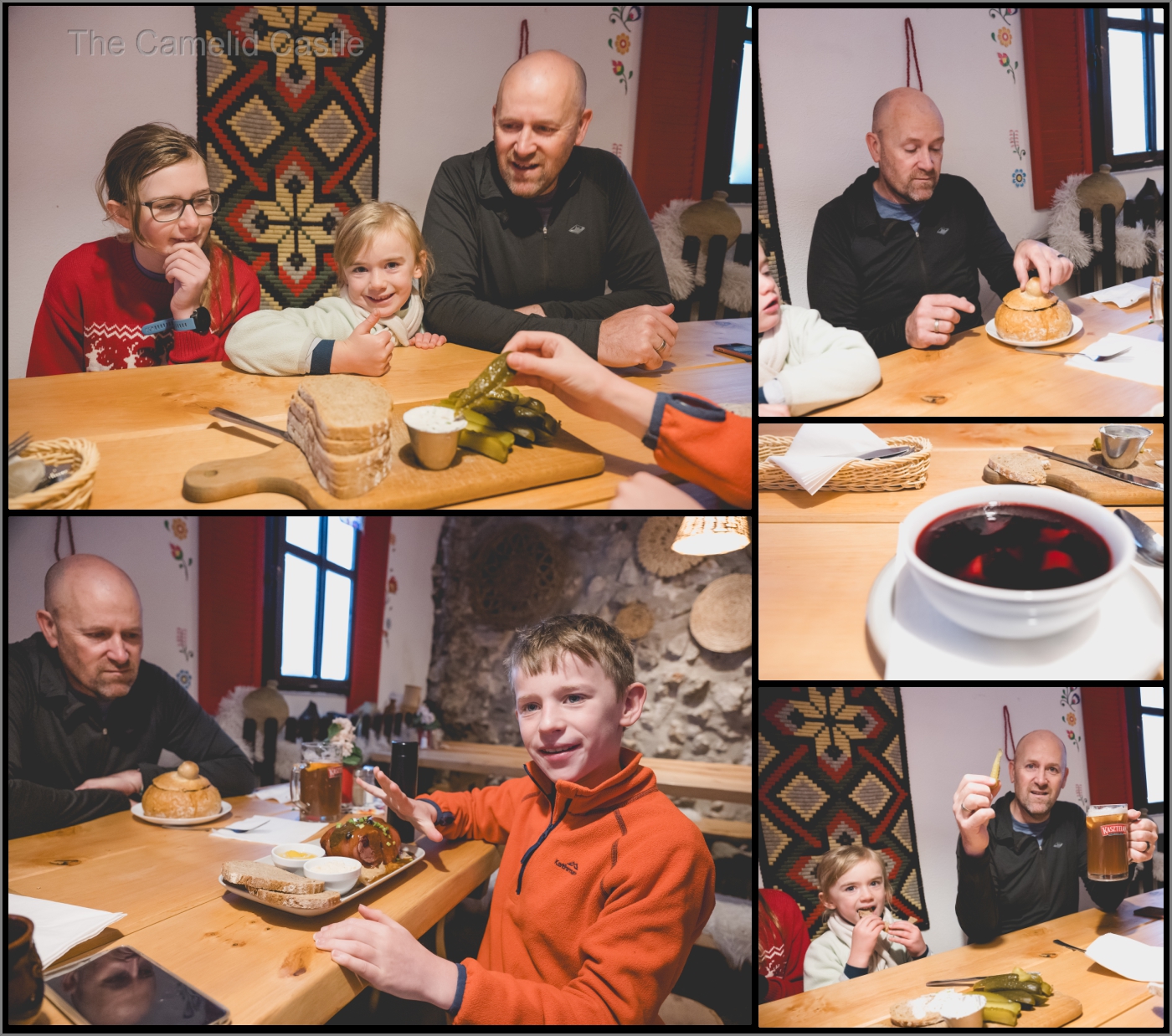
Soren had a pork knuckle bigger than his head, I had borscht with some very good dumplings, Astrid a traditional rye soup, Anto a ‘hunters soup’ and Zinnia stuffed cabbage. Anto also tried the mulled beer, which he didn’t care to repeat too many other times. My mulled wine was definitely better.
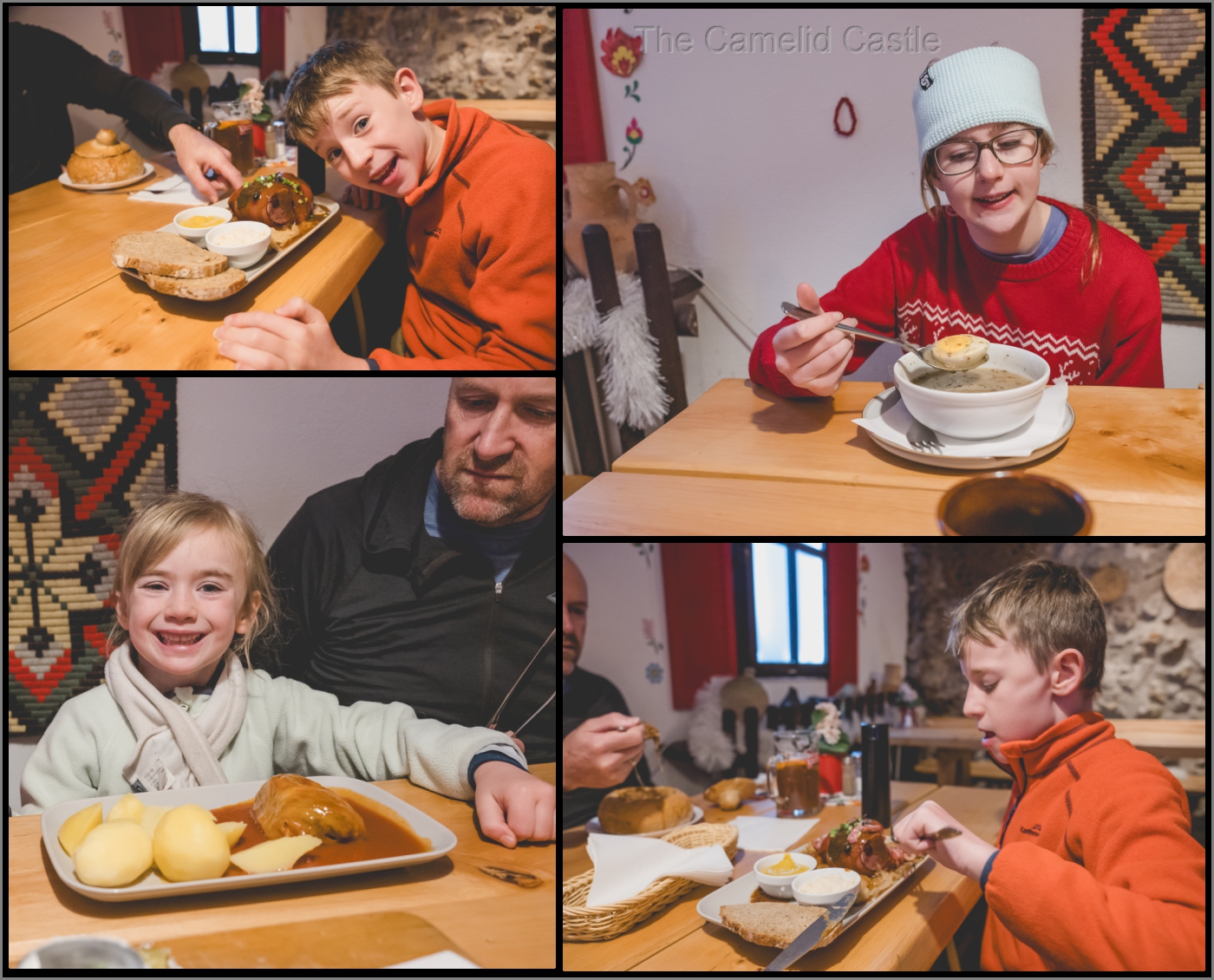
We did enjoy our Polish lunch and it was still minus 3 outside we were were pleased to be in the warm for a bit.
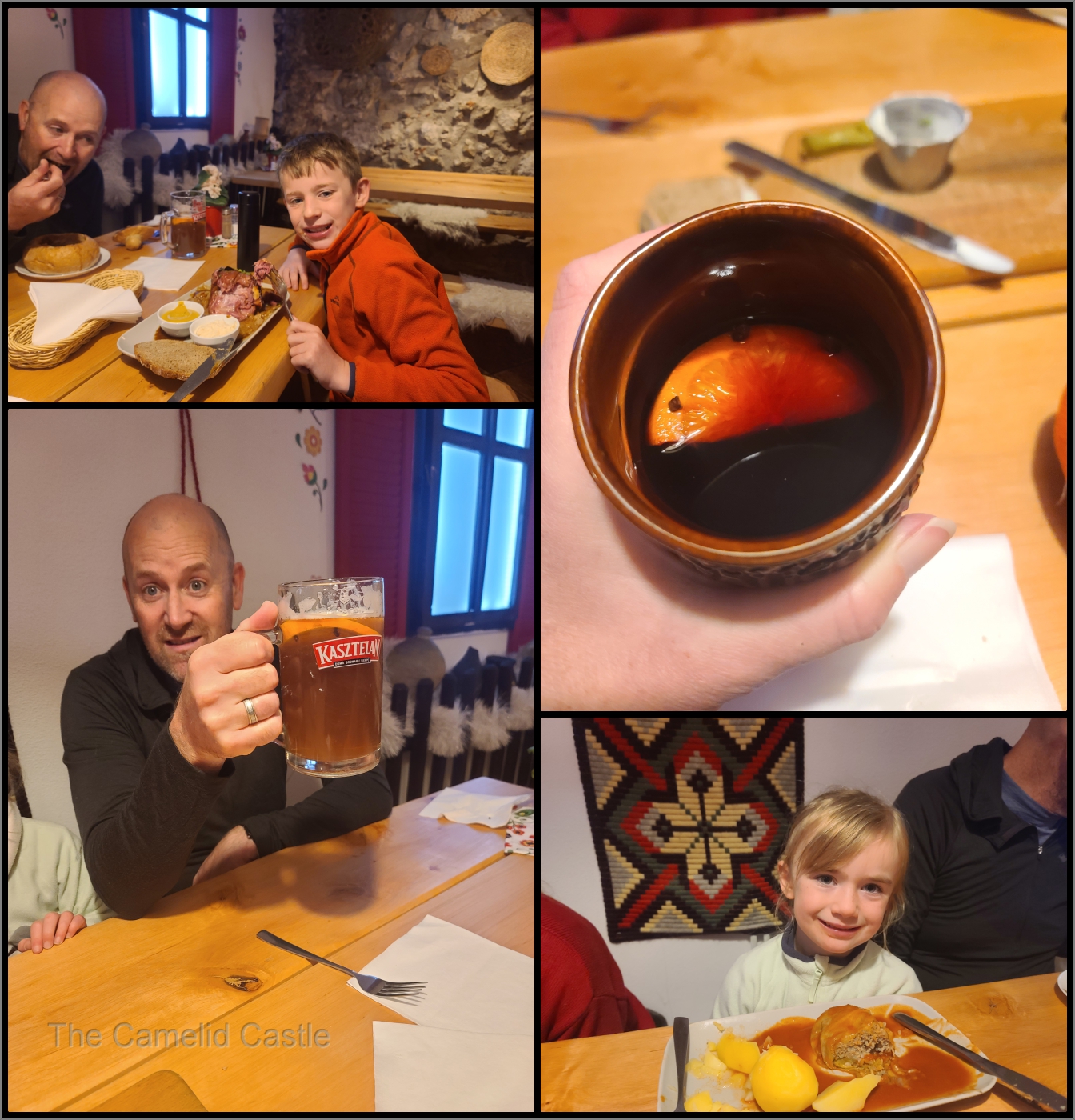
Back to the cold Old Town
Despite it being still freezing, when we came out it had rained a bit and everything was slippery rather than just snowy. All of a sudden there were tourists everywhere, they’d obviously woken up!
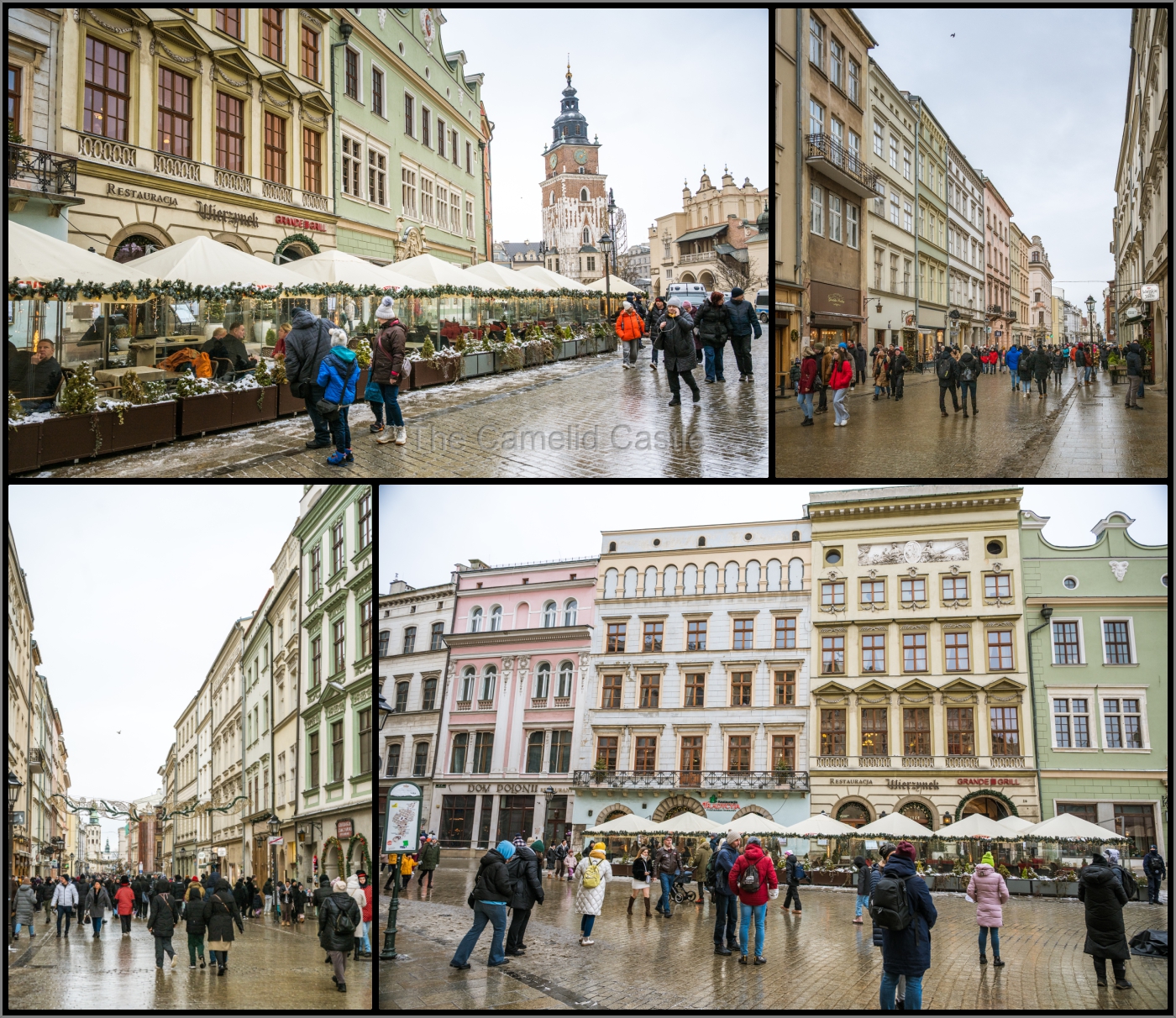
We did a bit more sightseeing in the main square and on Floriniska Street and found that many of the pigeons had places to live within the fountains and statues.
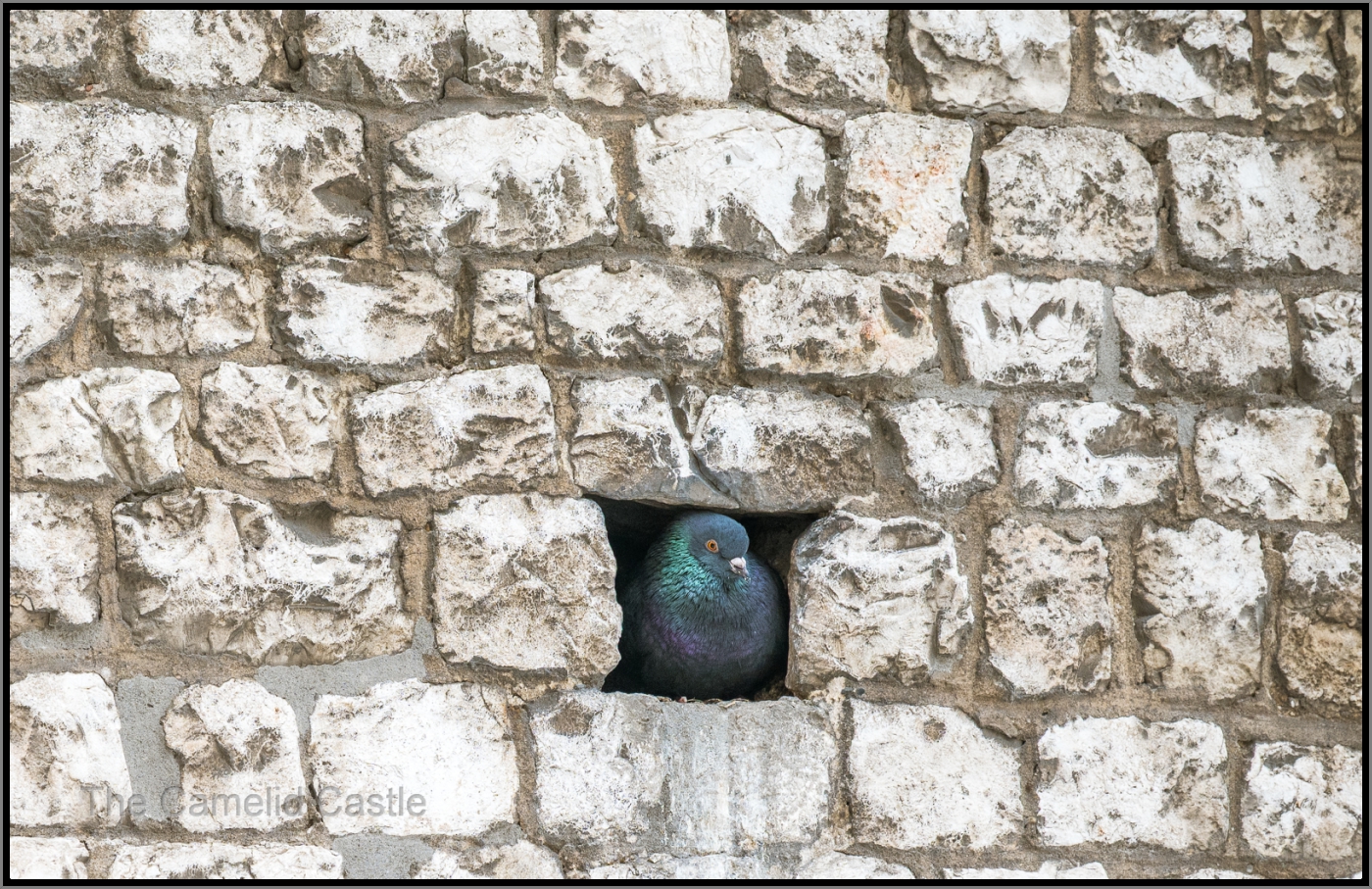
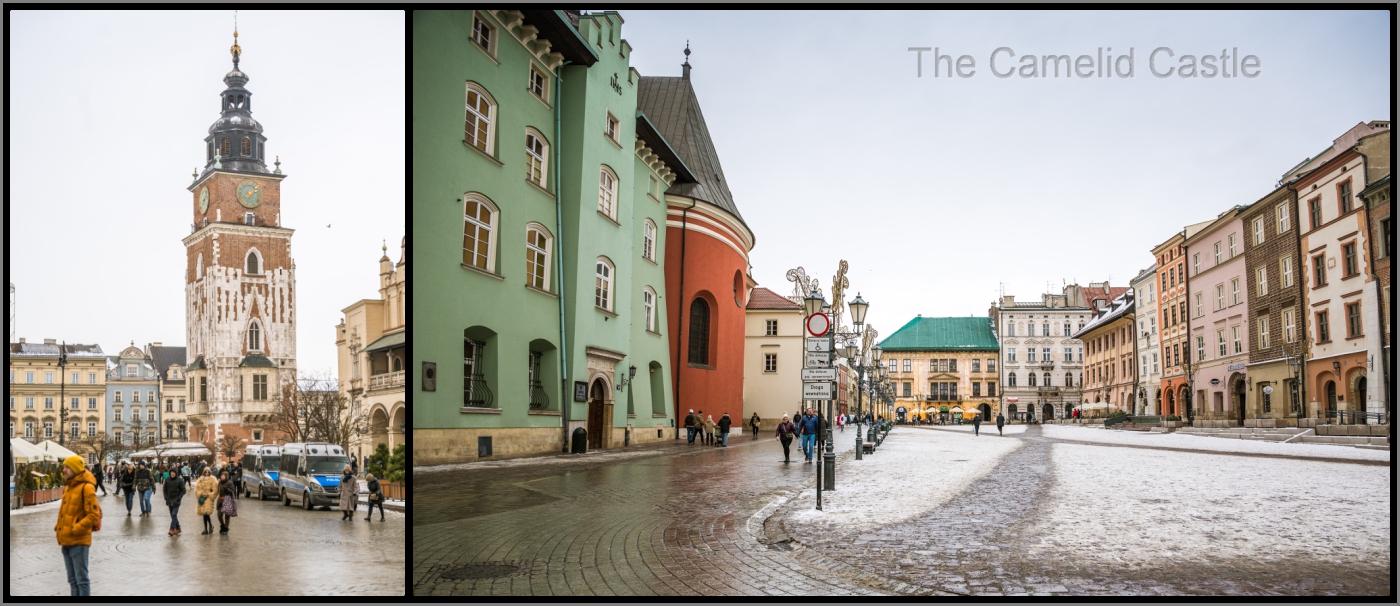
Krakow did look beautiful in the snow. We were very glad we all had our snow boots on though as it was now mighty slippery!
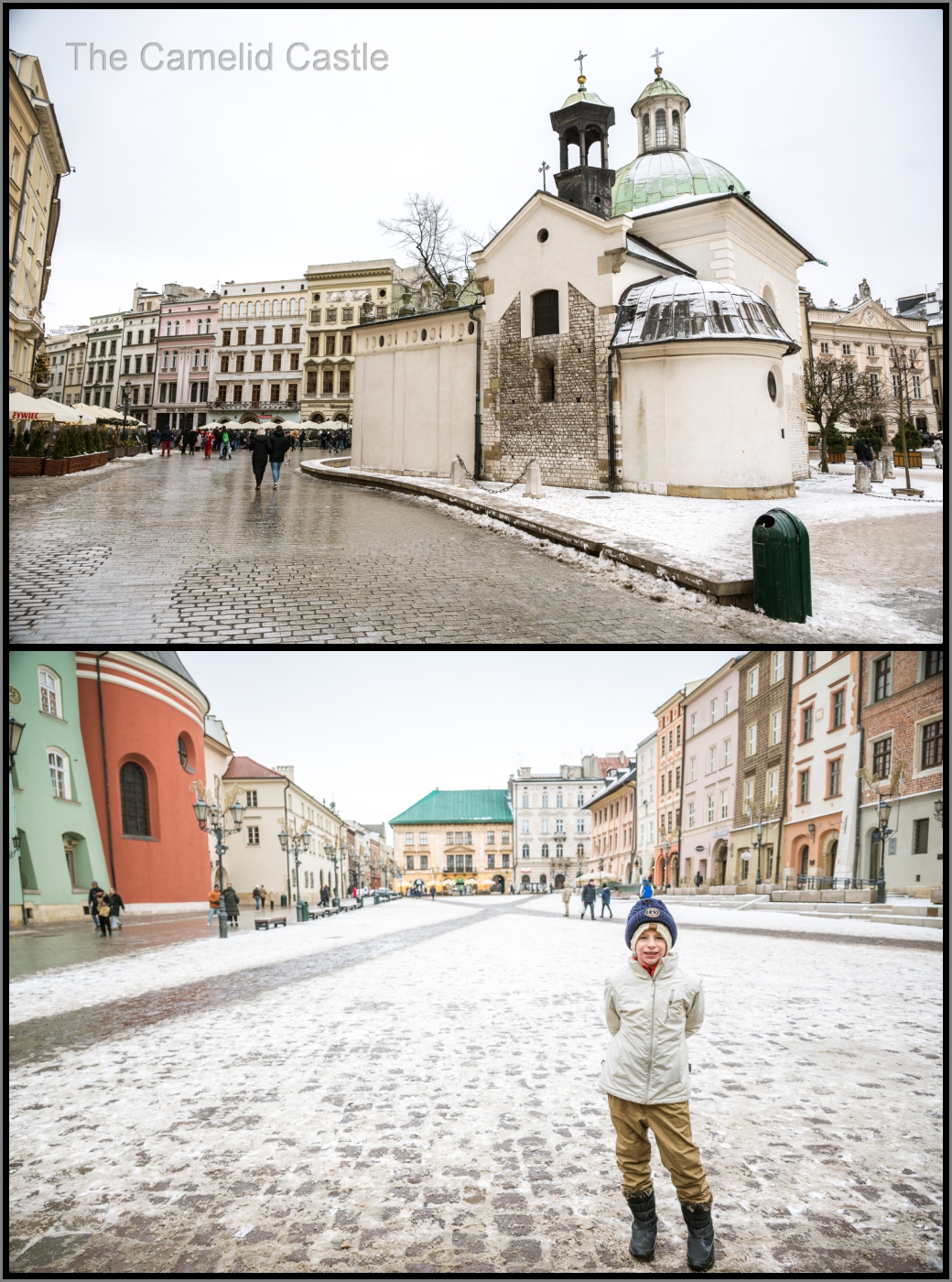
We’d walked over 9.5km during our morning outing and the temperature was still hovering at minus 3 or minus 4 , so we decided to warm up and head back to the apartment for some hot drinks.
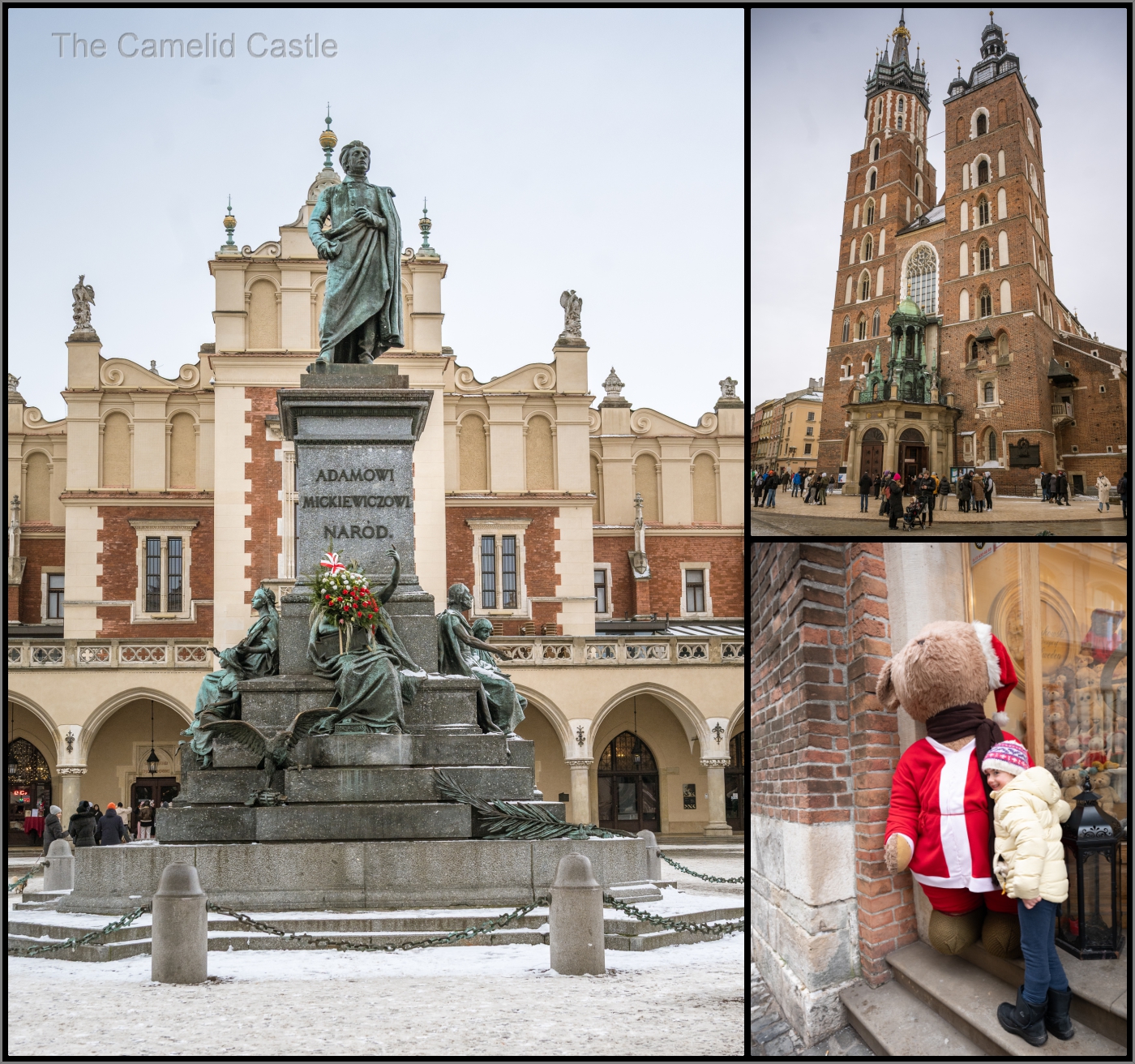
Off to the mine….
After an excellent (if cold) morning out we made it back to the apartment just after 2.30pm. With coffee and hot chocolates to warm up we thought that since we had gotten through our sight seeing so well in the morning we might as well go to the Wieliczka salt mine that afternoon to free up time the next afternoon.
We quickly booked tickets on the 4.30pm tour and our relaxing afternoon was cut short as we ran across the road to the train station and caught the train out to Wieliczka. Our train station adjacent apartment had it’s advantages as we were over there in 5 minutes in time to catch the train.
It was a 20 minute train ride from our station out to Wieliczka and it was starting to get dark as we jumped off the train around 4pm. It was a 1km walk from the train station up to the mine and we were getting snowed on as we were walking to the mine.
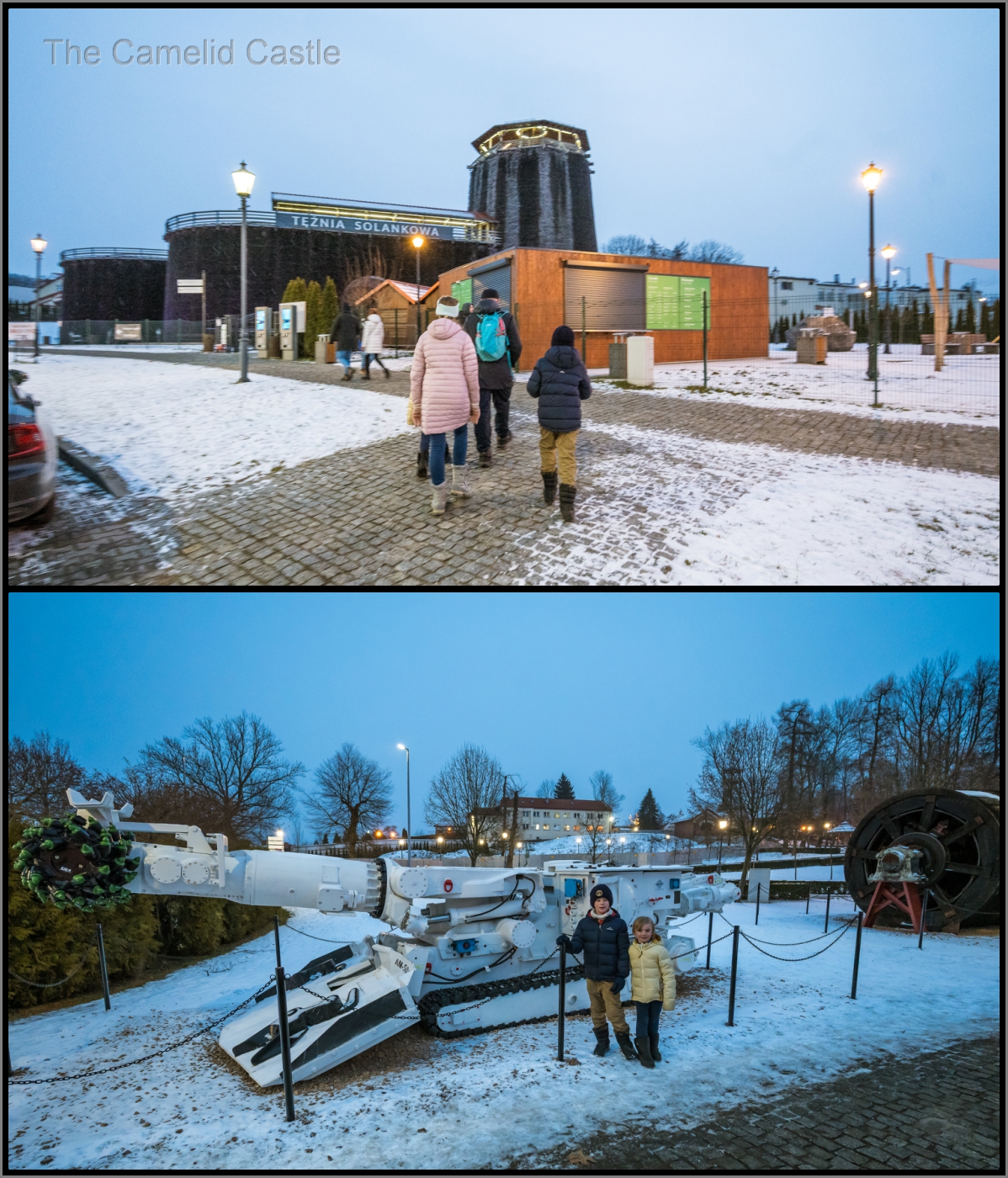
We arrived just after 4pm and it was pretty dark and still snowing. Waiting in line for our tour we all got snowed on good and proper. You need to tour the mine in a group with a guide and tours run in a variety of languages about every half an hour.
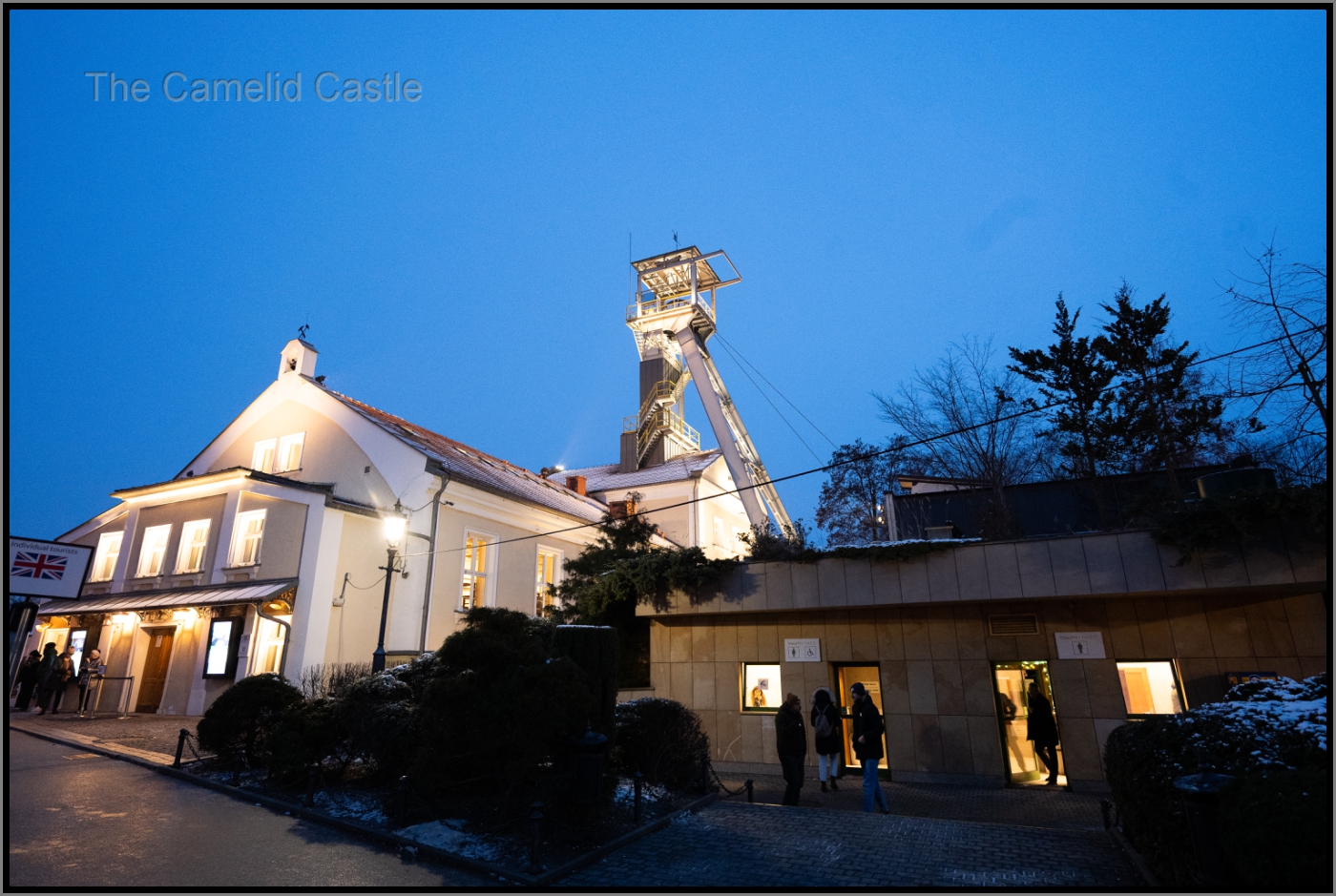
Our guide for the 4.30pm English tour was Thomaz and he was great, very informative and he had a good sense of humour about the difficulties of being Polish and their complicated history in the wars, and generally being stuck geographically and politically between Germany and Russia.
We had around 35 in our group, although our kids were the only kids in our group we did see kids in some of the other foreign language groups.
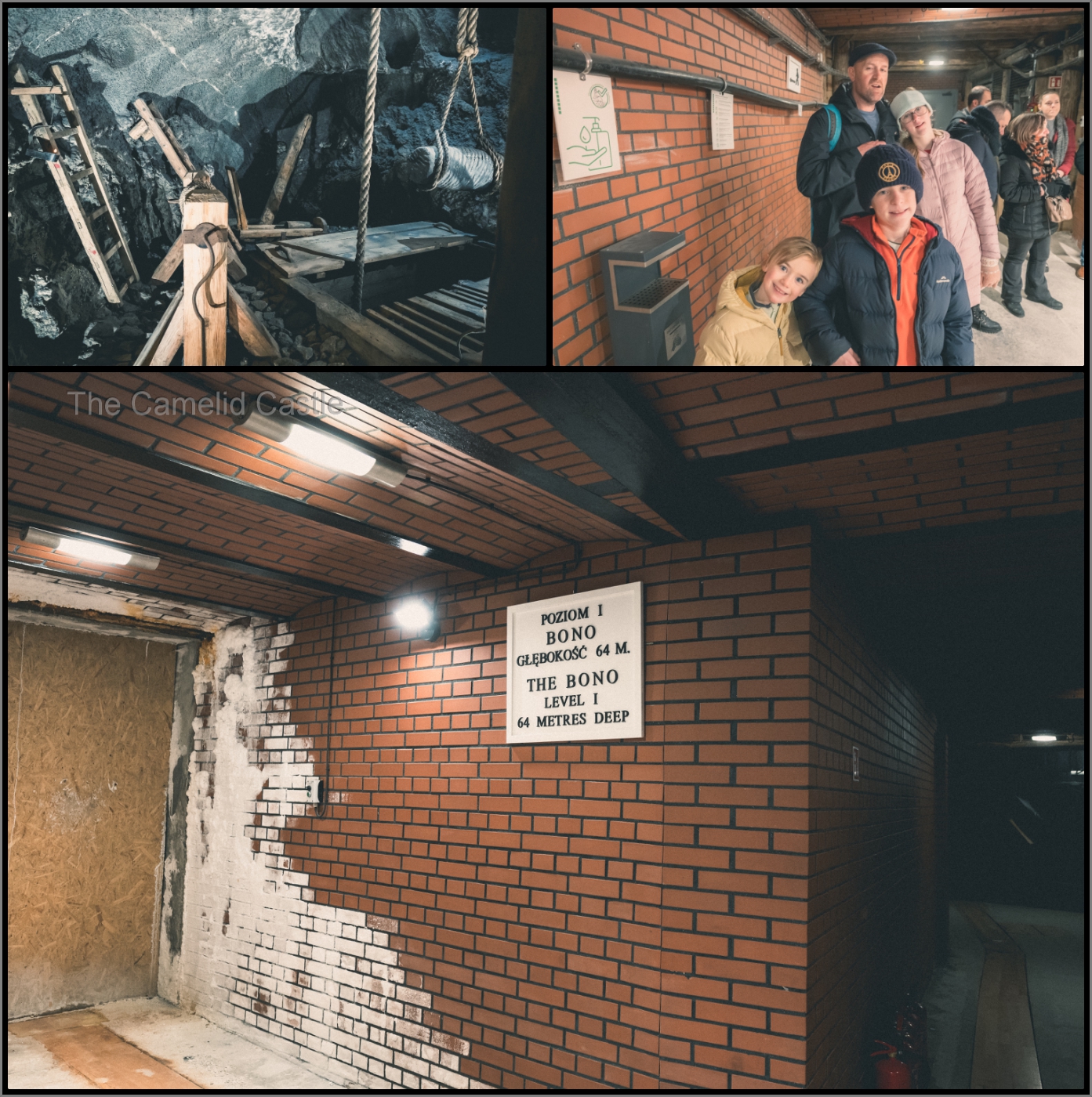
Down we go….
The tour lasts 2.5 to 3 hours, and is entirely underground. There are two different tour types you can take – the tourist route and the miners route. The minimum age on the miners route tours is 10 and you spend a fair bit of time in the dark. Soren was rather keen on that tour but Zinnia was too young so we decided we should do the tour we could all do together. We started with our 300 step descent to the first level. That is a fair lot of stairs in one go!

The 300 stairs take you down 64m and the temperature in the mines is between 14 and 16 degrees, which was at least 20 degrees warmer than the current outdoor temperature. We did start stripping off layers with us adults strapping everyone’s coats, jumpers and beanies to our bags. We looked quite amusing by the end of the tour.
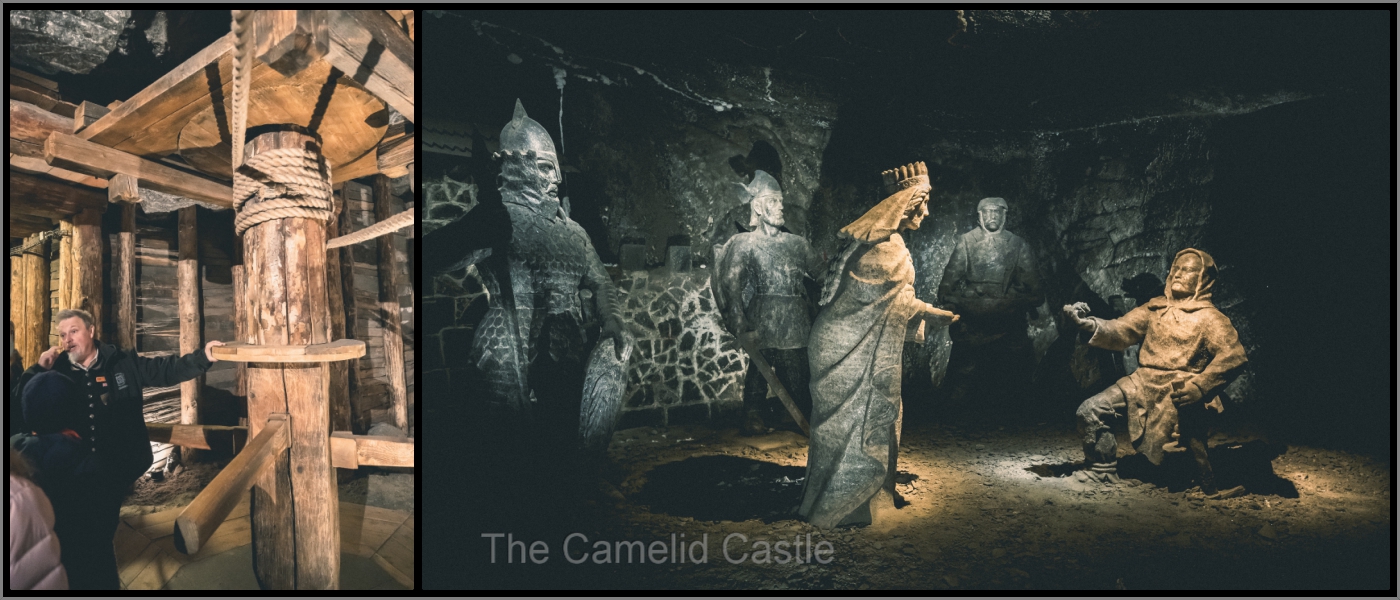
The sections of the mine the tourist route takes you on are well marked and lit as you move through them. We learnt about the history of the mine and the mine workers. The mine was originally excavated in the 13th century and produced table salt continuously until it falling salt prices and mine flooding closed the commercial operations in 1996.

The history of the mine was fascinating. There were original machines still down there including many of the horse driven ones. The horses that used to work in the mine had a hard life, they were taken down when working age and lived underground their entire lives and walked around in circles all day. The people who worked there didn’t have it much better but did get a beer at the end of the day.
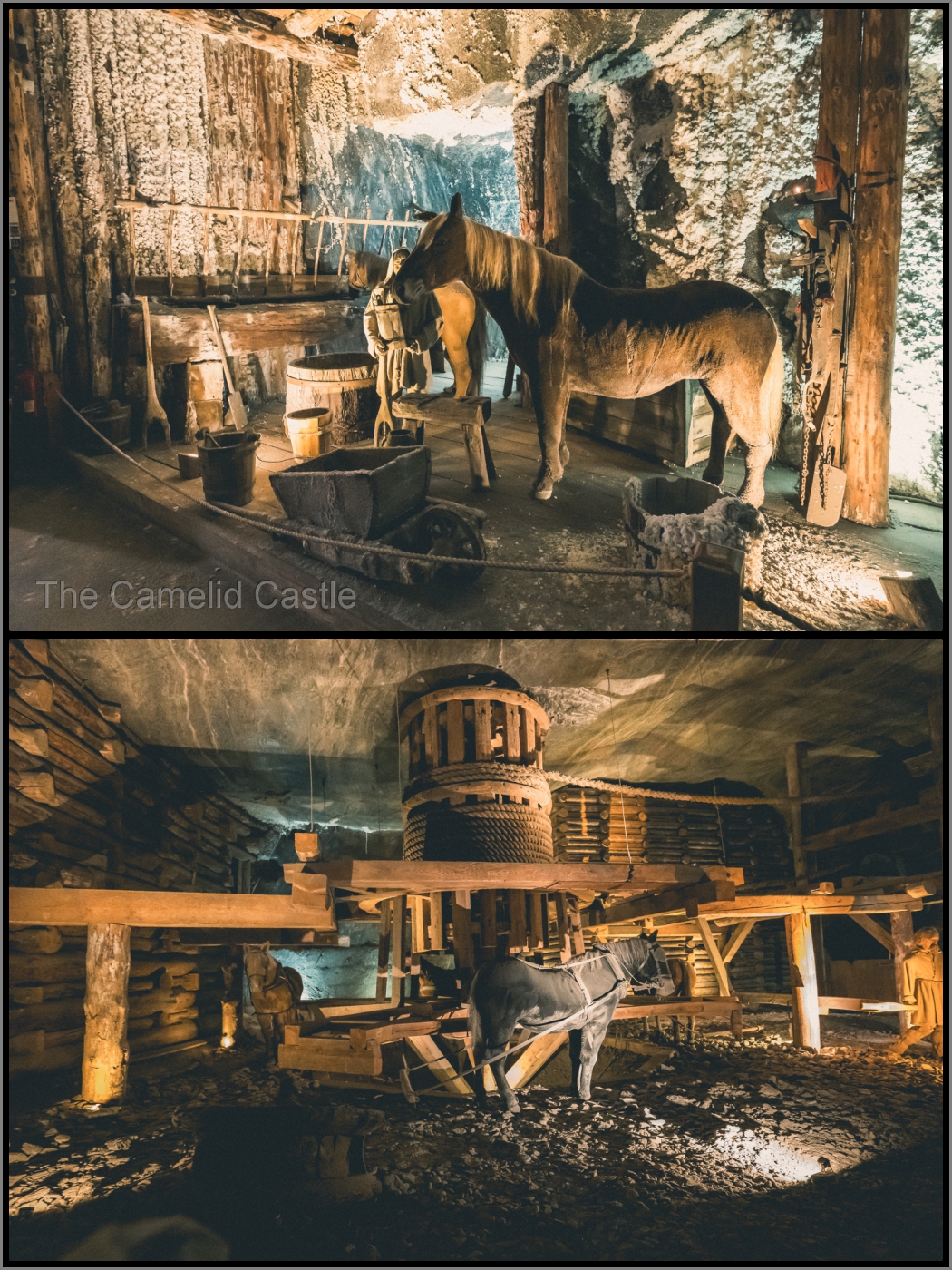
As we continued our trip through the various levels we got to descend further and further into the mine. The mine is a UNESCO World Heritage site and has been beautifully preserved and restored.
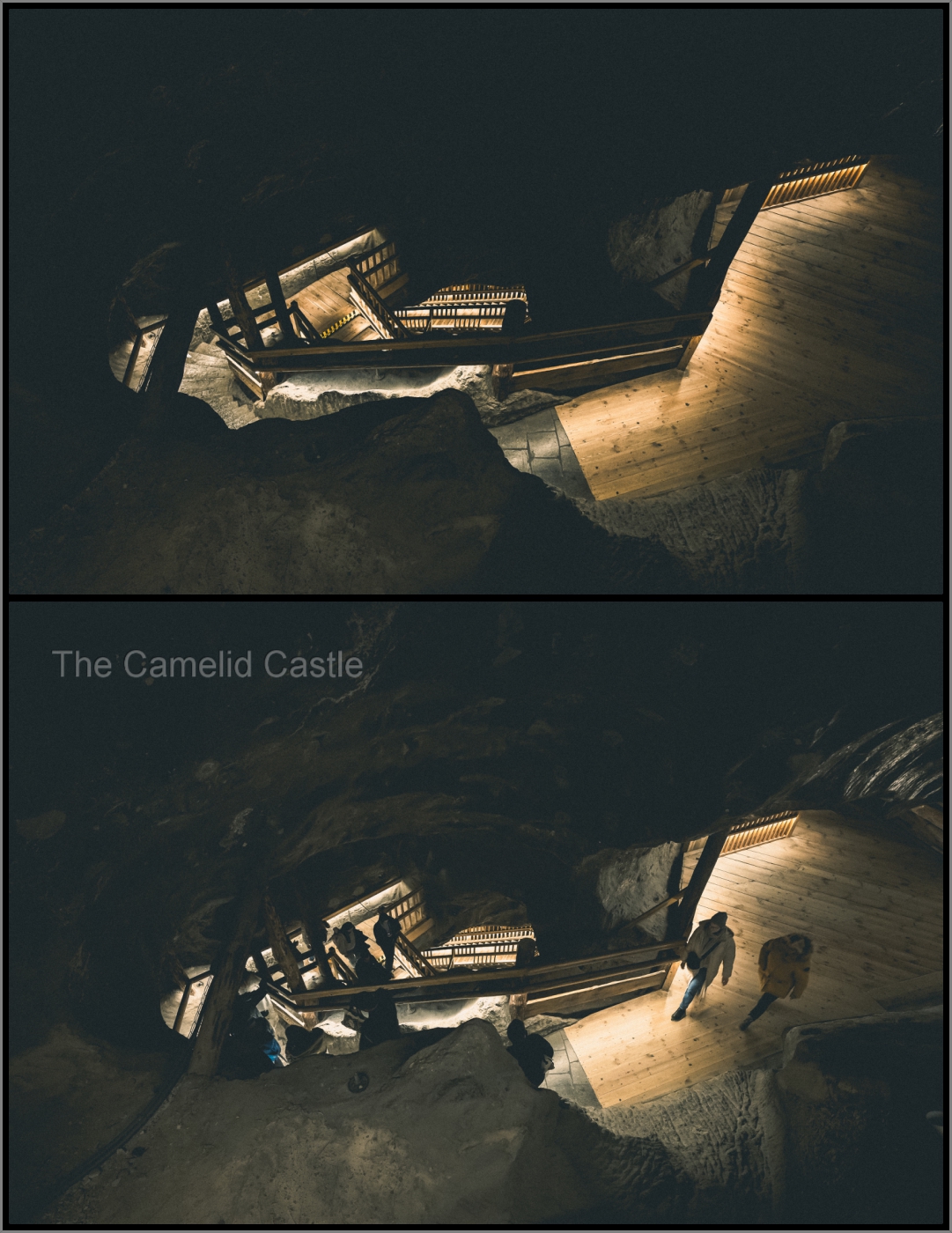
The visitors route stretches 3.5km but this a total of less than 2 percent of the mine passages total length. There are a total of 287km of tunnels, so we were warned not to wander off! As we passed through different areas we saw many exhibits on the history of salt mining and many contained statues carved from the rock salt as well as chapels.


The beautiful chambers…
The second level was full of many beautiful chambers including the famous St Kinga’s chapel. This chapel is often booked for weddings and it’s apparently very popular to get married this deep underground.
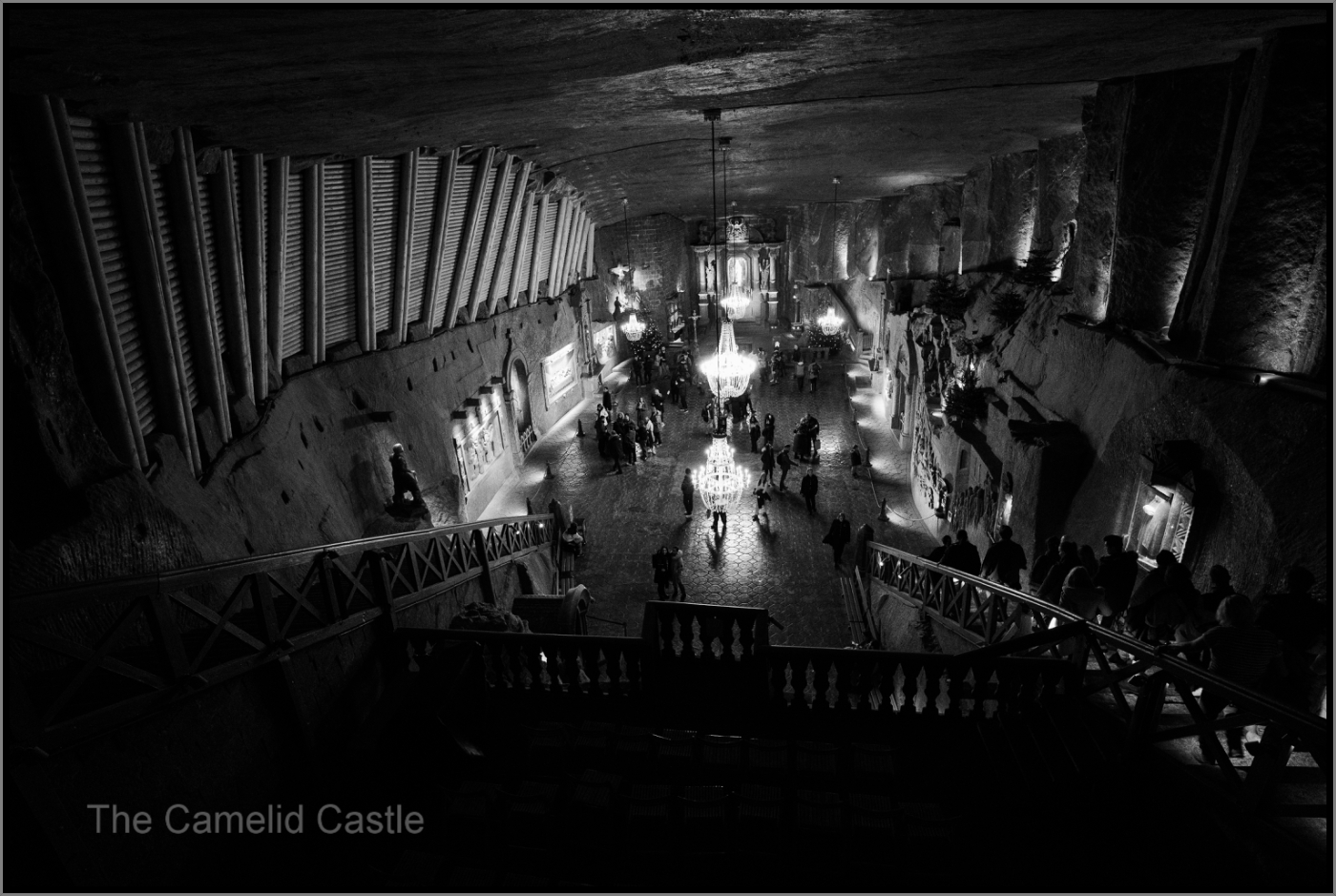
It’s also common for orchestras to perform in the mine due to the fabulous acoustics. Chopin has been one of the many famous visitors to the mine.
In fact during our tour there was an orchestral performance in one of the chambers which meant we couldn’t visit some of the regular sections of the tour and got to see a few different areas instead.
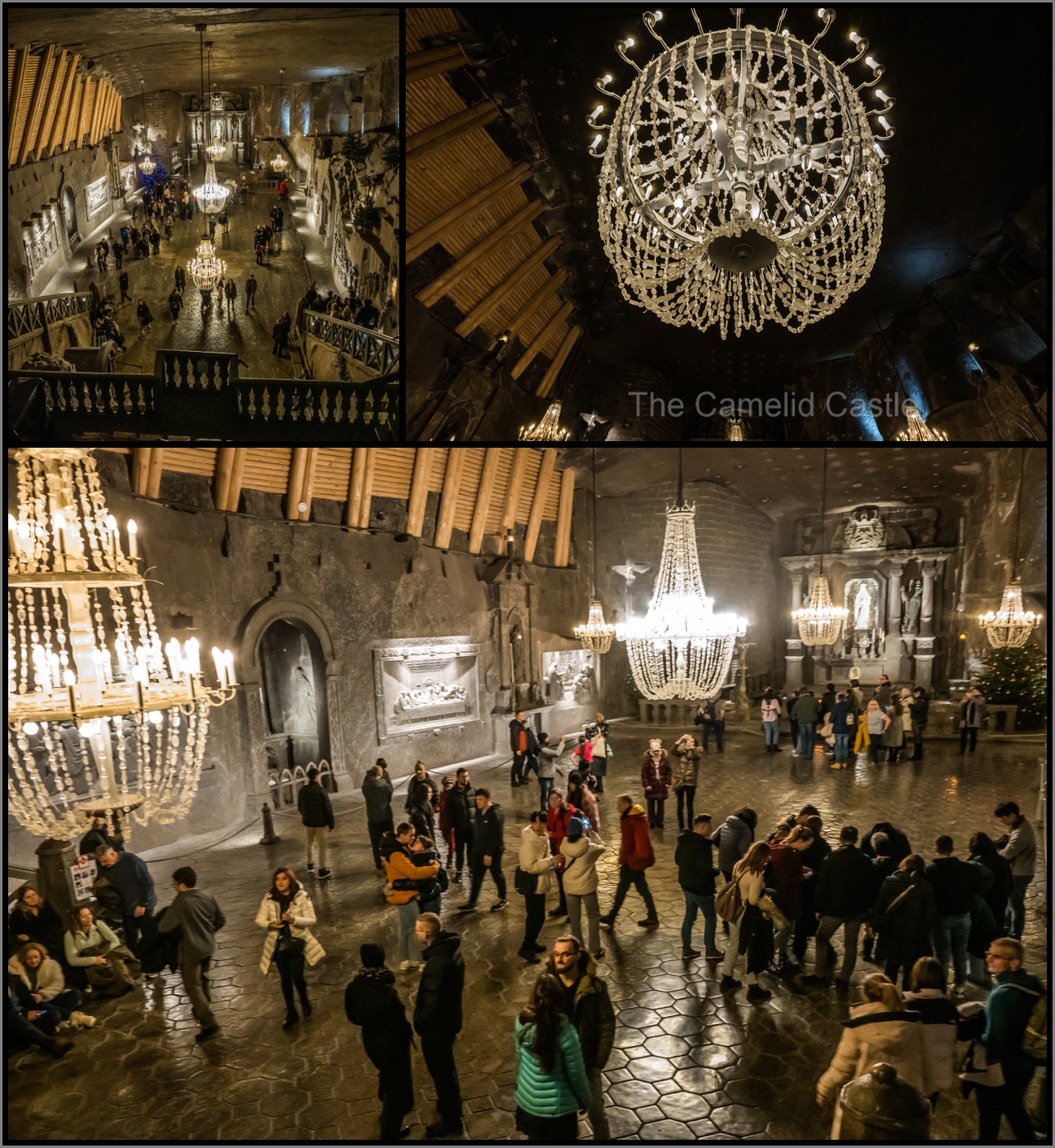
The St Kinga chapel was beautiful and the detail in the stone work amazing. The chandeliers were rather impressive too!
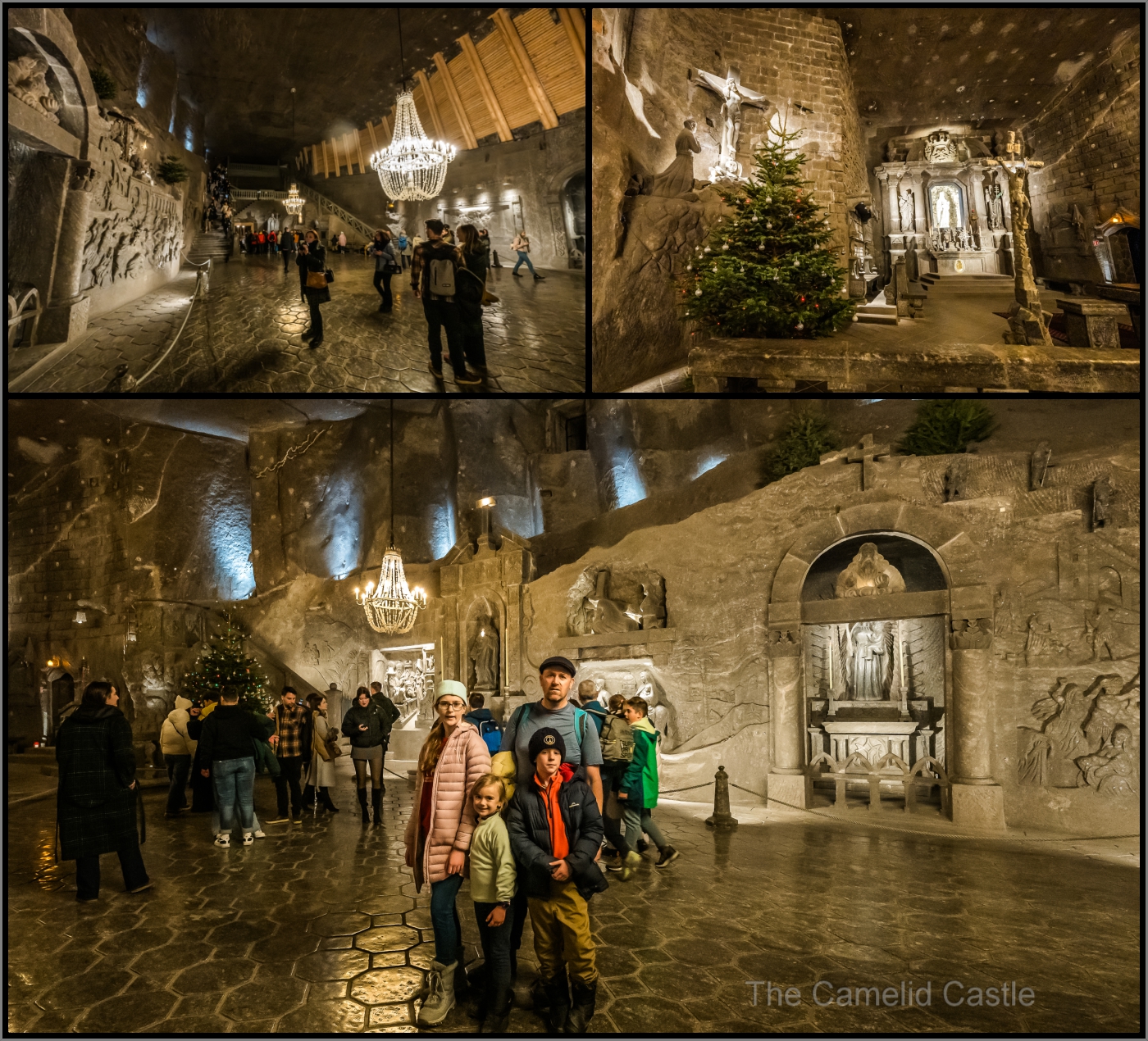
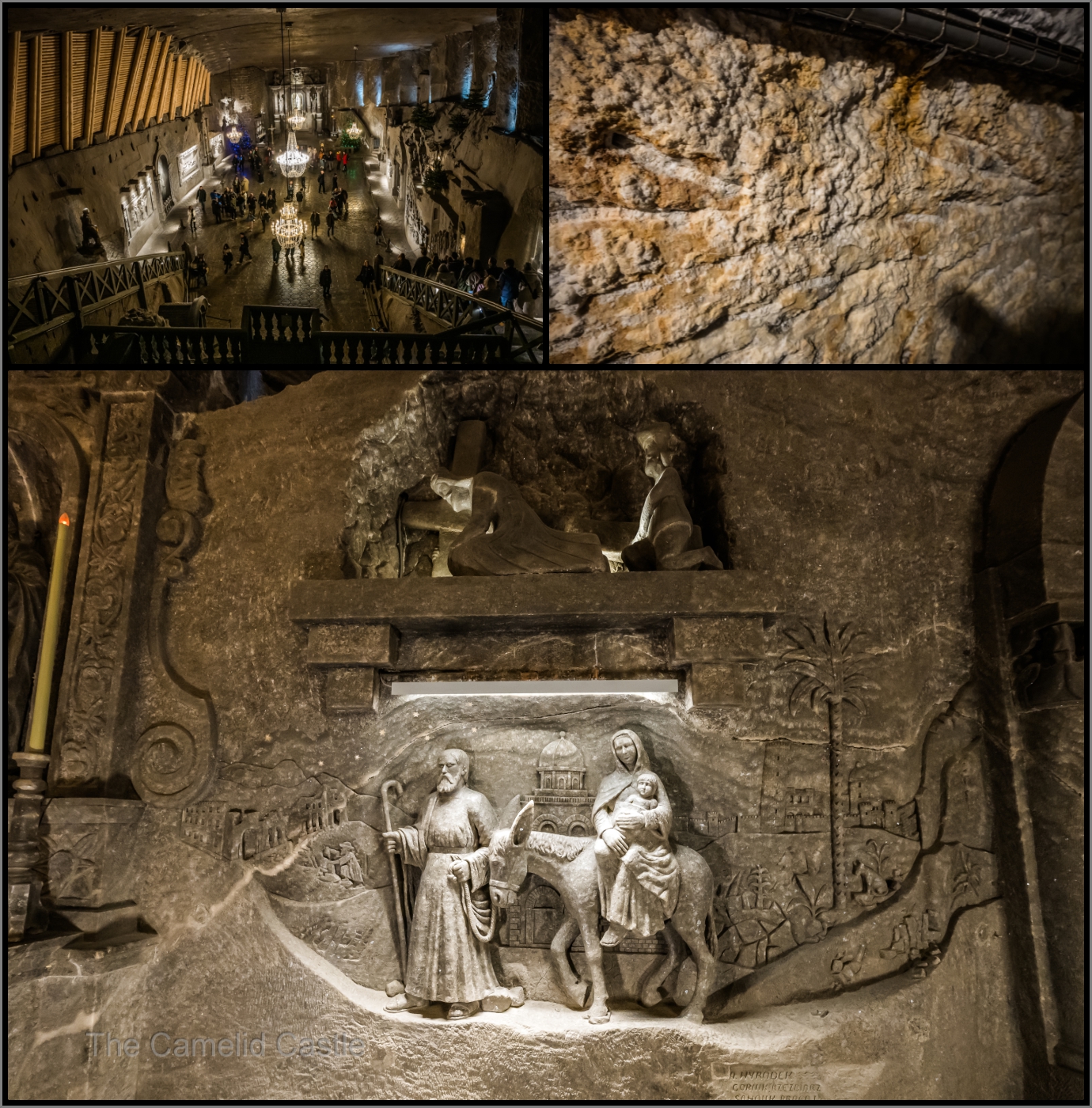
The mine also includes an underground lake, which is a rather impressive green colour!
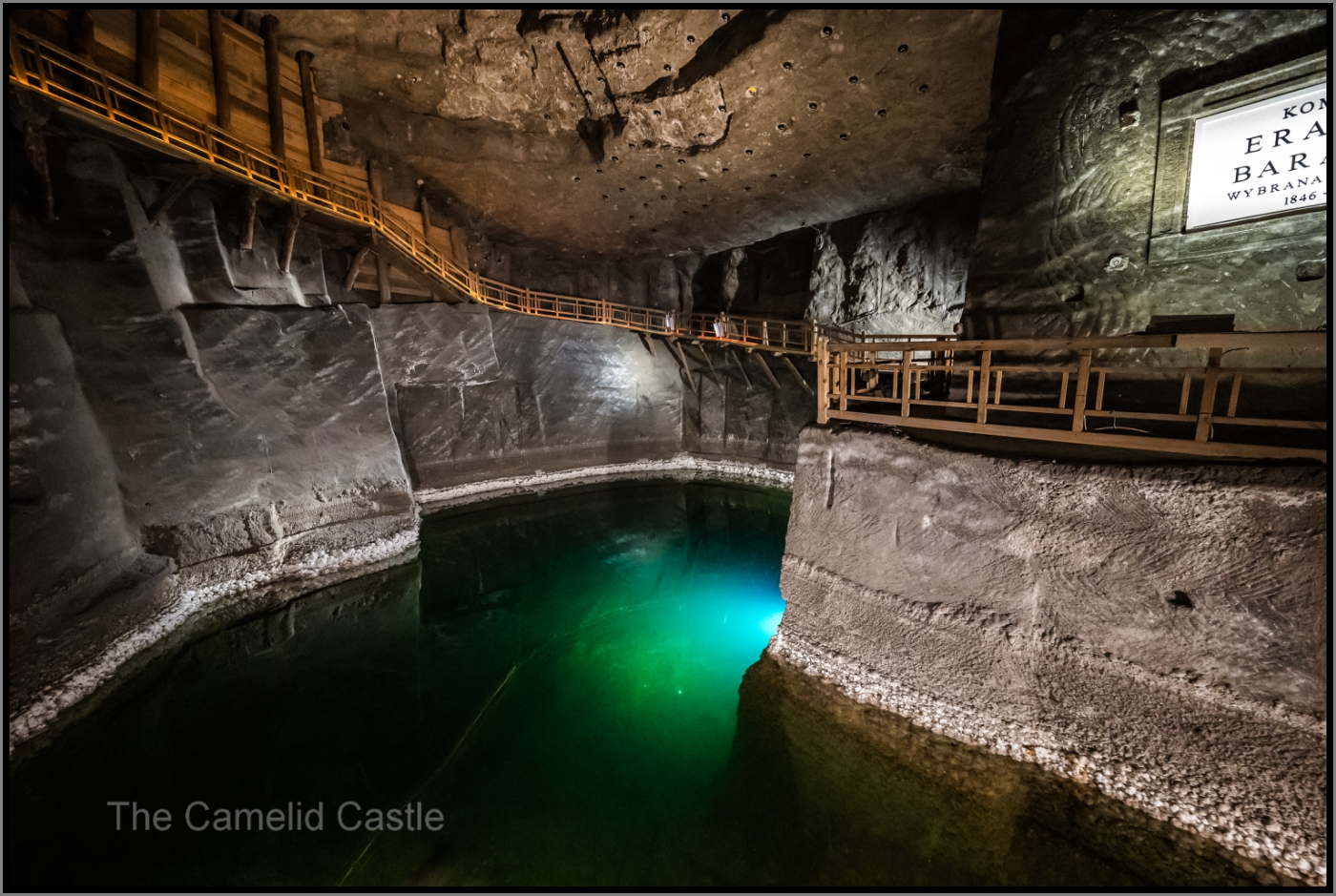
We continued to get our steps us as we descended downwards. By the time we were on the second level we were 110 metres underground.
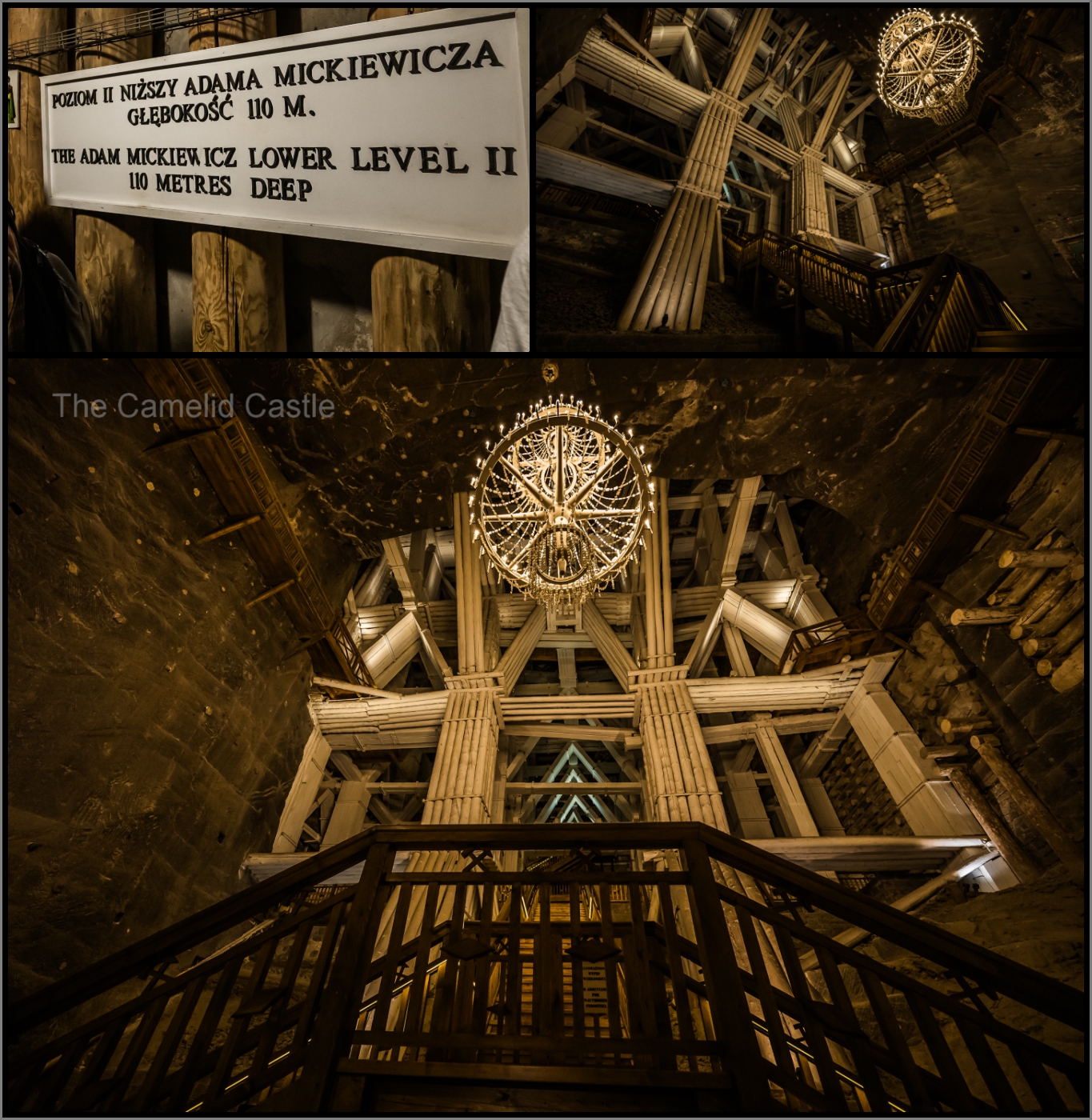
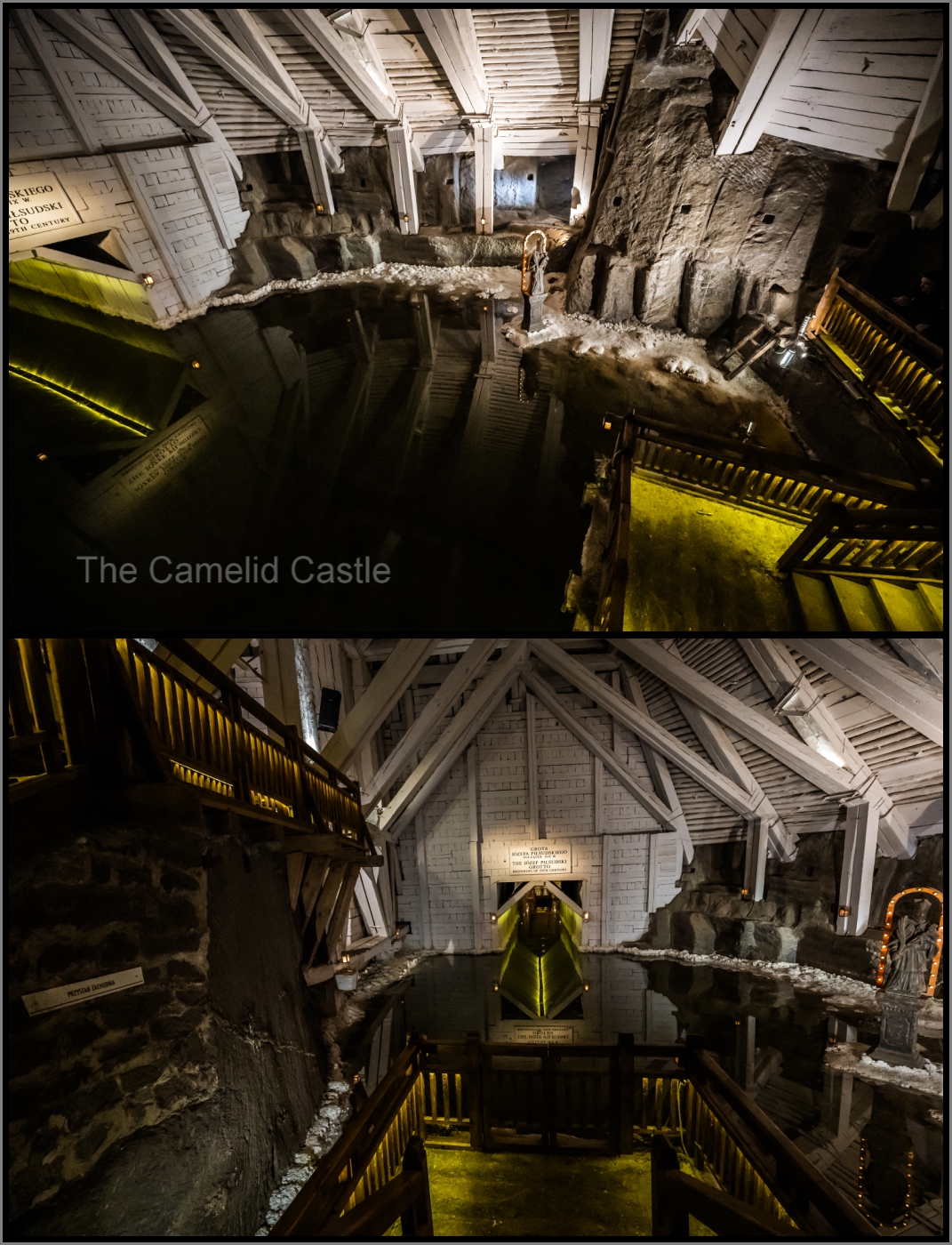
There were a variety of different chambers and they were rather beautiful and each distinctive. We wandered through many learning more about the history of Poland and the mine.
Due to the physical nature of the tour you do get a couple of breaks during the tour and there are toilets in these rest areas. There is even a museum, cafe and souvenir shop in one of the break areas which the kids managed to convince us to buy them some of the chocolate with mine salt.
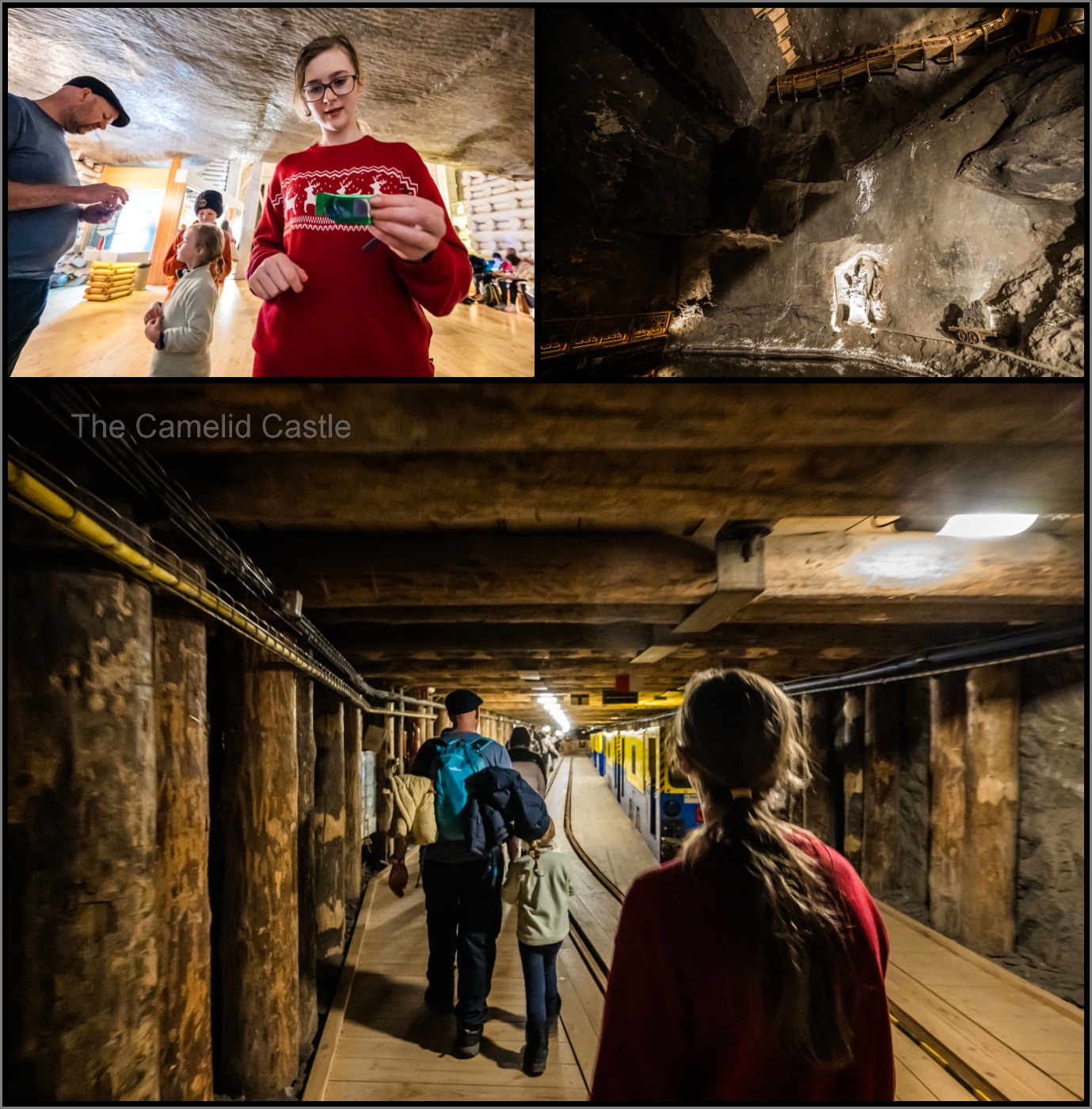
As we walked through the many tunnels you could see how you could easily get lost. It definitely wasn’t all horse power down there though. In more modern times they had more high tech equipment, although apparently the horses were still working in the mine until it stopped production.
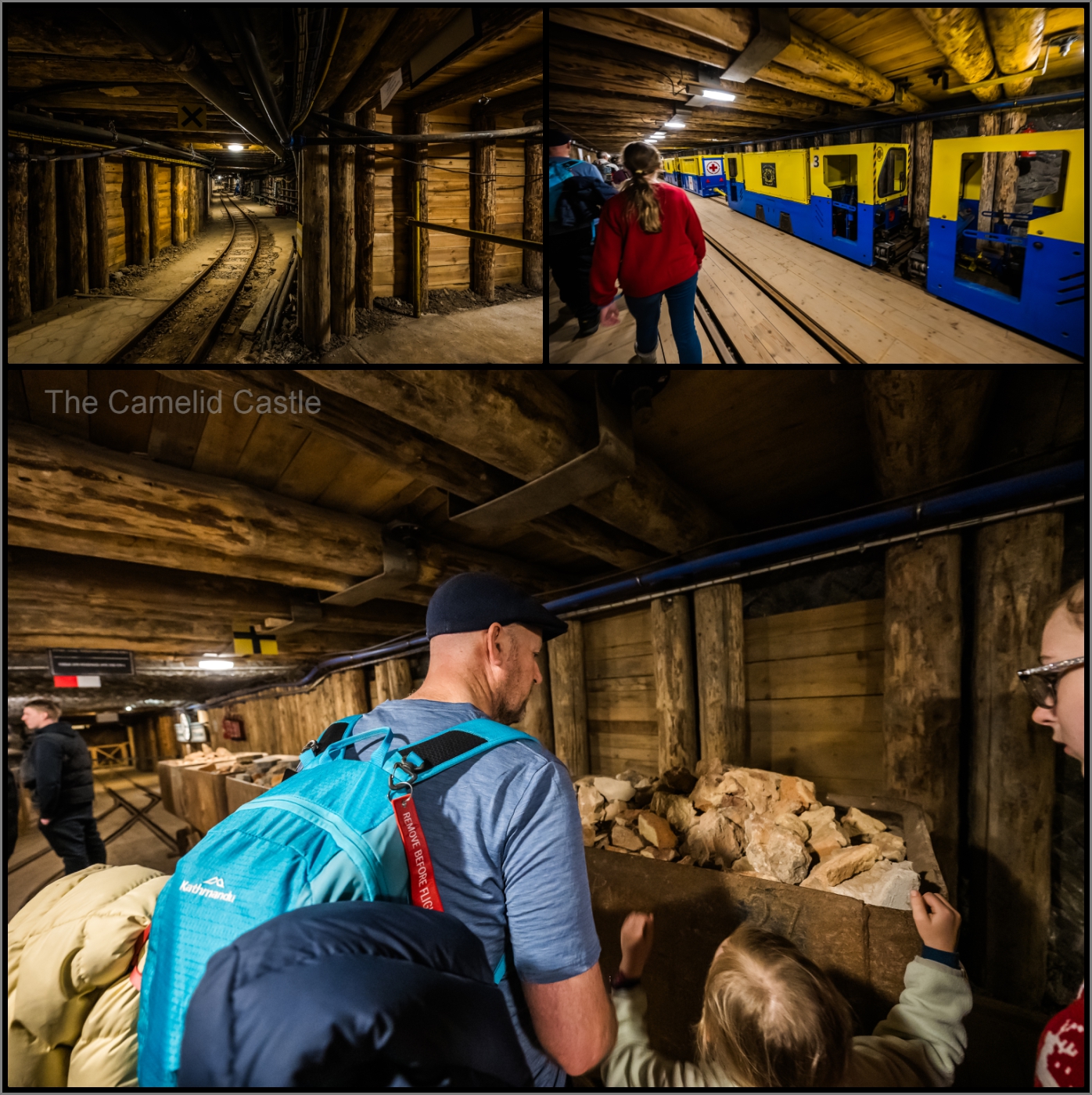
A long way underground…..
By the time we were at level 3 we were 135m underground and trying not to think how deep we were! The mine does reach a total depth of 327m but luckily we didn’t have to go all the way down there.
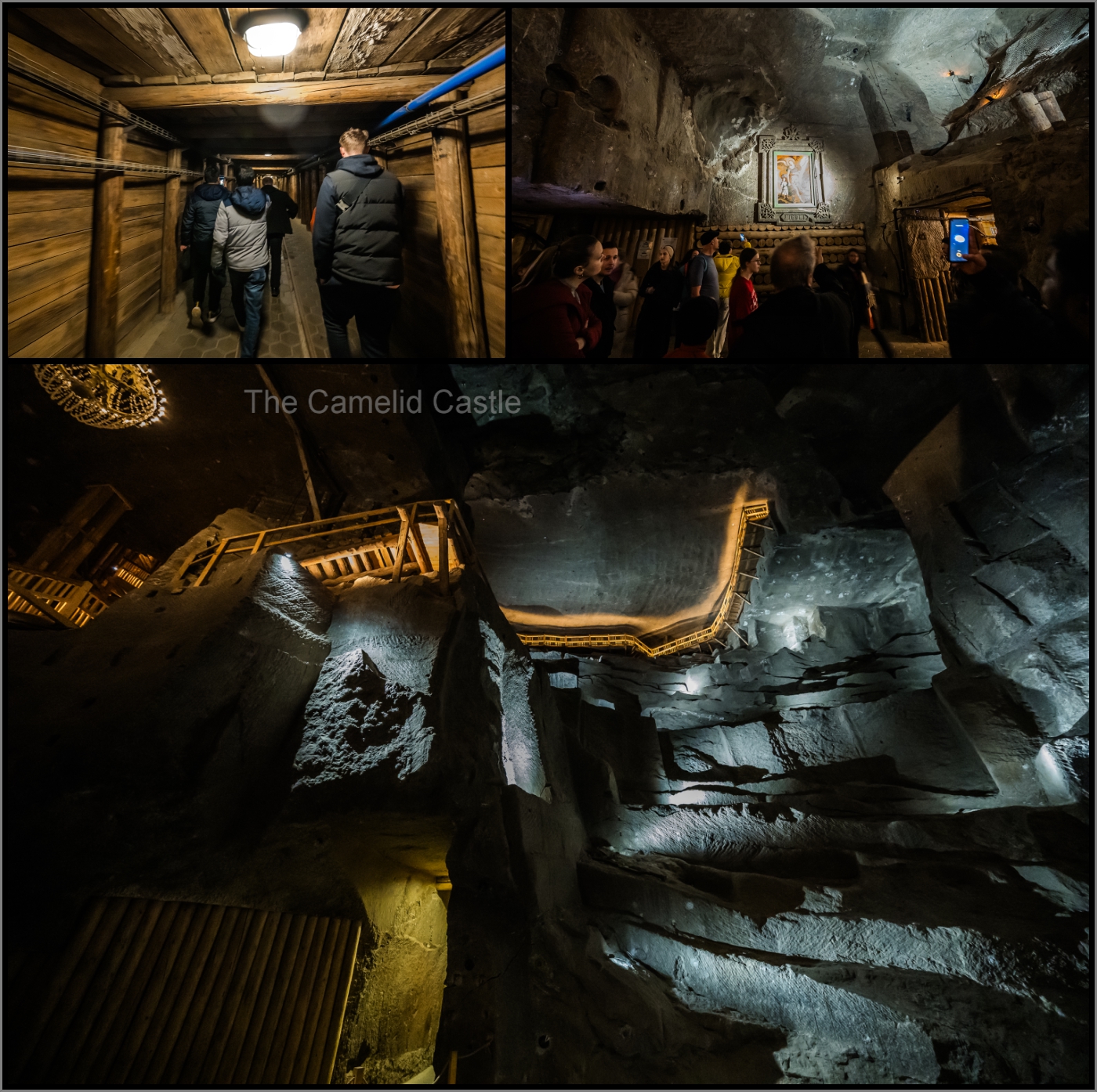
Throughout the tour there were original examples of all the machines used to take salt up. Many had been restored. It was fascinating seeing the engineering involved in getting salt from such a depth to the surface.
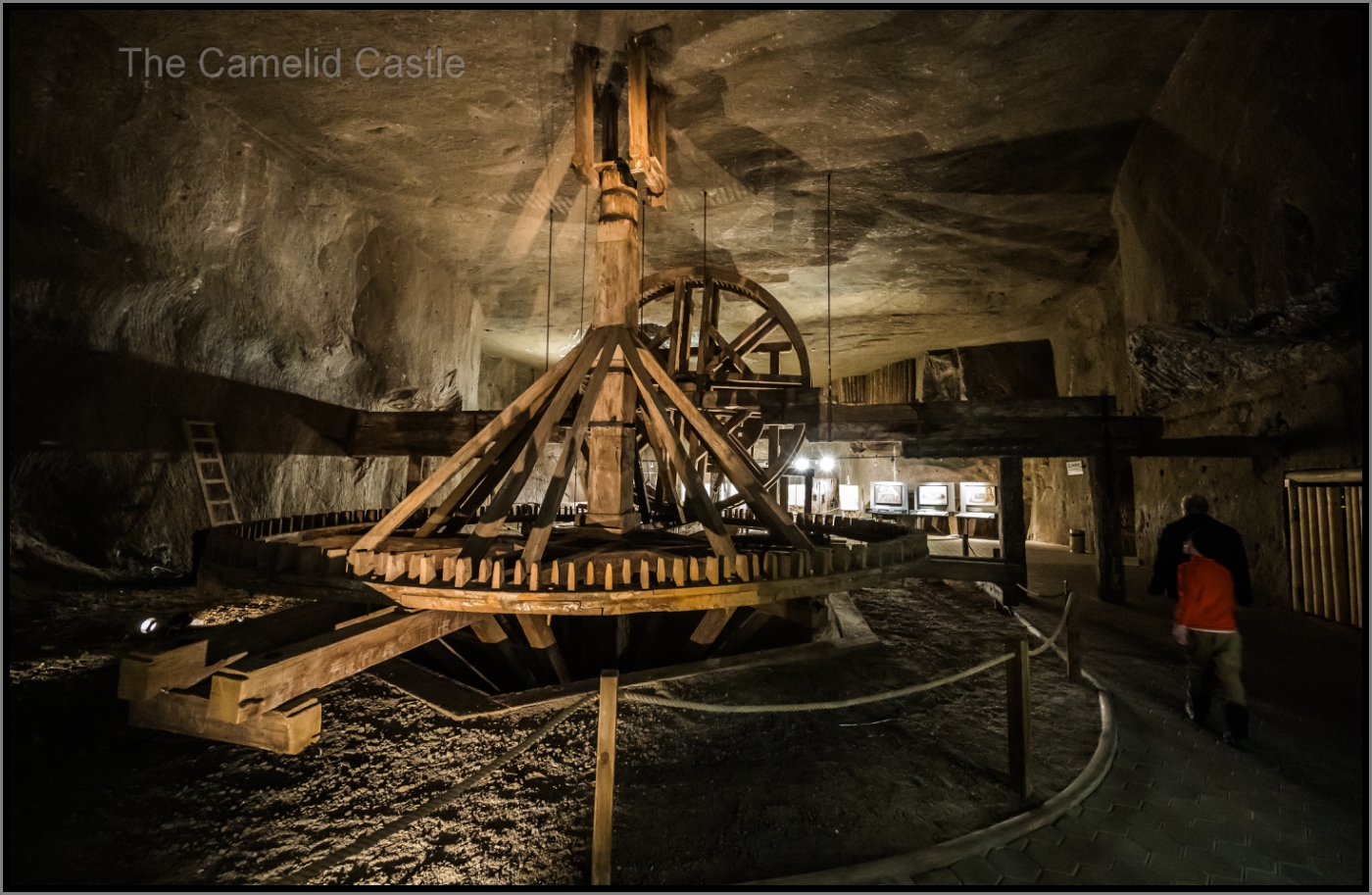
The tour had been fabulous and we had covered over 3km of walking through the tunnels on top of the 800 steps down we’d taken. Luckily the kids are great walkers and all agreed it was really interesting. Thomasz had held the attention of even 6 year old Zinnia for almost 3 hours, and had happily answered any questions we had. We aren’t massive fans of organised tours and large groups but this one is definitely worth doing ,and the salt mine was very different to other things we’d visited both on this trip and other European adventures. It’s defnitely worth checking out if you are ever in Krakow.
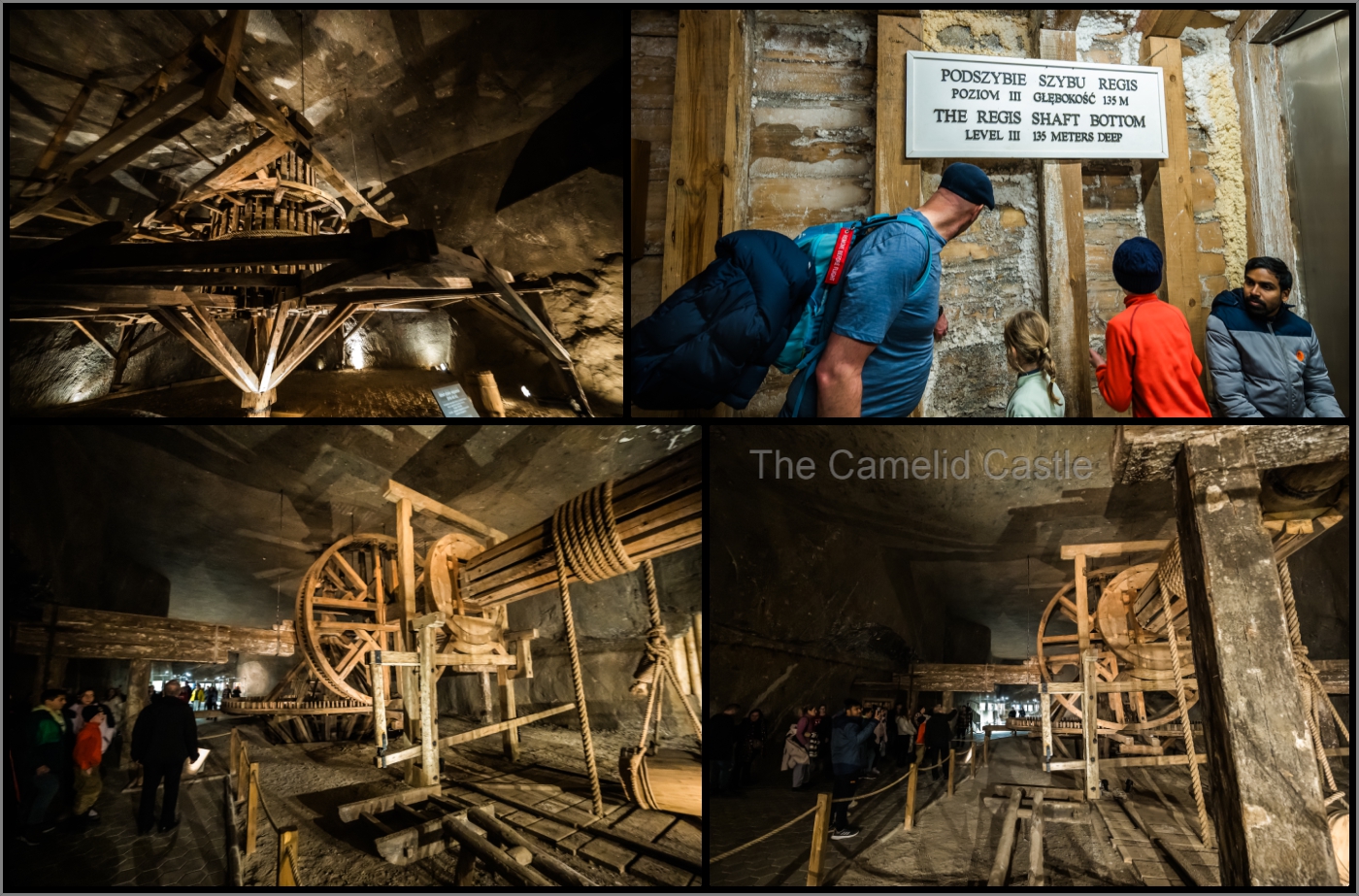
Despite having to descend the 800 stairs during the tour there is a lift back up. We pretty quickly were back to the surface, where we emerged just after 7pm. Given it was dark and snowing when we went in you could have told us it was now midnight and we would have believed you.
We found our way back to the train station and luckily didn’t have to wait too long on the outdoor platform for the train to appear to whisk us back into Krakow.
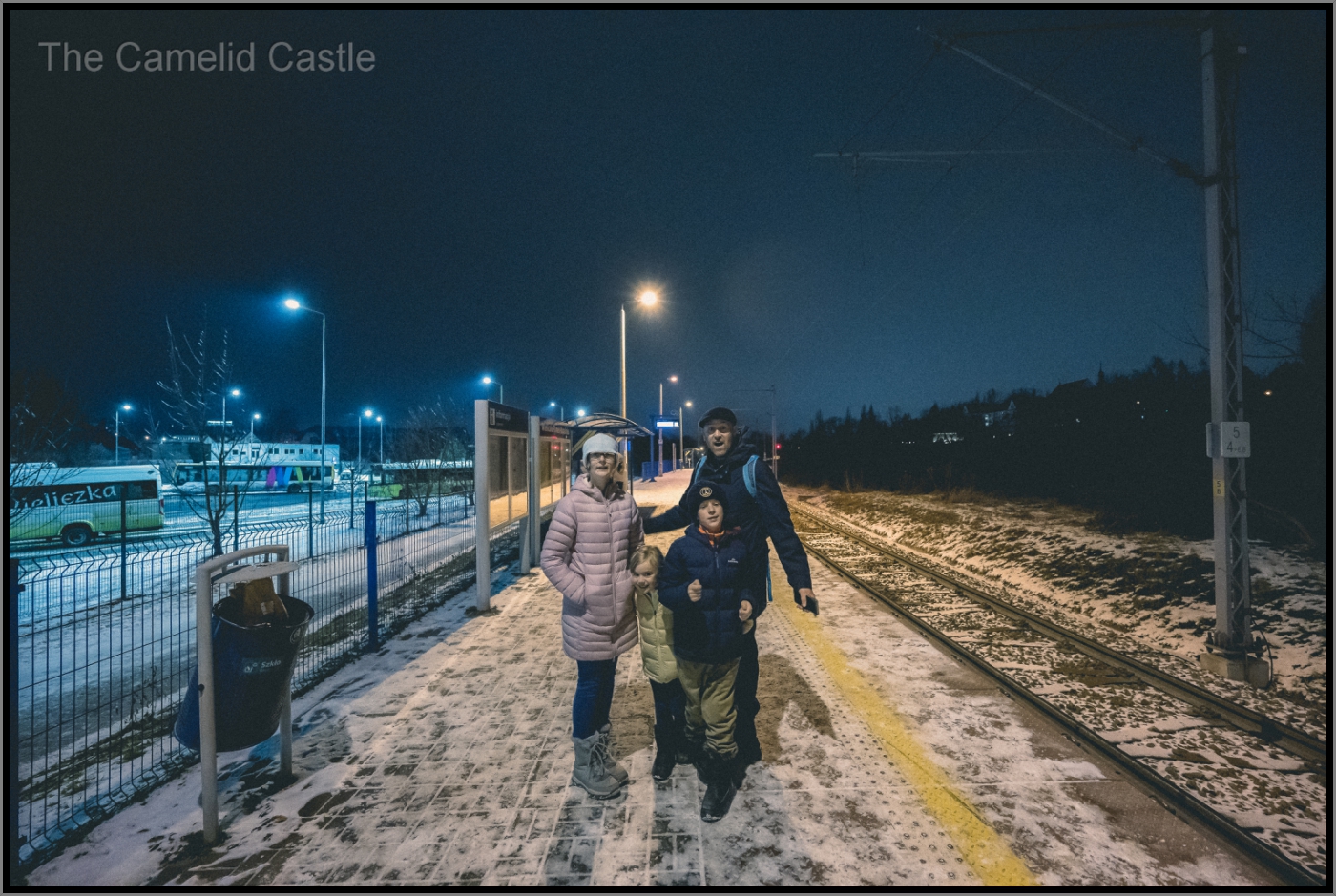
It was still minus 4 as we got back into our apartment and after a huge day of walking the kids voted for dinner in the apartment. We had racked up close on 20km of walking for the day and 30-40 thousand steps depending on the size of legs, so none of us were keen to go out to a restaurant. So we found some packets of soup and Käsespätzle we had in our supplies and rustled up a dinner.
It had been a fabulous day of sightseeing in snowy Krakow but when the temperature started at minus 10 overnight and never got above minus 4 it had certainly been another cold one. We were looking forward to seeing more of cold and snowy Krakow the next day.
Up next
More snowy exploring in Krakow, with tasty treats and a visit to the Jewish quarter where we test out Polish chimney cakes. Anto takes a day trip to Auschwitz and we enjoy plenty more Polish food.
